You are using an outdated browser. Please upgrade your browser to improve your experience.

Live fully in Vietnam
Vietnam opens its door widely to welcome visitors all around the world! Starting from 15th August 2023, Vietnam extends e-visa validity to 90 days and unilateral visa exemption will be valid in 45 days! We are more than happy to welcome you all here and admire our stunning landscapes, free your soul on white sandy beaches, experience our unique and beautiful culture and meet the people in the most friendly country. Particularly, to indulge in our scrumptious cuisine at Michelin rated restaurants or to join us in outstanding mega culture, music, sports and tourism events! Let’s live to the fullest in Vietnam!
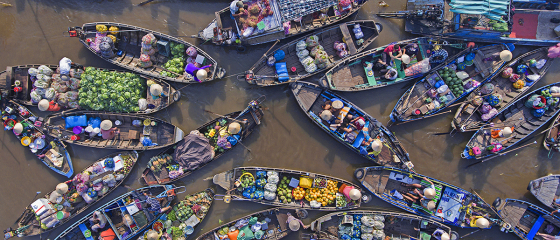
City Breaks
Can Tho: A glimpse of river and garden
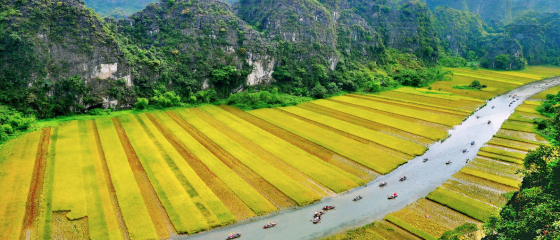
Virtual travel to Trang An Landscape Complex
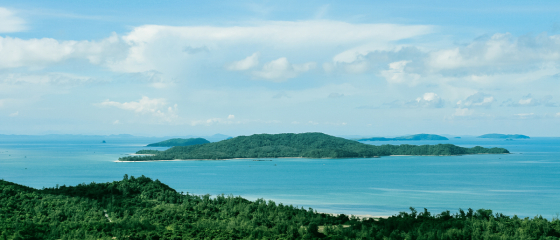
Go green in Co To
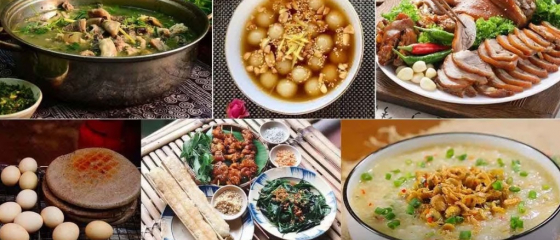
Local unpacked: One of a kind cuisine of Ha Giang karst plateau
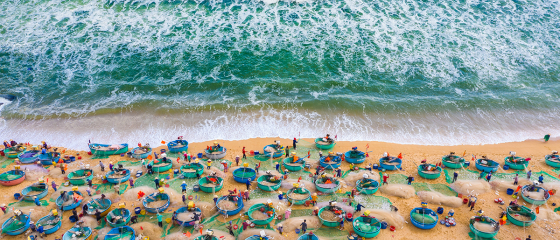
Special daily tours at the Grand Prix of Binh Dinh 2024
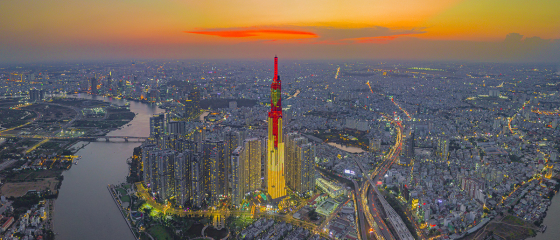
10 Tourist spots not to be missed in Ho Chi Minh City
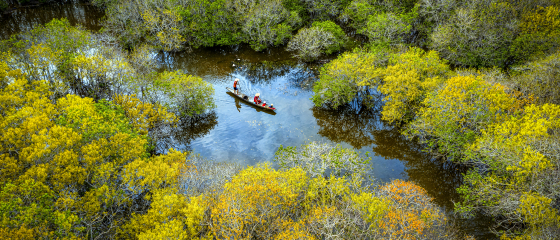
Ru Cha Mangrove Forest: A sleeping beauty of Hue
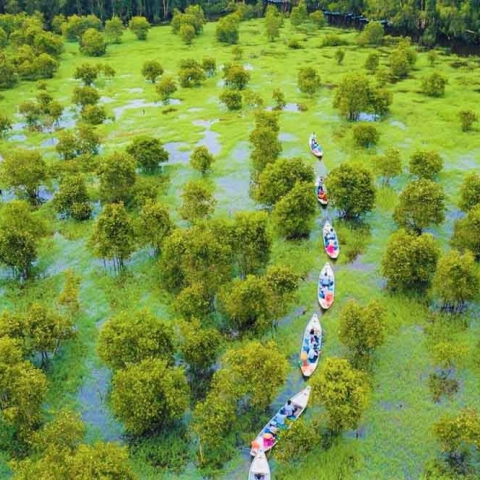
Lost in green wonderland in Tra Su Cajuput Forest
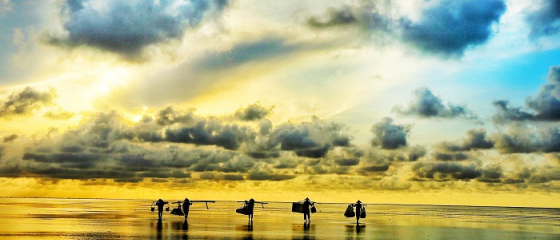
The infinity waters of Quang Lang Beach
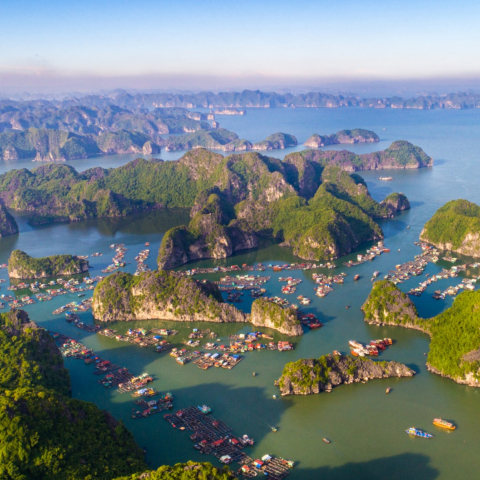
Halong Bay - Cat Ba inter-provincial World Heritage Site: Trending destination in Vietnam
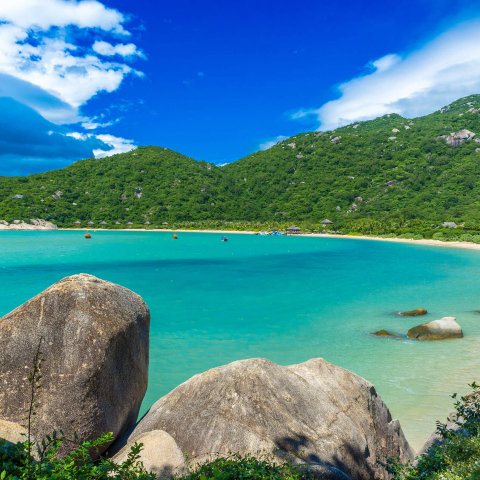
Nha Trang Best Beaches for a Sustainable Vacation
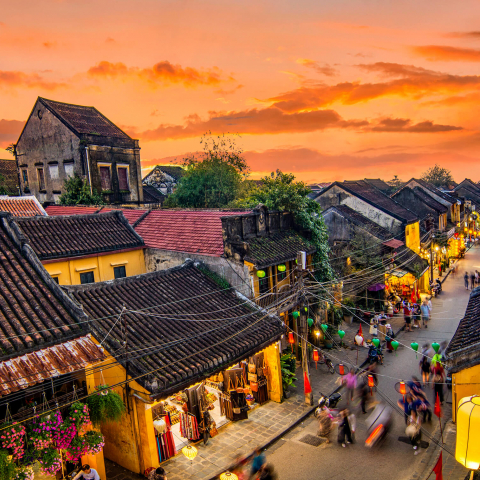
Explore the food of Hoi An
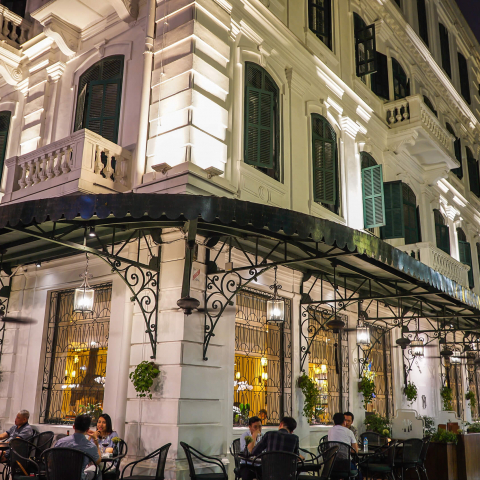
Comfort Meets Culture at Hanoi's Luxury Hotels

Outdoor & Recreational
Binh Dinh - a hot spot for festival goers in 2024

Enjoy the "Fast & Furious" F1H2O World Championship in Binh Dinh
Check out upcoming events in Vietnam
must-see sites
Take a 360-degree tour of some of the country's most compelling natural wonders and cultural attractions right here.
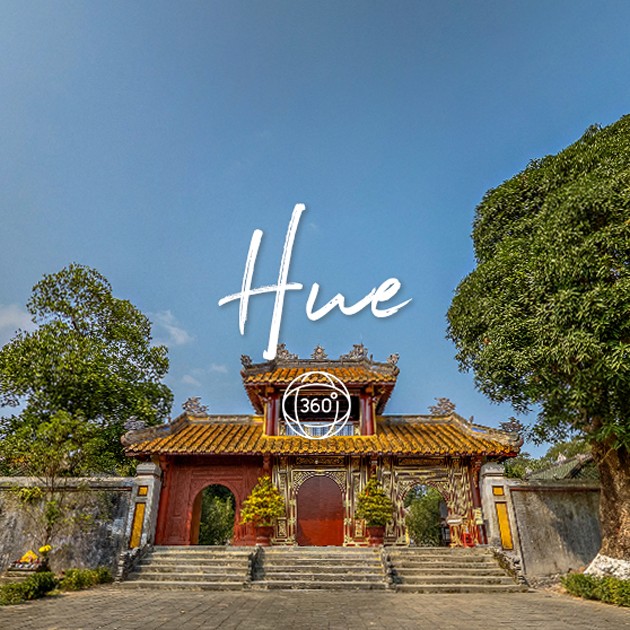
travel tips
Prepare for your trip with these practical articles

Vietnam through the lens of international news
Find out the reasons why Vietnam is worth to visit

TasteAtlas food rankings are based on the ratings of the TasteAtlas audience, with a series of mechanisms that recognize real users and that ignore bot, nationalist or local patriotic ratings, and give additional value to the ratings of users that the system recognizes as knowledgeable….
- TasteAtlas
Full article

Booking.com
Spring has finally arrived, bringing with it the perfect opportunity to venture out and explore the world.
- Booking.com

Travel Weekly
Visiting the South-East Asian country reminds Thompson Travel’s Sharon Thompson of the wonders of travel…
- Travel Weekly
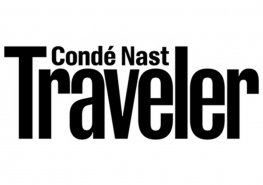
Conde Nast Traveler
To get you started on your next fairy tale adventure, we’ve rounded up 50 of the most beautiful small towns in the world.
- Conde Nast Traveler
share your story
Tag your best #LiveFullyinVietnam moments on Instagram
SHARE YOUR STORY
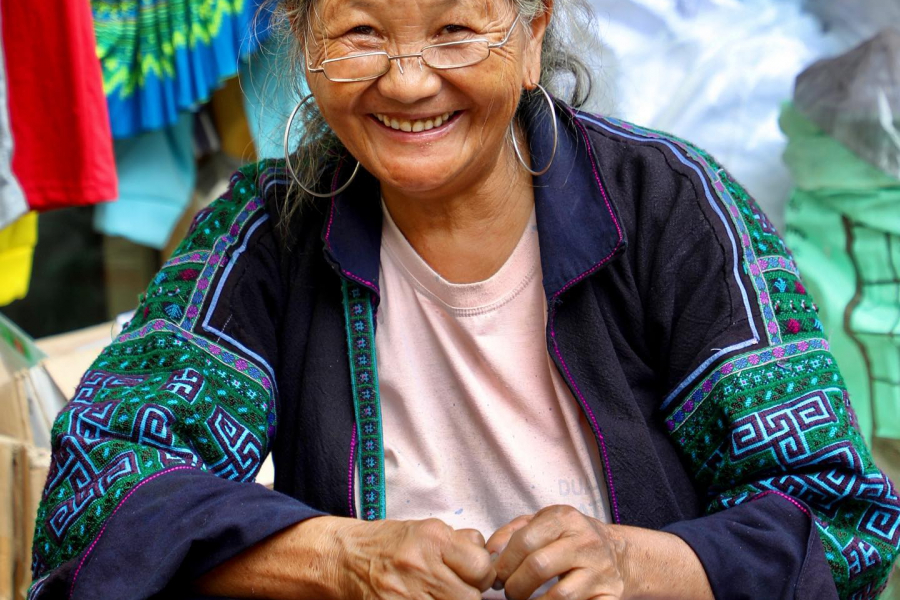
Create an account
Already have an account? Click here to sign in
By clicking submit, you agree to our Privacy Policy and Terms of Use
Sign in with your social accounts
Sign in with your email
Forgot password? Click here to get it back
Don't have an account? Sign up here
Forgot Password
The entered email has subscribed for Vietnam Tourism monthly newsletter
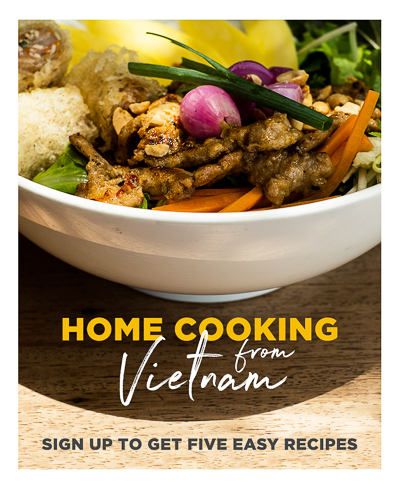
Vietnam travel guide
This Vietnam Travel Guide is a comprehensive resource that offers essential information for travelers exploring this diverse country. It includes details on popular destinations, practicalities such as visas, currency, and language, as well as transportation options like taxis, buses, trains, and domestic flights. The guide also provides insights into the weather patterns month by month, allowing you to plan your trips accordingly. Furthermore, it offers cultural background and inspiration.
Destinations
Essential guide, getting around, vietnam weather by month.
- Inspiration
Vietnam is a country with a countless of destinations to explore, and this Vietnam travel guide highlights some of the most popular ones.
North Vietnam
Hanoi , the capital city of Vietnam, is known for its rich history, vibrant culture, and bustling street life. Visitors come to explore its charming Old Quarter, taste delicious street food, and visit iconic attractions like Hoan Kiem Lake and the Temple of Literature.
Sapa , located in the northwest of Vietnam, is renowned for its stunning terraced rice fields and ethnic minority hill tribes. Travelers flock to Sapa to trek through breathtaking landscapes, experience the unique culture of local communities, and witness the beauty of the Fansipan Mountain, known as the “Roof of Indochina.”
3. Halong Bay
Halong Bay , a UNESCO World Heritage site, is famous for its breathtaking natural beauty. Travelers visit this iconic destination to cruise along the emerald waters, marvel at the limestone karsts and islets, and explore hidden caves and floating fishing villages.
4. Ninh Binh
Ninh Binh , often referred to as the “Halong Bay on land,” captivates visitors with its stunning karst landscapes, ancient temples, and picturesque countryside. Travelers come to Ninh Binh to take boat rides through the Trang An Complex, explore the ancient capital of Hoa Lu, and enjoy the tranquility of the rural scenery.
5. Ha Giang
Ha Giang , located in the far north of Vietnam, offers adventurous travelers an off-the-beaten-path experience. Known for its dramatic mountains, winding roads, and ethnic minority communities, Ha Giang attracts visitors seeking epic motorbike journeys, trekking adventures, and cultural immersion in remote and pristine landscapes.
6. Mai Chau
Mai Chau , nestled in the peaceful valley of Hoa Binh Province, offers a serene escape from bustling cities. This rural destination is famous for its picturesque landscapes, traditional stilt houses, and warm hospitality of the Thai ethnic minority. Visitors can cycle through scenic villages, participate in local homestays, and enjoy traditional dance performances.
Central Vietnam
7. phong nha.
Phong Nha , is a paradise for nature and adventure enthusiasts. This UNESCO World Heritage Site is famous for its magnificent cave systems, including the world’s largest cave, Son Doong. You can explore the stunning underground wonders, go trekking in the lush jungle of the national park and kayak over the Son River.
Hue , the former imperial capital of Vietnam, is renowned for its historical significance and majestic citadel. Visitors come to Hue to explore its UNESCO World Heritage sites, including the Imperial City and the royal tombs, and to experience the city’s rich cultural heritage, traditional music, and delicious royal cuisine.
Da Nang , a coastal city in central Vietnam, is known for its beautiful sandy beaches, stunning bridges, and modern skyline. Travelers visit Da Nang to relax on its pristine shores, explore iconic attractions such as the Marble Mountains and the Dragon Bridge, and indulge in delicious seafood.
Hoi An , a charming ancient town, enchants visitors with its well-preserved historic architecture, lantern-lit streets, and vibrant riverside atmosphere. People flock to Hoi An to wander through its atmospheric alleys, shop for tailored clothing, immerse themselves in its lantern festival, and savor local delicacies
11. Nha Trang
Nha Trang, a coastal resort city, is famous for its turquoise waters, white sandy beaches, and vibrant underwater world. Travelers visit Nha Trang to relax on its idyllic beaches, enjoy water sports and island-hopping tours, and experience its lively nightlife and seafood dining scene.
Dalat , situated in the Central Highlands, is known as the “City of Eternal Spring” for its pleasant climate and picturesque landscapes. Visitors come to Dalat to escape the heat, explore its French colonial architecture, visit flower gardens and waterfalls, and engage in outdoor activities like hiking, biking, and canyoning amidst its natural beauty.
South Vietnam
13. ho chi minh city.
Ho Chi Minh City , the bustling metropolis of Vietnam, offers a captivating blend of modernity and history. Visitors are drawn to Ho Chi Minh City to explore its iconic landmarks like the Independence Palace and Notre-Dame Cathedral, indulge in vibrant street food, experience the vibrant nightlife, and immerse themselves in the city’s rich history and culture.
14. Mekong Delta
The Mekong Delta , a vast maze of rivers, canals, and lush green fields, is a unique region known as the “Rice Bowl” of Vietnam. Travelers venture to the Mekong Delta to cruise along its waterways, visit floating markets, witness traditional village life, and taste the fresh tropical fruits and local delicacies unique to this region.
15. Phu Quoc
Phu Quoc , a tropical paradise island, is renowned for its pristine white-sand beaches, crystal-clear waters, and stunning coral reefs. Visitors flock to Phu Quoc to relax on its picturesque beaches, explore its national parks, indulge in water activities such as snorkeling and diving, and savor the island’s fresh seafood.
16. Con Dao
Con Dao , a secluded archipelago, offers unspoiled natural beauty and a rich historical background. Travelers seek out Con Dao for its pristine beaches, lush forests, and diverse marine life, as well as to discover its haunting history at the former prison complex, Con Dao Prison. The island provides a tranquil retreat for relaxation, outdoor activities, and exploring its captivating landscapes.
Mui Ne , a coastal town, is renowned for its stunning sand dunes, vibrant kite-surfing scene, and serene fishing villages. Visitors come to Mui Ne to witness the dramatic landscapes of the Red and White Sand Dunes, engage in water sports, taste fresh seafood, and enjoy the laid-back beach atmosphere and stunning sunsets.
Off the beaten track destinations
Explore the off the beaten track destinations in Vietnam: Cao Bang , home to the stunning Ban Gioc Waterfall ; Mu Cang Chai , renowned for its breathtaking terraced rice fields; Quy Nhon , a tranquil beach town; Kon Tum, where you can discover the mountains and ethnic minorities of the central highlands. Experience the unspoiled beauty of Lan Ha Bay and Bai Tu Long Bay , the lesser-known siblings of Halong Bay. Visit Cat Ba, the largest island in the bay, and uncover the hidden gem of Ba Be Lake , the largest natural lake nestled in the jungle.
Health & Safety
When traveling to Vietnam, it’s important to be aware of certain health and safety considerations.
Mosquitoes are prevalent, especially in certain regions, so it’s advisable to use mosquito repellent and take precautions to prevent mosquito-borne diseases like dengue fever or malaria.
Road safety can be a concern, with chaotic traffic and different driving habits, so it’s recommended to exercise caution and use designated pedestrian crossings.
It’s advisable to avoid drinking tap water and instead opt for bottled or filtered water to prevent waterborne illnesses.
Additionally, practicing good food safety by eating freshly cooked or hot meals, avoiding street food stalls with questionable hygiene practices, and practicing proper hand hygiene can help prevent food-related illnesses.
It’s always recommended to consult with a healthcare professional or travel health clinic before your trip for personalized advice on vaccinations and health preparations.
Vietnam is generally a safe destination for travelers, with a low rate of crime targeting foreign visitors; however, it’s important to remain vigilant and take precautions against petty theft, such as keeping a close eye on personal belongings and being aware of common scams.
Money & budget
Vietnam’s official currency is the Vietnamese Dong (VND), and it’s advisable to carry local currency for most transactions as other currencies are not accepted. Banks and authorized currency exchange offices are the best places to exchange foreign currencies, but interestingly, gold jewelry shops often offer competitive exchange rates.
The average cost of a trip to Vietnam varies depending on your travel style. For budget travelers, a weekly average budget can range from $150 to $300, including accommodation, meals, transportation, and some sightseeing. Midrange travelers can expect to spend around $300 to $700 per week, while luxury travelers may have a budget of $700 and above per week.
In Vietnam, there is no tipping culture , and service charges are usually included in the bill. However, it’s appreciated to give small tips for exceptional service. ATMs are widely available throughout the country, but it’s important to note that there may be limits on the amount you can withdraw per transaction. Additionally, many local shops and restaurants may not accept card payments, so it’s advisable to carry enough cash for smaller purchases.
Internet & calling
Vietnam has a widespread availability of Wi-Fi networks, ranging from local restaurants and coffee shops to upscale resorts. As a customer, you can typically access these Wi-Fi networks for free.
However, to ensure a reliable internet connection and avoid dependence on Wi-Fi, it is recommended to buy a Vietnamese SIM card . SIM cards are affordable and convenient, allowing you to have internet access for various purposes such as navigating with Google Maps, using Google Translate, booking taxis through ride-hailing apps, or checking reviews on platforms like TripAdvisor. While there are several providers to choose from, Viettel is generally considered the best option for its coverage and reliability.
Electricity & socket adapters
The voltage in Vietnam is typically 220V, and the sockets commonly used have 2 pins , accommodating both flat and round pins. If your devices use a different type of plug, you can either bring a travel adapter with you or easily purchase one in Vietnam at one of the many convenient stores available.
Traveling to Vietnam
Before traveling to Vietnam, it is essential to check the visa requirements for your country. While a few countries, including 11 European countries, are eligible for visa-free entry , allowing a maximum stay of 15 days, those wishing to stay longer or coming from other countries such as the US, Australia, Canada, or New Zealand, must arrange a valid visa before their trip.
For most travelers, the e-visa is the recommended option, which can be easily obtained through the official website of the Vietnamese immigration. The e-visa process typically takes 3 to 4 working days, costs 25 USD, and allows a stay of up to 30 days in Vietnam.
Arrival options
Unlike major hub cities like Hong Kong, Singapore, Bangkok, and Kuala Lumpur, Vietnam doesn’t have as many international direct flights from the US, Australia, and Europe, often requiring a transit. It’s important to note that even when boarding your flight to Vietnam, you need to show a valid visa.
In addition to flights, Vietnam can be accessed by land borders from countries such as Cambodia, Laos, and China. Another option is entering Vietnam via a seaport. Fortunately, all of these entry options, including land and seaports, are possible with an e-visa.
Long distance
1. domestic flights.
Domestic flights in Vietnam are a great option for traveling within the country, offering convenience and affordability. With tickets that can be as cheap as $40 USD, it’s an excellent alternative to avoid long journeys by bus. Vietnam has three major airlines, namely Vietnam Airlines, Vietjet Air, and Bamboo Airways, providing extensive coverage to numerous domestic airports across the country, totaling around 21 airports.
2. Bus travel
Bus travel in Vietnam is a popular and extensive mode of transportation, with a network that connects every corner of the country. It is known for being very affordable, making it an economical choice for budget-conscious travelers. There are various options available, including day buses and sleeper buses, with different classes such as smaller limousine buses, VIP sleeper buses, normal sleeper buses, and mini vans. Opting for the luxury options may provide a more comfortable and enjoyable experience without a significant increase in cost.
3. Train travel
Train travel in Vietnam offers a unique and nostalgic experience, allowing you to soak in the scenic beauty of the country at a more relaxed pace. While trains may be slower compared to buses, they are generally considered a safer mode of transportation. Depending on your preference and budget, trains offer various options including hard seat, soft seat, and different cabin configurations such as 4 berth and 6 berth cabins. For popular routes like Sapa to Hanoi, there are tourist trains available, providing additional comfort for the journey.
4. Private transfers
Private transfers in Vietnam offer convenience and flexibility for travelers, as foreign tourists are not permitted to drive cars themselves. Renting a car with a driver allows for comfortable and hassle-free transportation, whether for airport transfers or exploring different destinations. Moreover, private transfers can be customized to include stops along the way, giving you the opportunity to create your own personalized tour or embark on a multi-day trip to discover the diverse landscapes of Vietnam.
Short distance
5. public transportation.
While public transportation options like the metro and buses exist in Vietnam, they are often underutilized by tourists. The metro system is still in its early stages of development, and communication barriers can make it difficult to navigate public bus routes. However, the biggest reason not to use public transportation in Vietnam is the way better alternative of using taxis.
Taxis in Vietnam are an affordable and convenient mode of transportation, offering door-to-door service for travelers. Additionally, taxi apps like Grab have gained popularity, providing an effortless way to book a taxi and communicate your destination, effectively overcoming any language barriers you may encounter.
Walking in Vietnam’s cities can be challenging as sidewalks are often in poor condition and occupied by parked motorbikes, forcing pedestrians to walk on the main road. Crossing roads can also be a daunting task, unless you come across a traffic light. Generally, Vietnam is not considered pedestrian-friendly in urban areas.
However, outside the cities, there are excellent opportunities for trekking in Vietnam , allowing you to explore beautiful landscapes, such as rice fields, jungles, and smaller villages.
Other options for getting around
Apart from practical transportation options, there are leisurely alternatives for getting around in Vietnam. Cycling is a fantastic way to explore the peaceful cities and picturesque countryside, offering a closer connection to the surroundings.
Cyclo rides provide a unique and authentic local experience, allowing you to leisurely explore the streets and soak in the vibrant atmosphere. Boats and cruises are popular for discovering the rivers, canals, and stunning landscapes of the Mekong Delta and the famous Halong Bay.
Best time to visit Vietnam
Vietnam experiences three distinct weather regions due to its elongated shape. Each region has its own best time to visit , making it somewhat challenging to pinpoint a single ideal time. However, if you’re looking for a period that aligns with all three regions, the best time to visit is generally from January to May, with March being particularly favorable.
Northern Vietnam : In the north, the weather is divided into four seasons. From January to March, it is often chilly with occasional fog in Hanoi and Halong Bay. Spring (April and May) brings pleasant temperatures and blooming flowers. Summer (June to August) is hot and humid, while autumn (September to December) offers cooler temperatures and clearer skies.
Central Vietnam : Central Vietnam has a tropical climate with distinct wet and dry seasons. From January to August, the weather is relatively dry, making it a good time to visit cities like Hue and Hoi An. However, be aware of potential typhoons from August to November. The region also experiences high temperatures in the summer months.
Southern Vietnam : Southern Vietnam has a tropical climate with two main seasons – dry and wet. From November to April, the dry season prevails, characterized by lower humidity and pleasant temperatures. May to October is the wet season, with frequent rainfall and higher temperatures. Ho Chi Minh City and the Mekong Delta are popular destinations in this region.
Vietnam by month
With so many incredible destinations to choose from in Vietnam, it can be overwhelming to decide where to go. Here are some inspiring recommendations to help you plan your trip:
- For the best rice fields , consider visiting Sapa, which is easily accessible and boasts vast landscapes. Alternatively, Pu Luong offers smaller, less touristy rice fields but requires a bit more effort to reach.
- When it comes to beautiful beaches , Phu Quoc is renowned for its stunning shores. Along the central coast, you’ll also find picturesque beaches in Hoi An, Quy Nhon, Phu Yen, and Nha Trang.
- Seeking adventure? Embark on a thrilling motorbike journey in Ha Giang, explore captivating caves in Phong Nha on caving expeditions, or try canyoning in the scenic town of Dalat.
- Vietnam is home to some of the most beautiful cities , including the charming ancient town of Hoi An, the bustling capital city of Hanoi, the historic city of Hue, and the picturesque hill station of Dalat.
- If trekking is your passion, head to Sapa, Ha Giang, Pu Luong, or other mountainous regions for unforgettable hiking experiences amidst breathtaking landscapes.
- For nature enthusiasts, Ha Giang, Sapa, Ninh Binh, Halong Bay, and Ban Gioc Waterfall offer spectacular natural wonders to explore and admire.
For more inspiration and detailed information about these and other remarkable destinations in Vietnam, you can check out our Vietnam inspiration list .
Vietnamese culture
To fully immerse yourself in Vietnamese culture, here are some helpful tips to enhance your experience:
- Embrace Vietnam’s culinary pride by indulging in local cuisine. Take a street food tour or join a cooking class to discover the diverse flavors and ingredients that make Vietnamese food so renowned.
- Vietnam is home to 54 ethnic groups , each with its own unique traditions. Learn from them by visiting ethnic markets, staying at homestays, and exploring villages to gain insights into their customs, arts, and way of life.
- Gain a deeper understanding of Vietnam’s history by learning about the Vietnam War . Visit significant sites such as the Cu Chi Tunnels and the War Remnants Museum , which provide valuable perspectives on the country’s past.
- When visiting temples and pagodas, dress appropriately by covering your shoulders, wearing modest clothing, and removing your shoes as a sign of respect.
- Make an effort to learn some basic Vietnamese phrases . While many Vietnamese may not speak fluent English, they appreciate and welcome your attempts to communicate in their language.
- Celebrate special events with the locals, such as Tet (Lunar New Year), Mid-Autumn Festival , or National Day . Participate in traditional festivities, enjoy local customs, and savor the festive atmosphere.
- When entering someone’s home or certain establishments, it is customary to remove your shoes as a gesture of cleanliness and respect.
- Always ask for permission before taking photos of people, as it shows respect for their privacy and personal space.
- Avoid any disrespectful actions towards the national flag or the country’s leaders. Show reverence and sensitivity towards symbols of national importance.
- Explore traditional craft villages to witness artisans practicing age-old crafts, such as pottery, silk weaving, or wood carving. This provides an opportunity to appreciate Vietnam’s rich artistic heritage.
- Join locals for a casual beer-drinking experience on the street. Sidewalk stalls offer a social and lively atmosphere where you can engage with Vietnamese people and soak up the local culture.
- Experience the warmth of Vietnamese hospitality by joining a family dinner. Embrace the tradition of sharing abundant food and engaging in lively conversations, creating lasting memories of authentic Vietnamese hospitality.
- Ho Chi Minh City
- Mekong Delta
- Language & travel dictionary
- Electricity
- Internet & calling
- Best travel time & weather
- Hoe does it work?
- Visa on Arrival
- Visa at embassy
- Holidays & Events
- People & minorities
- Flights to Vietnam
- Domestic flights
- Motorbike buy/rent
- Train travel
- 15 most beautiful destinations
- 20 best things to do
- 10 best off the beaten track
- 10 most stunning beaches
- 10 best rice fields places
- 10 best adventures
- 10 cultural experience
- All travel inspiration
- Package trips
- Custom made trip
- Destination Guide
- Essential Guide
- Getting Around
- Vietnam Month by Month
- Vietnam blog
- Travel tips
- Custom Made Trip
- Day- & Multiple Day tours
- Holiday Packages
- Local Meo Vac Homestay
- Local Dong Van Homestay
- Our Team & Company
- Our Customers & Reviews
Copyright © 2023 Local Vietnam
Start typing and press enter to search
Free ebook vietnam travel guide.


17 Best Places to Visit in Vietnam
Written by Jess Lee Updated Aug 30, 2023
Vietnam is an astonishing mix of natural highlights and cultural diversity.
The scenery ranges from jagged peaks seen from winding mountain passes down to verdant paddy fields painted every shade of green in the palette, while Vietnam's long history and multicultural population (with over 50 ethnic minority groups) make a trip here rich in heritage.
Outdoor lovers can get their teeth into the countryside within the numerous national parks, where hiking, biking, and kayaking are popular things to do, but Vietnam's most famous natural tourist attraction, the spectacular karst seascape of Halong Bay, is one natural sight that even the more slothful can experience up close on a cruise.
While the rural areas brim with lush panoramas, the big cities buzz with contemporary life and provide ample opportunities to get stuck into Vietnam's tasty culinary highlights.
This fascinating country is full of surprises and is one of Southeast Asia's most underrated destinations. Plan your sightseeing with our list of the best places to visit in Vietnam.
1. Halong Bay
2. ho chi minh city, 4. phong nha-ke bang national park, 7. sapa countryside, 9. nha trang, 10. cu chi tunnels, 11. ba be national park, 12. mekong delta, 13. cat ba island, 14. ha giang, 15. phu quoc island, 16. con dao islands, frequently asked questions, when is the best time to visit vietnam.
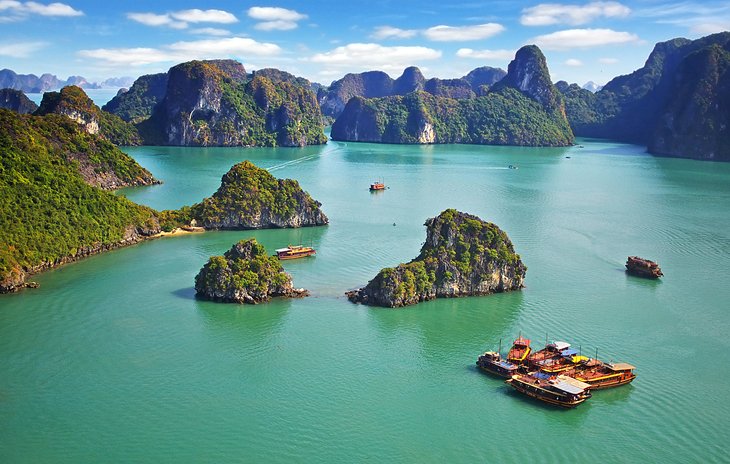
The karst seascape of Halong Bay is one of the best places to visit in the world for spellbinding sea views and is a UNESCO World Heritage Site.
Thousands of limestone islands sit within this bay in the Gulf of Tonkin, eroded into jagged pinnacles by wind and water action over millennia.
With the bay's scenery best seen by boat, this is prime cruising territory. Opt for at least an overnight tour to see Halong Bay's iconic views as a day trip doesn't do it justice.
There are plenty of caves in the bay that can be entered including the Hang Sung Sot, with three mammoth caverns, and the Hang Dao Go, with superbly weird stalagmites and stalactites. For most people though, the highlight is simply cruising amid the karsts and soaking up the changing scenery of pinnacles as you pass by.
There are plenty of different cruise tours to choose from. Check the different itineraries offered before booking as many travelers have left Halong Bay underwhelmed by their cruise.
Author's Tip: If possible, book a tour that takes in neighboring Lan Ha Bay as well as Halong Bay. The karst scenery is just as dramatic here but fewer cruise trips visit. And check if your cruise offers included activities such as guided kayaking (which allows you to experience an up-close view of the scenery).
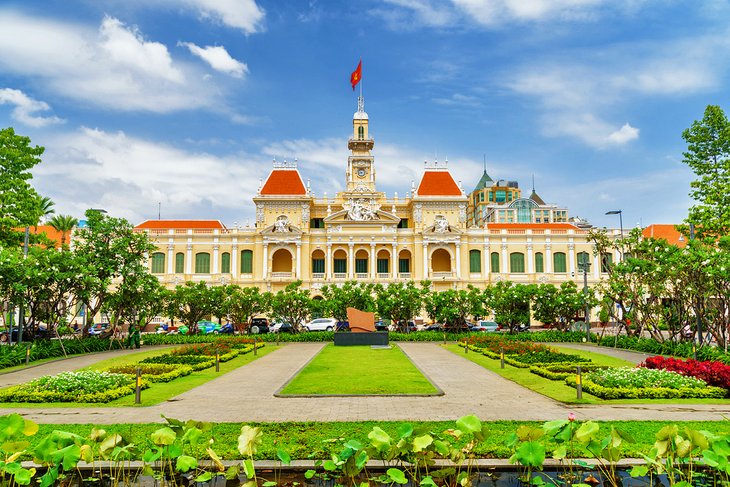
For big city fans, no visit to Vietnam is really complete without a visit to Ho Chi Minh City, the buzzing commercial hub of the country.
The streets are an insane clog of motorbikes and cars, the restaurant and café scene is incredibly cosmopolitan, and the shopping is the best in the country.
At its center is Dong Khoi, a relatively small and easily navigable central district, which holds most of the city's sights.
Here, you'll find the HCMC Museum, with a brilliant collection of artifacts that weaves together the story of the city, and the grand Notre Dame Cathedral, built in the late 19th century.
Check out the old district of Da Kao nearby for some of the best surviving examples of the city's French colonial architecture and also to visit the Jade Emperor Pagoda with its dazzling array of Buddhist and Taoist religious iconography.
Afterwards, the History Museum is a must-do for history fans with stacks of relics on display from various archaeological sites.
For many visitors, the two big-hitter tourist attractions not to miss are just a little out of the center, along Nguyen Thi Minh Khai Street. The Reunification Palace, then known as Independence Palace, was the residence for South Vietnam's president. It's chiefly famous as the spot where North Vietnam's tanks stopped on 30 April 1975, officially ending the war. It's a completely fascinating place to visit complete with 1960s furnishings still in situ.
Nearby is the War Remnants Museum, which although very obviously biased, paints a disturbing picture of the brutality of war and the many atrocities committed by US Forces during their Vietnam campaign.
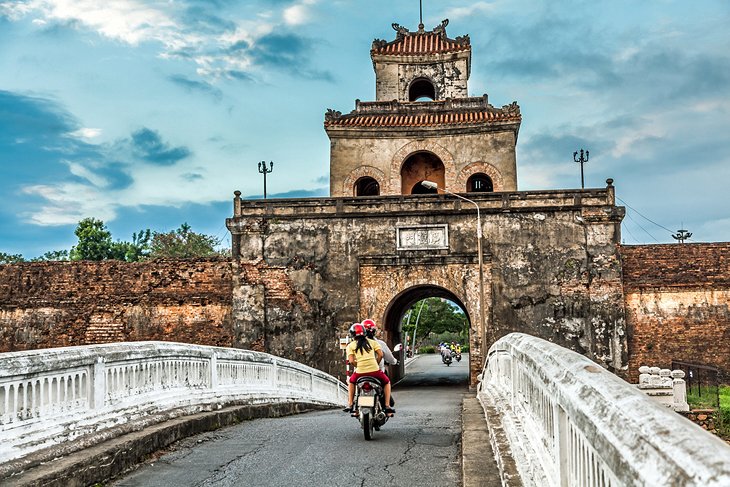
One of Vietnam's most historic towns, Hue is packed to the brim with relics from the reign of the 19th-century Nguyen emperors.
Sitting along the banks of the gorgeous Perfume River, the Imperial Enclosure is a huge site set within walls that sprawl for 2.5 kilometers.
While touring the grounds check out the gorgeous Ngo Mon Gate, the Thai Hoa Palace with its finely lacquered interior detailing, the Dien Tho Residence where the Queen Mothers would live, and the Halls of Mandarins with its preserved ceiling murals.
A dazzling number of historic sites lie outside the Imperial Enclosure walls as well.
One of the nicest ways of visiting a collection of outlying sites is by taking a riverboat cruise on the Perfume River. A day cruise can take you to visit several royal tombs along with some pagodas.
If you're short on time, the best tomb to visit is the Tomb of Tu Doc and the most important pagoda in the area is the Thien Mu Pagoda, with its tower that soars for 21 meters high.
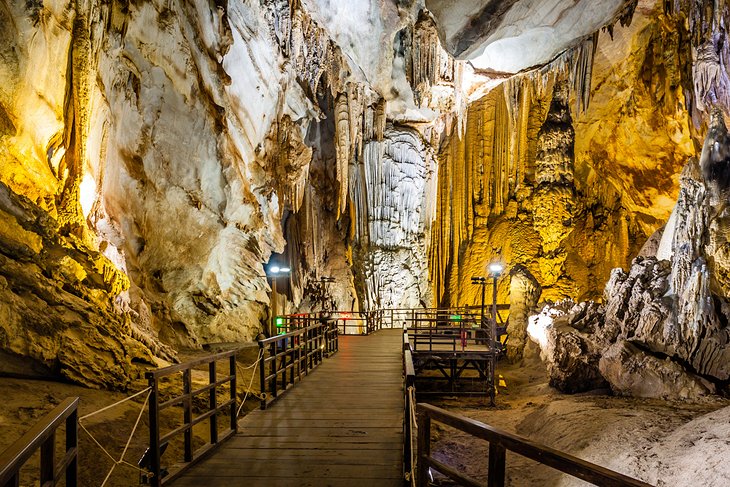
One of the best places to visit in Vietnam for caving, World Heritage-listed Phong Nha-Ke Bang National Park is a dramatic karst mountain formation honeycombed with huge caverns, which are home to superb stalactite and stalagmite displays.
It's best known for its caving activities , which range from multi-day hiking and caving tours for the more adventurous, to simpler half-day trips to caves with easy access provided by boat trips and modern boardwalks, but the national park also offers mountain biking and trekking activities.
The most popular destinations within the park are the Paradise Cave , which extends for a staggering 31 kilometers below ground, and the Phong Nha Cave, where the interior is accessed by boat. Half-day tours can be easily arranged once you're in the area.
The national park's most renowned caverns though are Son Doong Cave (the world's largest cave) , and the Tu Lan Cave with its cavern river system. Access to these, and to certain other caves in the park are restricted to organized tours (ranging from one-day to multi-day expeditions) which are all run by Phong Nha's expert adventure tour company Oxalis . It's well worth booking in advance to secure your spot.
To make the most of your time here, time your visit for outside the rainy season, which runs from October to December, when many of the national park's caves are closed to the public.
You can access Phong Nha-Ke Bang National Park from Son Trach (also known as Phong Nha village).
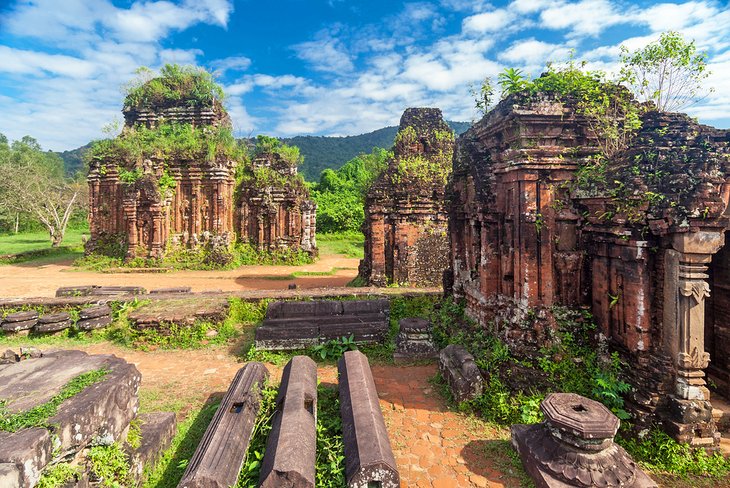
Surrounded by lush jungle-covered mountains, My Son is a ruined Cham era temple city that dates from the 4th century.
This old Hindu religious center was still very much in use during the 7th to 10th centuries and only fell into complete decline and abandonment during the 13th century.
There are around 20 temple structures still standing here, all built of brick or sandstone blocks and showing interesting influences from various Asian empires, including Indian and Malay.
Note that the temples of Group B are the oldest, while Group A once contained the site's most important monument but was destroyed deliberately by US forces during the Vietnam War.
A good museum on-site houses plenty of information on the Cham.
Access to My Son is from Hoi An.
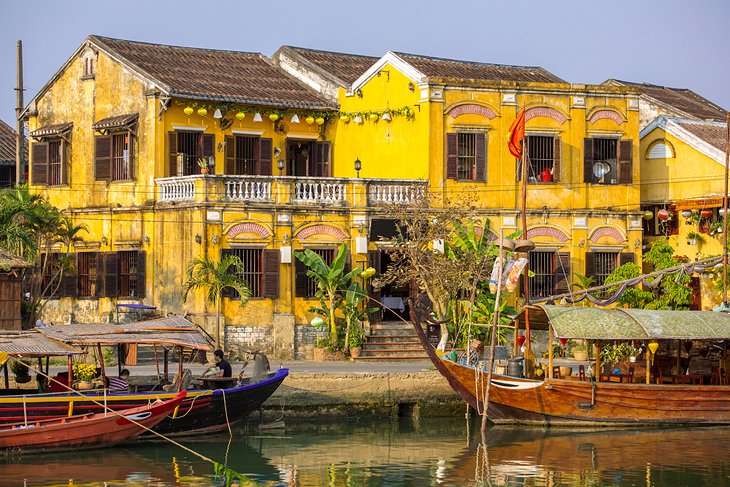
Beautiful Hoi An is the most atmospheric city in Vietnam, with bags of surviving historic architecture.
The old town quarter is a joy to explore, packed to the brim with well-preserved merchant houses that hark back to Hoi An's trading center heyday of the 15th century, when the town was a major meeting point for Japanese and Chinese merchants who flocked here for the local silks.
Plenty of the old merchant houses have been opened to the public, so you can get a taste of these times. The best is 17th-century Tan Ky House, with fascinating architectural and decorative elements.
Hoi An's major symbol is the delightful Japanese Bridge at the western end of Tran Phu Street, while nearby, the Assembly Hall of the Fujian Chinese Congregation is the old town's most highly decorated temple.
There are numerous small pagodas and museums dotted about town, but Hoi An's true charm is found in simply rambling the old town streets admiring the well-preserved facades.
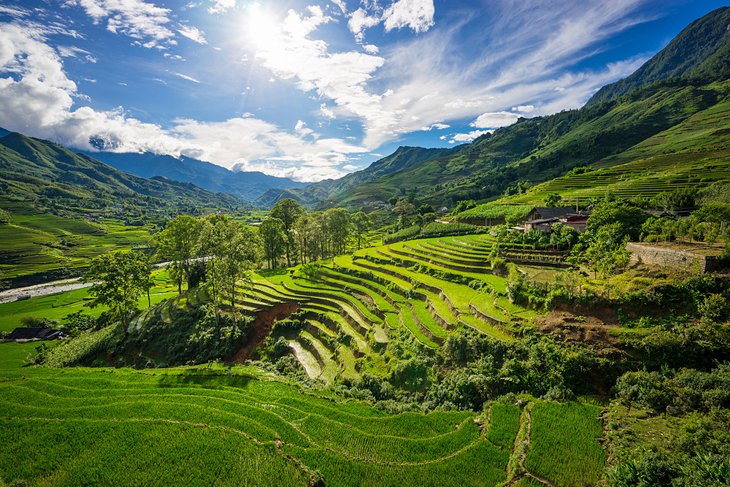
The verdant rice field countryside surrounding Sapa, bordered by the jagged peaks of the Hoang Lien Mountains (often still known by their French colonial era name of the Tonkinese Alps), are home to Vietnam's most beautiful rural vistas.
The deep valleys here are home to a diverse mix of the country's ethnic minorities, including the Hmong, Giay, and Red Dzao people, while the rippling hills are terraced with rice fields and overlooked by the country's tallest peak, Fansipan Mountain.
This is the top trekking destination in Vietnam with oodles of options to trek or day hike between tiny villages and experience the staggering mountain views.
Sapa itself is the main base here - an old hill station and now a bustling and forever growing tourist center that is a stark contrast to the sumptuous tranquil countryside right on its doorstep.
Author's Tip: Keen trekkers looking for more of northern Vietnam's lush mountain vistas may want to skip the busy Sapa scene completely and nudge further 95 kilometers northwest to Bac Ha , where the terraced hill views on hikes between hill villages are just as beautiful. Bac Ha's Sunday market is also a very popular day trip from Sapa.
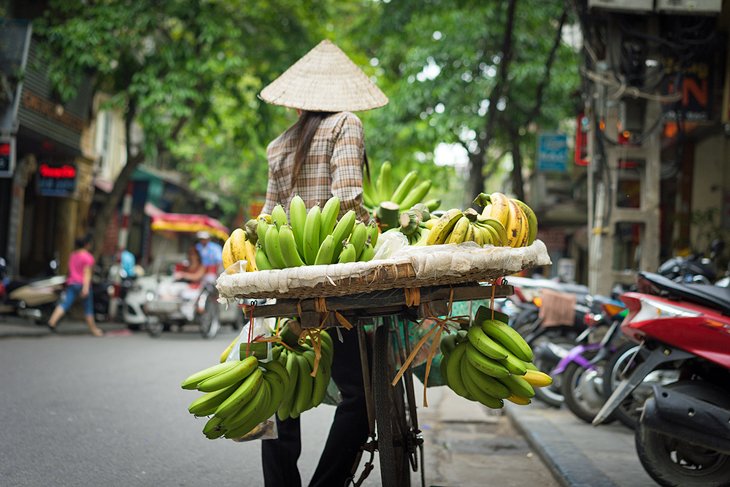
Vietnam's capital is the frenetic heartbeat of the nation and a place that befuddles travelers as much as it charms them.
The motorbike frenzy, pollution, and constant clamor of street vendors can get too much for some travelers, but if you want to dive into Vietnamese city life, Hanoi is the place to do it.
The old town quarter has plenty of dilapidated charm on offer, while history fans should make a beeline here simply to see the bundle of excellent museums.
The Vietnam Museum of Ethnology and Vietnam Fine Art Museum are both brilliant introductions to the diverse artistry of the country, while the Ho Chi Minh Mausoleum is an important tribute to the founder of modern Vietnam.
Author's Tip: It's well worth adding extra time into your itinerary to use Hanoi as a base for exploring the many sights within day tripping distance. In particular, the Tay Phuong and Thay Pagodas (30 kilometers west from the central city), Co Loa Citadel (24 kilometers northeast), and the Huong Pagoda (also known as the Perfume Pagoda; 60 kilometers southwest).
- Read More: Top-Rated Tourist Attractions in Hanoi
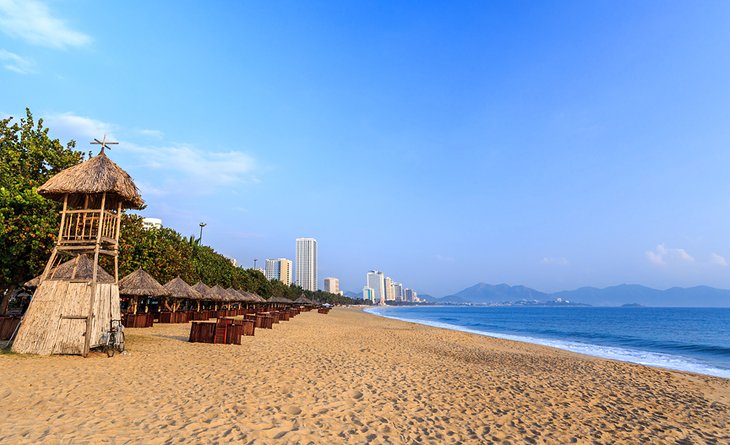
For sandy fun in Vietnam, Nha Trang is king. The well-maintained beach trundles for six kilometers along the shoreline of central Nha Trang city and during summer is jam-packed with local families on vacation, as well as foreign visitors.
There is excellent swimming here with designated swimming areas and manicured lounging areas that make this a great option for relaxing days soaking up the sun and sand.
If you do get bored of sunbathing, the ancient Po Nagar Cham Towers are just to the north across the Xom Bong Bridge and have been used as a place of worship here since at least the 7th century (with some historians saying the site itself has been a place of active worship since much earlier).
There is also an excellent museum dedicated to the work of Alexandre Yersin who discovered the cause of the bubonic plague and founded Nha Trang's Pasteur Institute (which still carries out vaccination programs in Vietnam today).
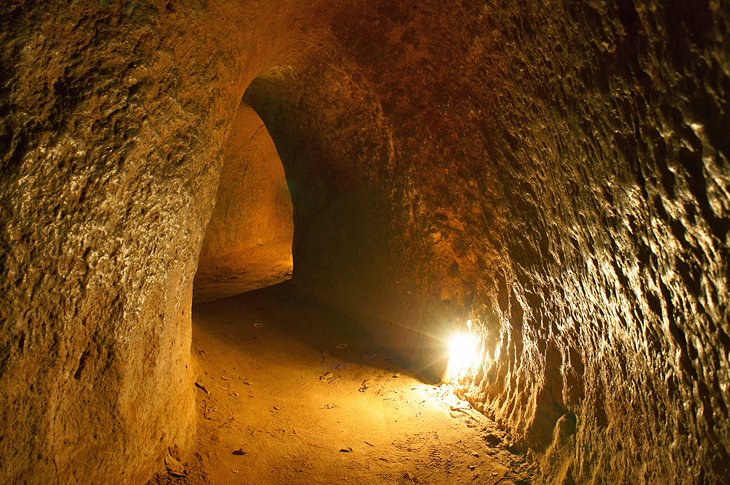
An absolutely fascinating experience for all travelers, not just those interested in Vietnam's modern military history, the Cu Chi Tunnels are an extensive tunnel network that during the war, stretched for more than 250 kilometers, allowing VC troops to operate and communicate in the area surrounding Ho Chi Minh City.
Two short sections of the network can be visited with a guide who'll take you down into the narrow unlit confines, which definitely are not for claustrophobia sufferers.
You will literally be crawling on your hands and knees and some points. You can access the tunnels at either Ben Dinh village (the more popular choice) or Ben Duoc village.
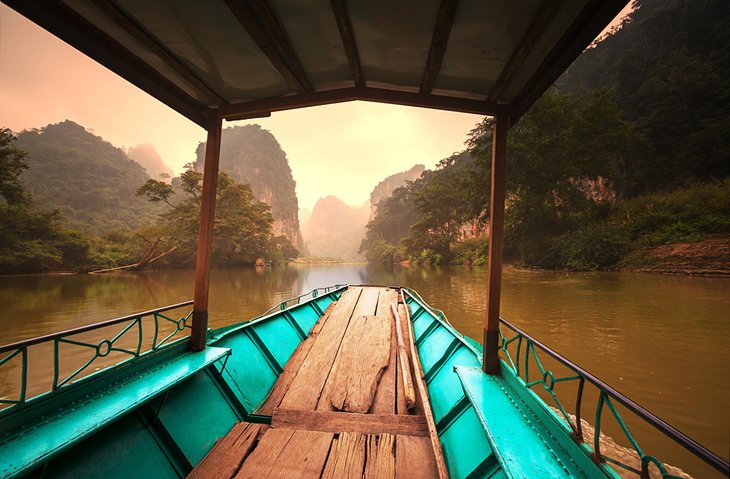
Tranquil Ba Be National Park is absolutely stunning with the three interlinked Ba Be Lakes at its heart, rimmed by jagged karst peaks and thickly forested slopes.
Most visitors come here to take peaceful boat trips or kayak on the lake and explore the caves full of stalactites and stalagmites in the vicinity, but for the more active, there's also excellent hiking and trekking in the hills here between ethnic minority villages.
This is one of the most peaceful spots in Vietnam, and travelers who spend the night here sleep in traditional stilt-house homestay accommodation along the lakeshore, allowing an experience of simple rural life.
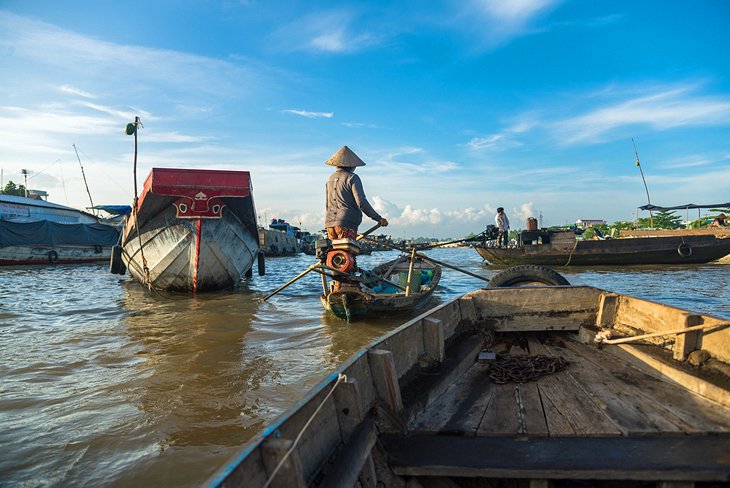
The far south of Vietnam is where the mighty Mekong River finally finds its way to the sea in a maze of waterways that crisscross the floodplain.
Incredibly lush, with paddy field vistas and mangroves, and full of local life, with chaotic floating markets to explore by boat, the delta is one of the most interesting regions for travelers to discover.
Can Tho is the most popular town to use as a base, as it's close to the floating markets of Phong Dien and Cai Rang, while boat trips from Ca Mau allow you to explore the U Minh Mangrove Forest and Cau Mau Nature Reserve.
This area of Vietnam is one of the best to visit for keen bird watchers and nature lovers , as it is home to both Tra Su Bird Sanctuary Forest and Bac Lieu Bird Sanctuary.
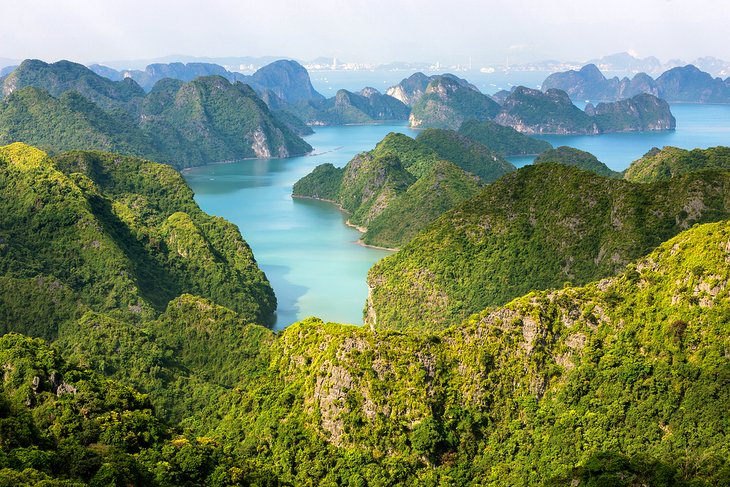
One of Vietnam's major centers for activities and adventure travel attractions, Cat Ba Island sits on the western edge of Halong Bay.
This is the best place to visit if you want to organize cruises and kayaking trips in Lan Ha Bay, which lies off Cat Ba's southern coast. Lan Ha Bay is a less visited seascape of karst islets and outcrops that makes for a quieter alternative to Halong Bay.
Off the water, much of Cat Ba's dense jungle interior is part of Cat Ba National Park, where hikers can spot plentiful birdlife, as well as animals such as macaques.
For many visitors, though, Cat Ba is all about climbing opportunities. Climbing excursions here utilize both the island's limestone cliffs and Lan Ha Bay's outcrops, providing experiences to suit both complete climbing beginners and experienced climbers.
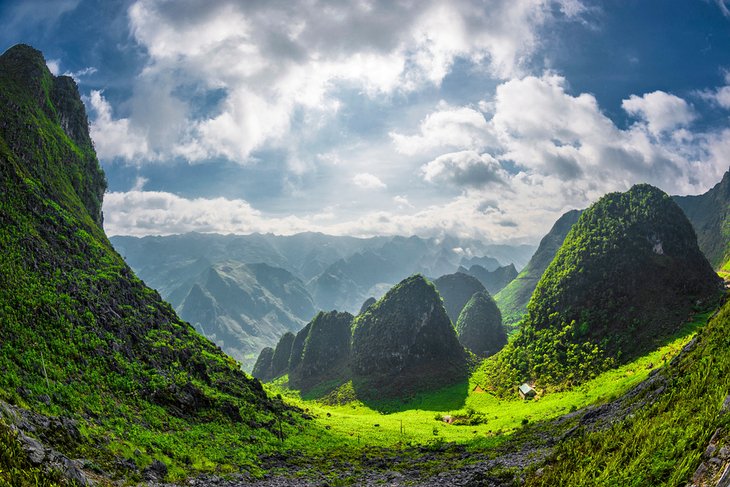
The emerald-green karst mountain landscapes along Ha Giang's mountain passes make this far-north province prime territory for scenic road-tripping by either motorbike or car.
In particular, the twisty Quan Ba Pass between Ha Giang town and Tam Son provides panoramic vistas of the karst plateau and its jagged limestone outcrops, while the zigzagging Mai Pi Leng Pass between Dong Van and Meo Vac offers dizzying views of the lush mountain scenery and narrow valleys below.
Time your visit to coincide with one of the area's market days, when traders from the surrounding mountain villages pile into town. Dong Van's Sunday market is one of the best.
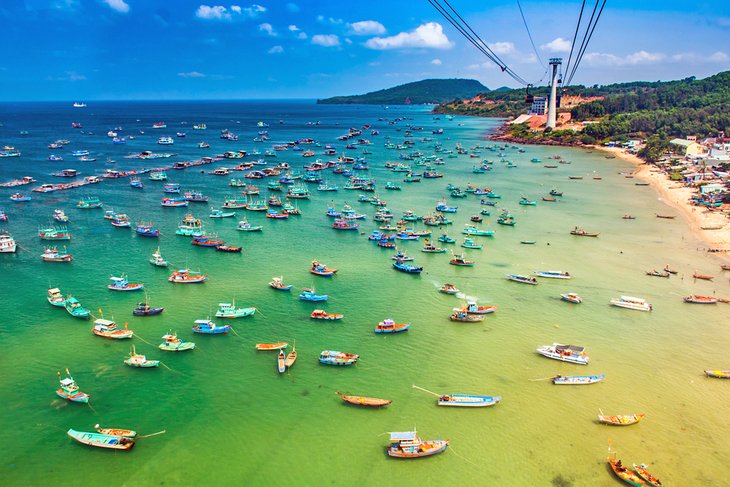
Sitting 45 kilometers off the southern coast of the country, in the Gulf of Thailand, Phu Quoc is a densely forested island, speckled by sweeps of white-sand beach that attract plenty of sunseekers during the winter dry season.
Dry season (November to May) is also when the island's underwater and on-the-water tourism attractions spring into action, with plenty of dive sites in the waters just offshore, as well as opportunities for snorkeling, kayaking, and boat trips.
Many of the main boat excursions head to the An Thoi Islands, just to the south of Phu Quoc, which is home to the best snorkeling in the area.
Off the water, the Phu Quoc cable-car provides bird's-eye views for eight kilometers, soaring over the seascape and islands, all the way from Phu Quoc to the island of Hon Thom in the An Thoi Islands.
Phu Quac is accessed by plane or regular ferries from the mainland towns of Rach Gia and Ha Tien. As Ha Tien lies very close to the southern border crossing with Cambodia, the island is a popular first (or last) stop-off in Vietnam for overland travelers.
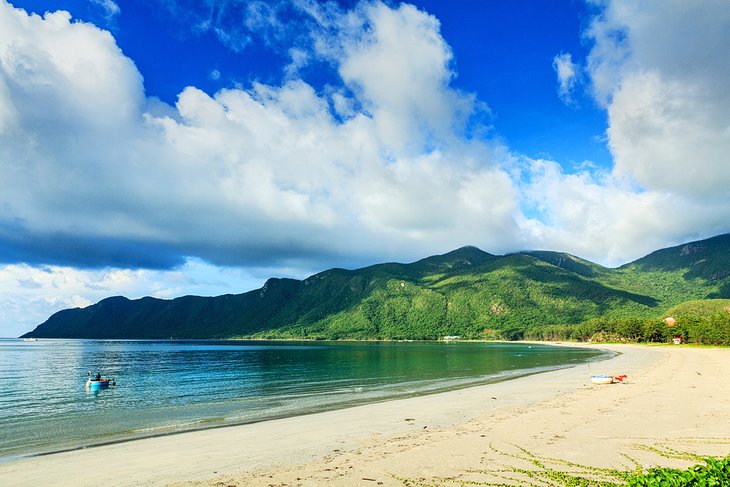
This remote island group lies around 160 kilometers offshore in the South China Sea and is renowned among divers as one of the best places to visit in the country, both for the variety of sea life and for the coral reefs.
Much of the Con Dao Islands, and the surrounding water, is a protected wilderness area, with the island shores home to nesting turtles, and dense forest still covering the island interiors.
The main island, and prime base for visitors with all the accommodation and things to do, is Con Son Island, which has sweeps of sand strung out across its coast that attract beachgoers looking for a relaxed sun-soaked getaway, as well as divers.
Even if you're here mostly for the beach, make sure to explore the historic sites of Con Son Town (the island's only settlement) including Phu Hai Prison, Bao Tang Con Dao Museum, and the prison known as the Tiger Cages, which document the dark history of this isolated island group.
Con Son's remote position led to the island being used to incarcerate political prisoners during the era Vietnam was occupied by French colonial forces, and later by both the South Vietnamese government and the occupying American forces.
Preserved sites including Phu Hai Prison and the prison cages used by the US forces, known as the Tiger Cages, along with Con Son Town's Bao Tang Con Dao Museum, do an excellent job of documenting this history for visitors.
Access to Con Son Island is either by flight from Ho Chi Minh City or by ferry from the coastal city of Vung Tau.
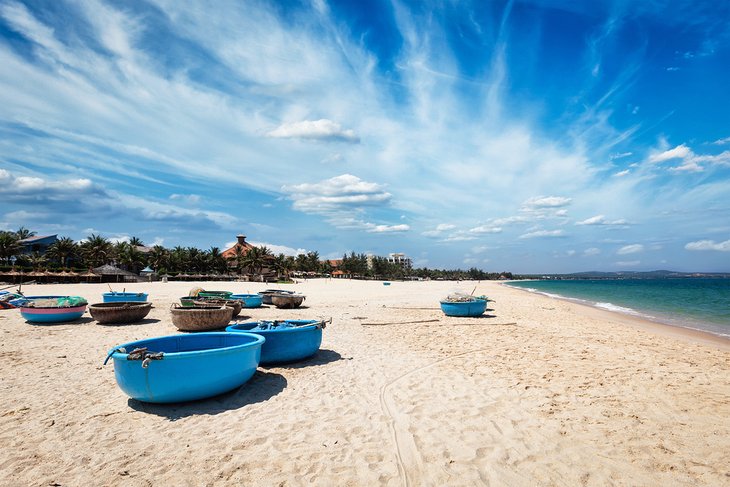
Once a sleepy coastal fishing town, Mui Né has developed into a beautiful beach resort town and a prime destination for windsurfing, sailing, and kitesurfing.
Compared to other beach destinations in Vietnam , however, Mui Né remains relatively unknown - and this means pristine beaches and a quiet retreat for most of the year.
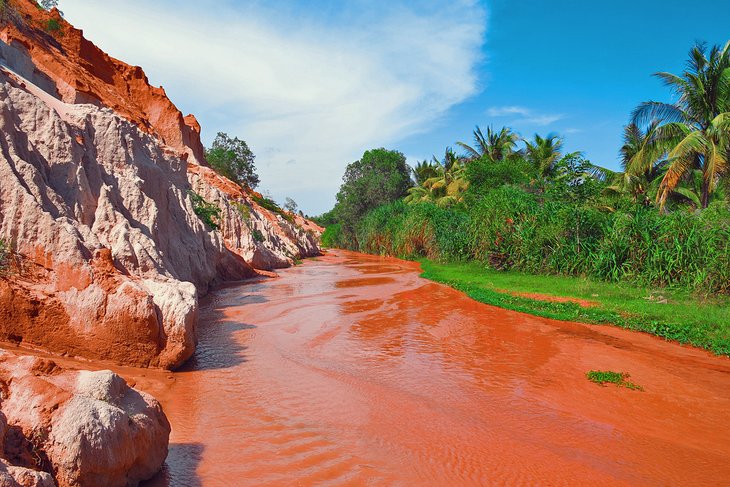
One of Mui Né's most unique attractions is the natural Red Sand Dunes just outside town, where visitors can practice sand-sledding or rent dune buggies for a more adrenaline-charged experience.
Tucked away between nearby fishing villages and towering orange limestone formations, there's the fairy stream, a slow-moving warm stream that almost feels like a walkway because it's so shallow - follow it to the end to reach a waterfall.
For those wishing to explore beyond the coastline, there are also the ruins of the Po Shanu Cham Towers - remnants of the Cham Empire that dominated the area many centuries ago.
Vietnam experiences strong monsoon seasons, where heavy rains hit the cities and the countryside, often causing floods and mudslides. If you're planning to travel around, the best time to visit Vietnam is during the dry season, which lasts from December to February – but there are some exceptions.
The south of Vietnam – where Ho Chi Minh city is located – experiences a more tropical climate, with high temperatures and high humidity year-round. Visiting these areas in the cooler months means less humidity and temperatures in the high 20s rather than the high 30s and 40s, which makes it more comfortable to walk around.
In the north, however, many areas experience an actual winter. Hanoi sees temperatures in the mid- to high teens in December and January – and in the mountains of Sapa in the north, you'll even get to see some snow during these months.
If you're visiting Danang for some beach time or to travel through the ancient town of Hoi An, it's best to arrive between February and May, when water and air temperature are in the 20s – perfect beach weather for enjoying the sand or a dip in the water. The rainy season, and especially the months of September and October, see very heavy rains and often very strong wind storms on the coast, so it's better to stay away from Danang during this time.

More on Vietnam
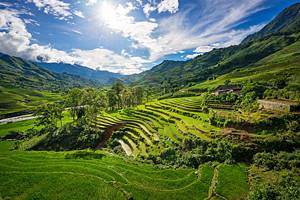

TRAVEL to VIETNAM – Tips and Information Guide (2024 Edition)
Everything you need to know about travel to Vietnam in our comprehensive 2024 Vietnam travel guide.
We get it. You’re wondering what the absolute best destination to travel in Southeast Asia is.
You’ve spent hours researching.
Talked to friends.
Scoured the internet for blogs.
Watched YouTube videos.
And you’ve finally realised something.
Without a doubt, Vietnam is the place for you.
And trust us, as a couple that have travelled the world for over a decade, we think you’ve made the right decision.
There’s a reason Vietnam is our all-time favourite country…
From the tropical coral reefs of Nha Trang to the northern mountains of Sa Pa, travel to Vietnam is one of the most adventurous yet culturally empowering experiences you can have.
One moment you will find yourself haggling for banh mi deep within Saigon and later that day you could be watching a breathtaking sunset from the Mekong Delta.
Vietnam is more than a country. It’s an experience.
You’ll find yourself immersed among street food vendors cooking up exotic cuisines such as pho along streets with stores selling suits and ties.
Or you’ll be cruising the waters of Halong Bay while monkeys jump from island to island.
Or you might find yourself trekking to the highest peak in Vietnam, Fansipan soaring to over 3,100 metres!
Not into adventure activities? Homestays are the perfect way to spend your day as the monsoon rains fall across the endless snaking rivers of the Mekong.
Vietnamese hospitality is unrivalled and is something that you should experience once in your life, so what are you waiting for? Say good morning Vietnam! And go get lost!
So we’ve convinced you to travel to Vietnam? Awesome!
Now check out the basic information about the country in our Vietnam travel guide.

25 BEST Things to Do in Hue, Vietnam (2024 Edition)
The perfect vietnam itinerary for 1, 2, or 3 weeks, canyoning in dalat – what it is really like, travelling in vietnam: at a glance.
Here are the basics about travel to Vietnam.
OTHER MAIN CITIES:
Ho Chi Minh City (Saigon), Da Nang, Hue
Vietnamese Dong (see current exchange rate ). 1USD approximately = 23,000 dong. 1 beer = 30,000 dong ($1.30USD)
ENTRY / VISA:
Travellers from most countries in the world are required to have visas. In most cases these can be obtained upon arrival for either 3 or 6 months. For information about your specific visa requirements click here.
Vietnam is fairly safe for travellers. Petty theft tends to be the biggest concern and always be on the lookout for taxi scams. Also of concern are minor auto/motorbike accidents. This is one place it’s great to have travel insurance when visiting.
ELECTRICITY:
220 Volt at 50Hz. Power plugs – Type A: 2 vertical pins, Type C: 2 round pins, Type F (also known as Schuko plug): 2 round pins (Be sure to get your universal travel adapter before you leave)
TRANSPORTATION:
Intercity travel is possible by plane, train and bus. Within cities, towns and villages you can expect to get around on bicycle rickshaws, motorbike taxes, taxis and bus.
Don’t Forget to Pack the Most Important Thing: Travel Insurance !
TOP 5 TRAVEL EXPERIENCES IN VIETNAM
With so much to see and do in Vietnam, it really is hard to pick the top experiences.
However, we think that to truly appreciate Vietnam you need to plan to do these 5 activities during your visit.
Take the Overnight Train from Hanoi to Sapa
Said to be one of the most eye-opening train rides in the world, as you pass through lush forests, rice paddy fields on your way to the Vietnamese – Chinese border.
Book your train ticket here .
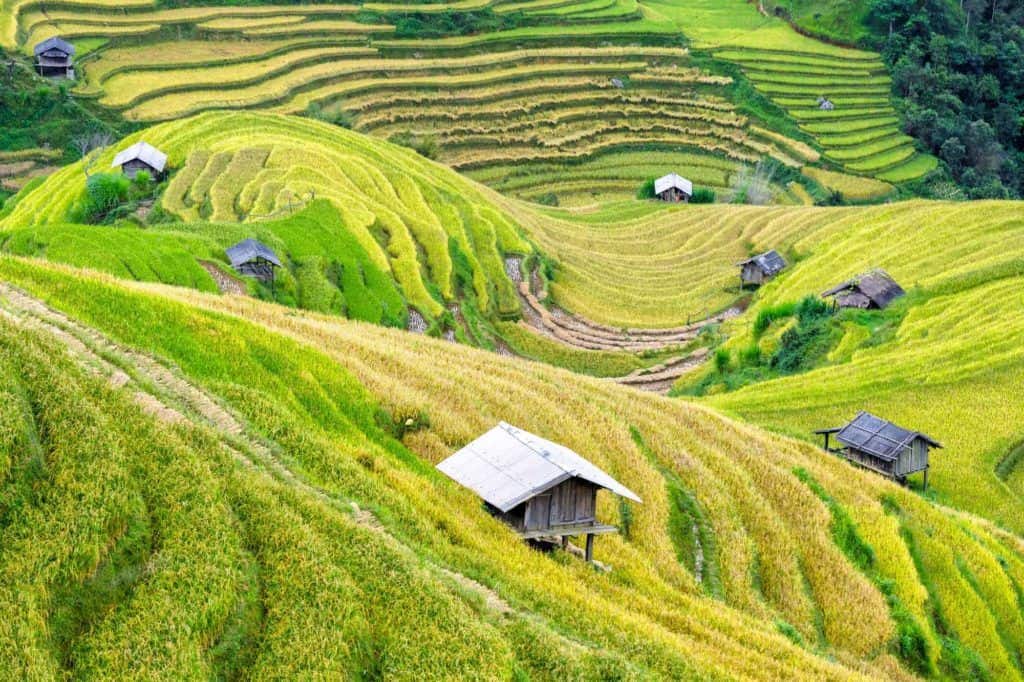
Hike Through the Rice Terraces of Sapa
Explore the area with the local hill tribes. Stay with them during your trek. And enjoy the beautiful terraced countryside for which Sapa is known.
Here’s our full post about trekking in Sapa .
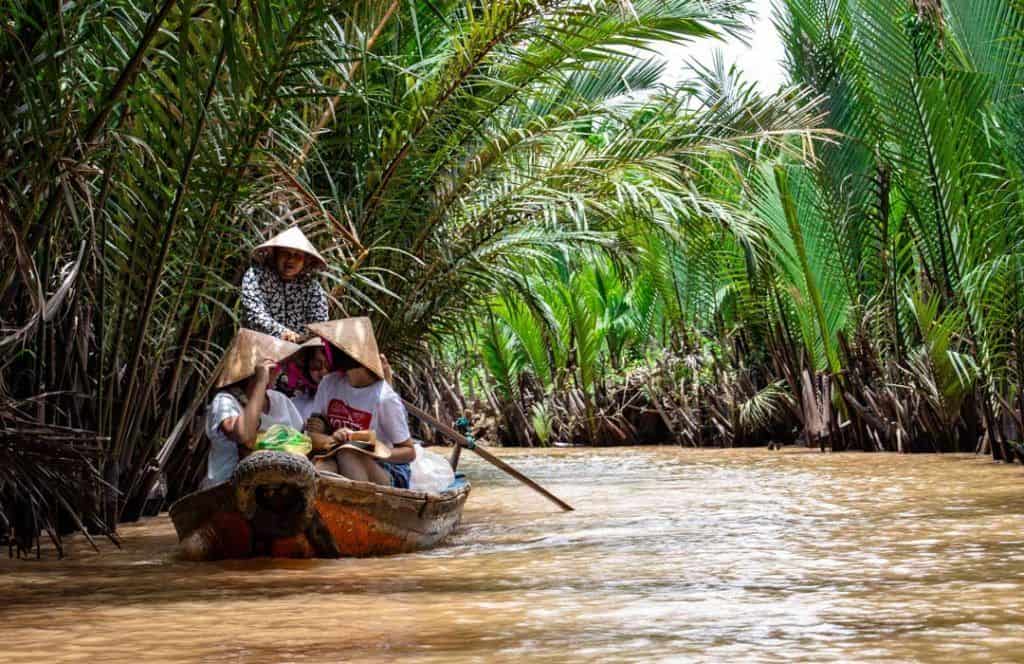
Cruise the Mekong Delta
Probably one of the ‘must do’s of Vietnam.’ The Mekong Delta is full of hidden gems including floating markets, friendly locals and late afternoon storms.
Book a multiday tour of the Mekong Delta
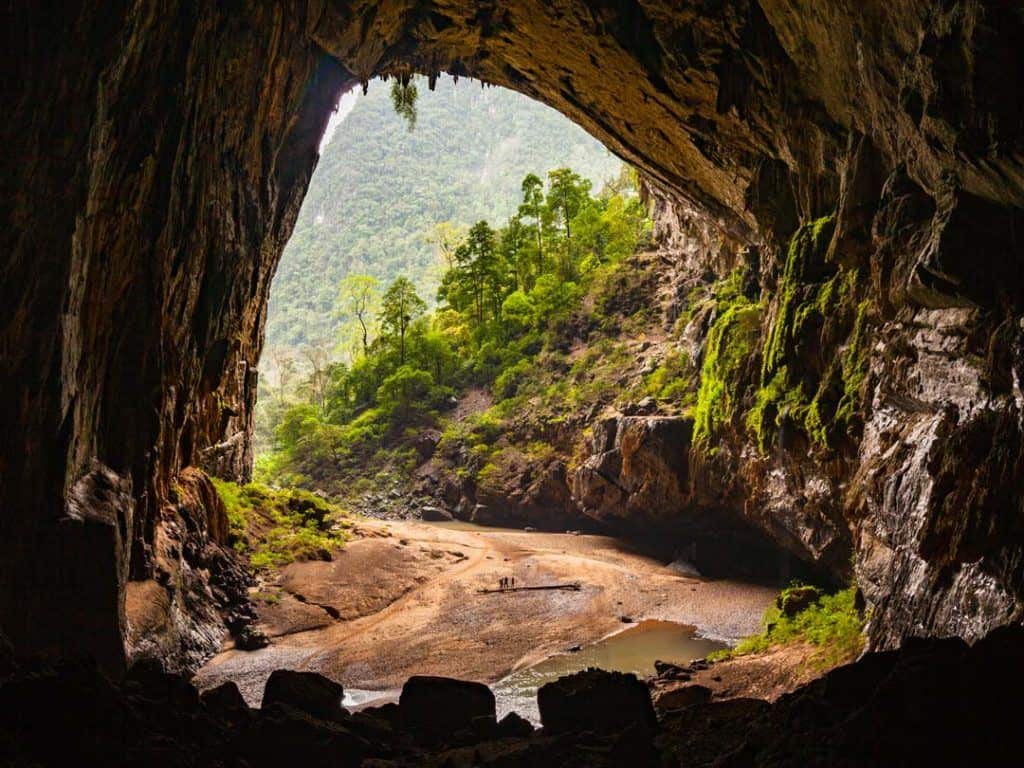
Go Caving in Phong Nha
Caves there can fit a 747 plane in it. They are massive and spectacular. This is an adventure you will never forget.
Book your Phong Nha cave tour
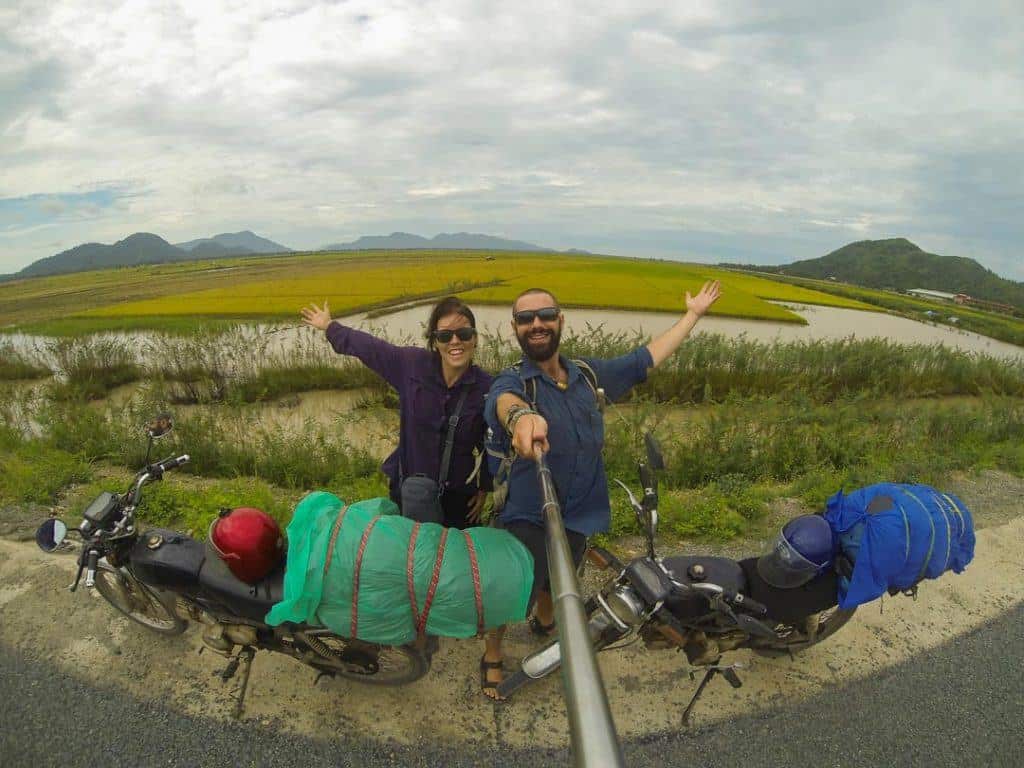
Ride a Motorcycle
Yes, that’s right! Hiring a motorcycle or scooter is a must. But maybe do it out on the country roads. Opt for the famous ride to the mountain village of Dalat, or pretty much anywhere throughout the country.
Read about how to ride through the famous Hai Van Pass
Other Things to do in Vietnam
Learn to cook Vietnamese food . Eating delicious Vietnamese food is one thing. Eating it after you’ve learned to prepare it is another!
Scuba dive in Nha Trang. You may not think of Vietnam as a big scuba location, but there is some great diving to be had in Nha Trang.
Go canyoning in Dalat. Rappel, slide, jump and climb your way through canyons in this gorgeous place!
Explore the Marble Mountains in Da Nang. These beautiful mountains have been mined for marble for years and have incredible views and temples to visit along the way.
Sandboard down the sand dunes in Mui Ne. It’s like snowboarding, but down massive sand dunes! Enjoy this rush!
Visit the Giants Causeway in Ghan Da Dia. Half the world away from the Giant’s Causeway in Northern Ireland, be amazed at this unique geologic structure .
Visit the Cu Chi Tunnels outside of Ho Chi Minh City. No trip to HCMC is complete without touring these historic tunnels that were used during the war.
Conquer the Hoi An Pass on a motorbike . This is known as one of the most beautiful sections of highway in the world. Enjoy!
Explore the world’s biggest cave . We have a special connection with Hang Son Doong as it is where we were engaged. Make your own special moment too!
Climb the highest mountain in Indochina in Sapa. Fansipan is over 3,000m above sea level and offers incredible views along the way to the top!
BE SURE TO CHECK OUT THESE OTHER AMAZING THINGS TO DO IN VIETNAM
READ MORE...
A First-Timer’s Guide to Trekking in Sapa
The 11 Best Things to Do in Da Nang, Vietnam (2024 Guide)
33 BEST Things to Do in Vietnam (Epic 2024 Guide)
10 BEST Things to Do in Ninh Binh, Vietnam (2024 Guide)
Scuba Diving In Nha Trang – Is It Worth It?
BEST PLACES TO VISIT IN VIETNAM
There are plenty of amazing places to visit in Vietnam. Depending on your interests, trip duration and time of year you will find plenty of things to do during any length of stay.
When slurping a bowl of pho in a local market or exploring an ancient temple, it’s easy to feel like you’ve stepped into a time machine in Ho Chi Minh City.
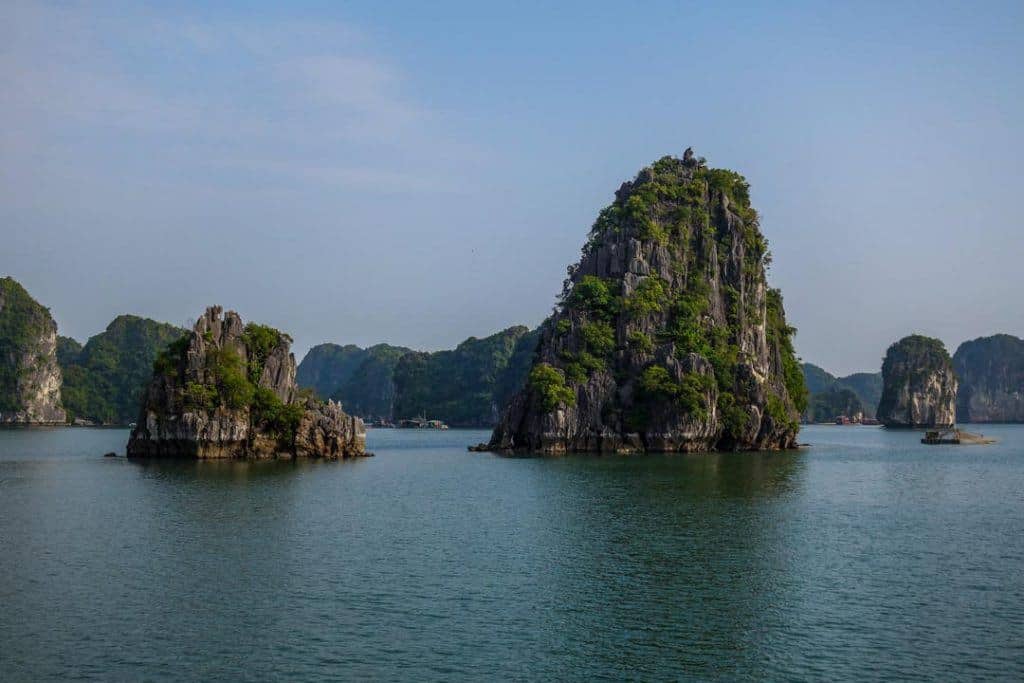
A collection of over 3,000 limestone islands providing endless kayaking opportunities. Take the time to relax aboard a boat or venture to Cat Ba National Park for mystical waterfalls!
Book your tour of Halong Bay
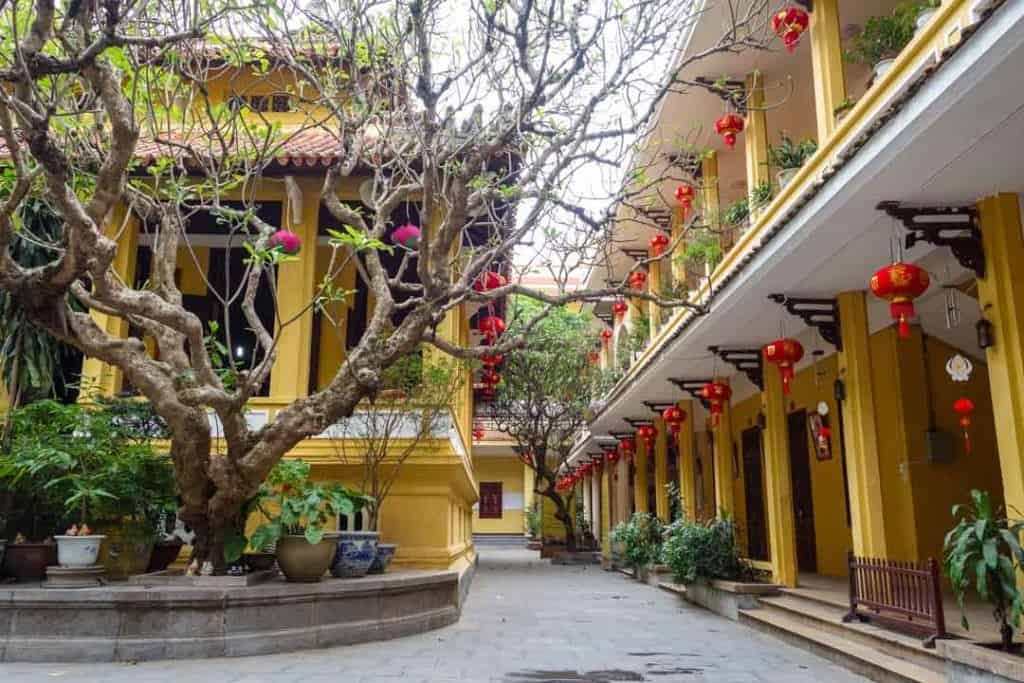
The capital of Vietnam is also one of the most ancient capitals in the world. The history of Hanoi is rich, devastating and full of legends. This mystical city is also known for its cuisine, silk, buzzing nightlife as well as cultural diversity.
Plan your 3-day Hanoi itinerary
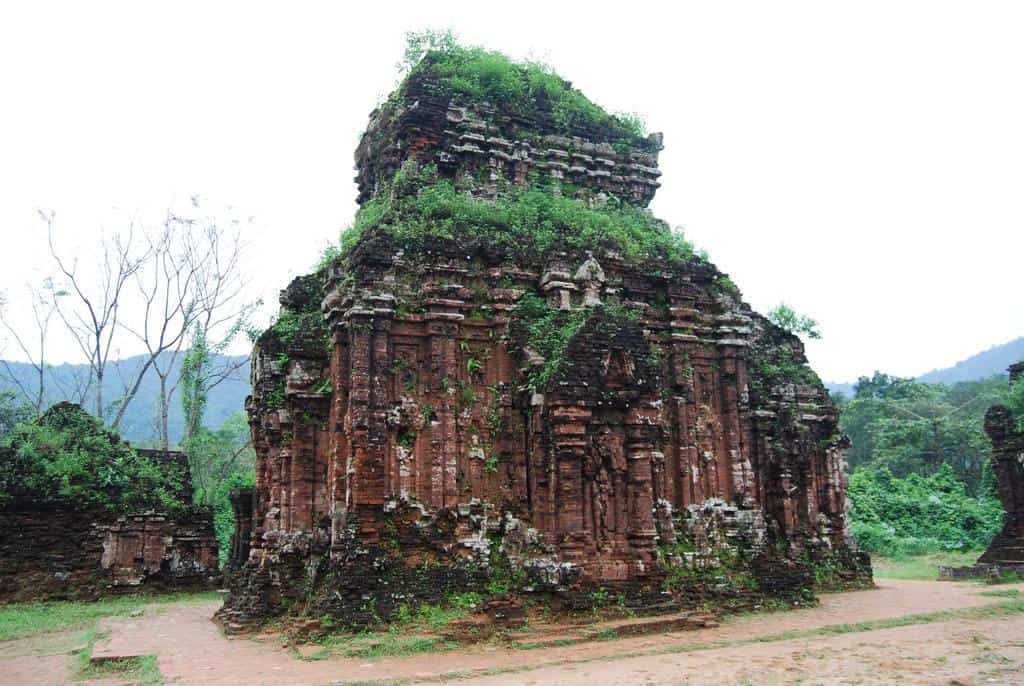
My Son Temple
Ancient temples dating back 1,000 years give a culture understanding into Vietnam’s past all while showing the scars of the war.
Book an early morning tour of My Son
For more information on specific things to do in the top places to visit in Vietnam, reference our following city travel guides:
Ho Chi Minh City:
* Ho Chi Minh City Itinerary * Day Trips from Ho Chi Minh City
* Hanoi Itinerary * Day Trips From Hanoi
Dalat Hoi An
Da Nang Hue Ninh Binh
BE SURE TO CHECK OUT THESE OTHER AWESOME PLACES TO VISIT IN VIETNAM.
BEST VIETNAM TRAVEL ITINERARY
We’ve put together a few Vietnam itineraries that are sure to leave you wanting for nothing at the end of your visit.
There are so many amazing things to do in Vietnam that planning an itinerary for your travel can be a little overwhelming.
Even though the country is one united nation, you can think of it geographically as being divided into a northern and southern region.
So depending on how much time you have, you may want to explore the northern region, southern region or the entire country.
Of course, no one-size-fits-all plan will suffice. But if we were to head back to Vietnam these are the top places and things that we would want to do!
1-Week Vietnam Travel Itinerary Highlights
Most people spend at least a month went hey travel to Vietnam. But if you had just one week, or were willing to split a few weeks between the northern and southern regions, this is how we’d spend our time!
Northern Vietnam
- Fly into Hanoi
- 2 nights – Hanoi
- 2 nights – Halong Bay or Bai Tu Long Bay
- 2 nights – Sapa
- Alternative to Sapa – 2 night in Hue
- Fly out of Hanoi
Central Vietnam
- Fly into Hanoi or HCMC. Get a local flight down to Dong Hoi
- 3 nights – Phong Nha
- 2 nights – Hue
- 2-3 nights – Hoi An
- Fly out of Da Nang to either Hanoi or HCMC to leave
South Vietnam
- Fly into Ho Chi Minh City
- 2 nights – Ho Chi Minh City
- 2 nights – Mekong Delta
- 2 nights – Dalat
- 1 night – Mui Ne
- Fly out of Ho Chi Minh City
READ MORE: Check out this post for more details on our Vietnam travel itinerary .
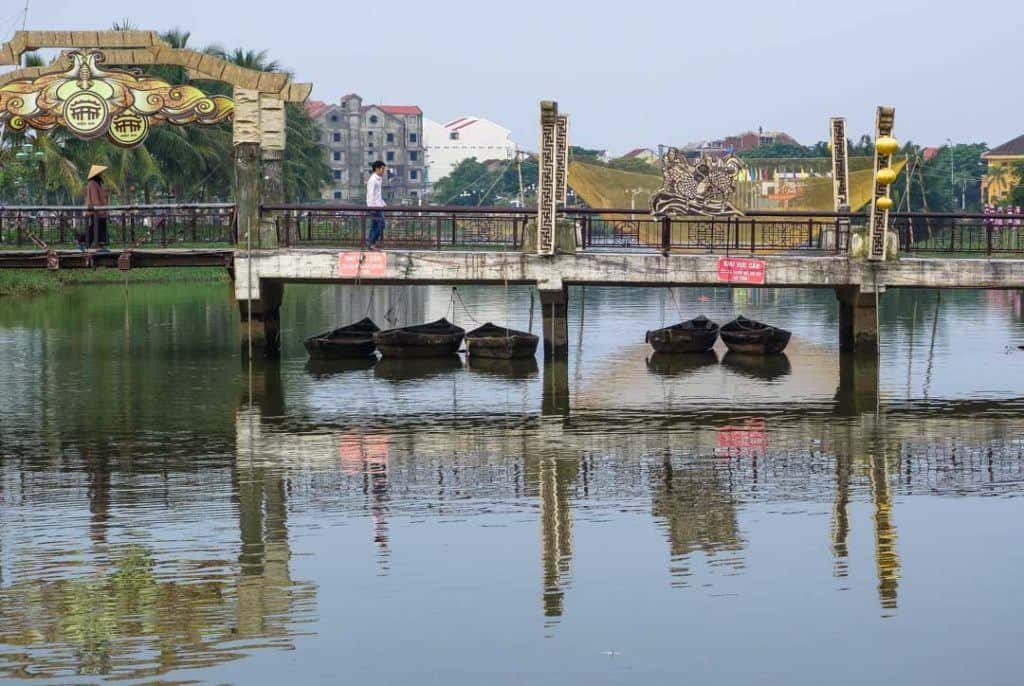
VIETNAM TRIP PLANNING
Best time to visit vietnam.
The best time to travel to Vietnam really depends on what you are looking for in terms of weather, scenery and budget.
Peak season occurs from mid-December through to February. But expect prices to double during this time. The low season is perfect for those on a budget.
- Low Season – April to June, September to November
- Shoulder Season – December to March
- High Season – July & August
Northern Vietnam – The best months to travel Northern Vietnam are April to May or September to October. There are mostly sunny days and the rain has stopped.
The weather gets really cold from December to March and is not suited for hiking or sailing a junk boat in Halong Bay that time of year.
Central Vietnam – The best months for travel to Central Vietnam are January to June. There are heavy rains in October and November and the really hot months are from May to August.
Southern Vietnam – The best months to explore Southern Vietnam are January to April where conditions are beautiful.
You really can travel the south at any time of the year. Just note that from May to November there are afternoon downpours.
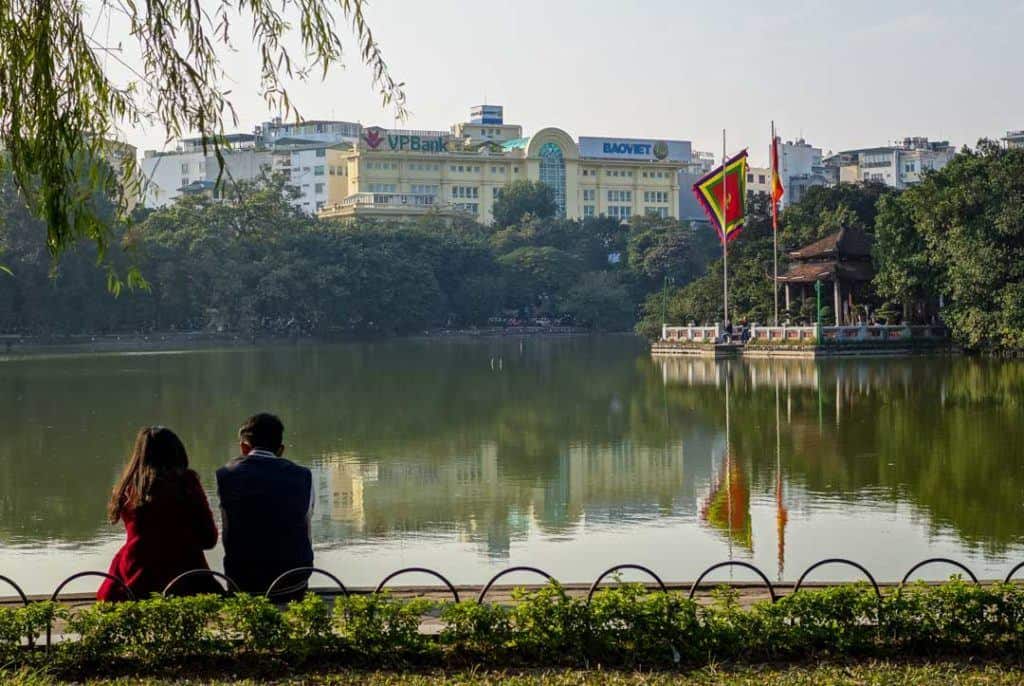
VIETNAM TRAVEL BUDGET GUIDELINE
Vietnam is a cheap country to travel if you want it to be, this all depends on what your budget is like. Our advice is always over-budget when making plans, and if you come home with money, it can go towards your next trip. All prices below are in USD per day.
Budgeting Tips
To make your money go further here are a few tips:
- Eat street food as often as possible. You can usually fill up for $1-2USD.
- Travel in groups when possible. Staying in hostels will lead to making friends. And with friends, you can split transportation costs and barter on other expenses.
- Negotiate taxi fares before taking the ride. Vietnamese taxi drivers are notorious for flexible fares that tend to fall int heir favor. Don’t be afraid of a little negotiation.
- Drink bia hoi . Sure it’s not the more delightful beer. But it is shipped in fresh each day, it’s cheap and it’s what the local drink.
- Take in the sights for free. Do a little research and walk the streets on your own. You’ll also find there are a number of free tours and other opportunities if you ask around.
- Sleep on overnight busses for longer trips. Combine the transportation and accommodation line items of your budget and save a few dollars.
But there are a few things you should know about the different budgets at which you can choose to travel.
Note: Budgets shown as Single Traveller / Couples per day.
Budget Traveller ($35 Single / $50 Couples)
If you are on a backpacker budget and planning on staying in dorm rooms, getting street food, drinking a few nights of the week, I would budget for about $35 a day.
A single hostel bed can be $5-$8 per person. A budget basic private room is $15-$20. A street food meal can be $1-$2. A bottle of beer is about $1- $1.50 and a bia hoi is $0.20 per cup. This is not the nicest beer. But it is passable and you get to make new friends when drinking it.
Walking or taking public transport will keep your budget down. There are many free things to do, you just need to think outside the box.
Mid-Range Traveller ($100 Single / $120 Couple)
If you have a little more cash in your budget your travels in Vietnam will become a lot more comfortable.
A nicer hotel is definitely affordable.
There are restaurants where you will pay more than the street food price. But the food is definitely of nicer quality (most of the time). The local beer can get a little too much sometimes so you will be able to enjoy an international beer or wine.
For the attractions you are most interested in, get a guide and learn more about the history of the country. You’ll be able to commit much more of your budget to do things rather than cutting corners just to stay alive.
Luxury Traveller ($90+ Single / $120+ Couple)
You don’t have to have that much more to enjoy a luxury trip to Vietnam. With a few more dollars in your budget, a nicer hotel is definitely affordable. Eat and drink anything you would like at virtually any restaurant.
You can hire transportation without having to haggle. And you can pretty much do any tour you would like to do when visiting any part of Vietnam.
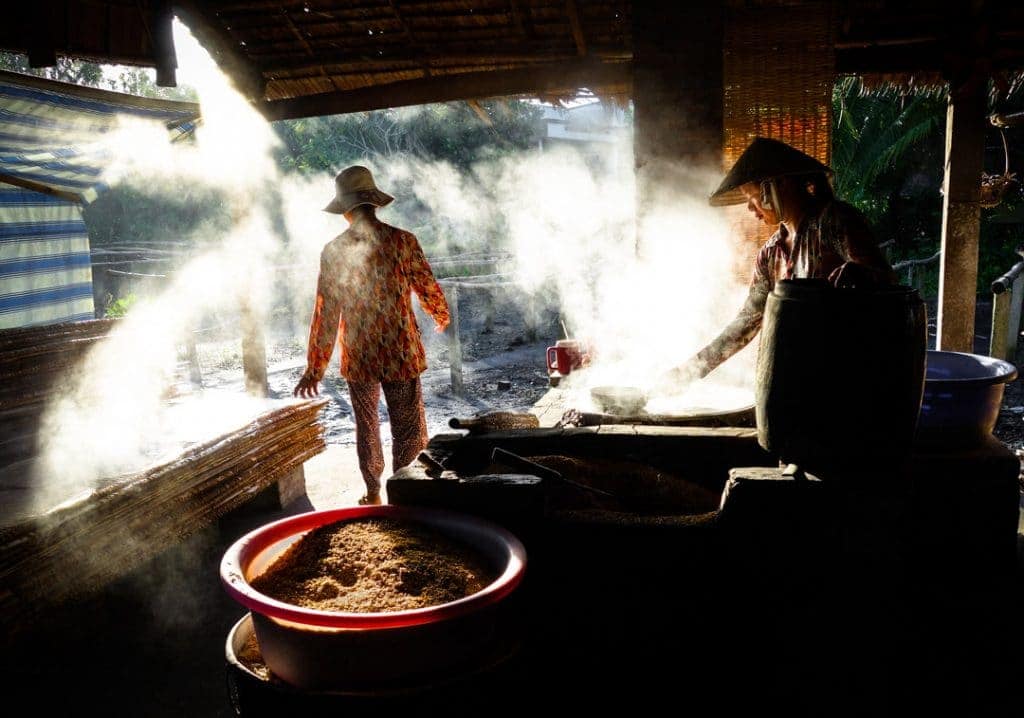
GETTING TO AND AROUND VIETNAM
Entry requirements.
Most travellers are required to have visas when travelling to Vietnam, which can typically be arranged upon arrival. You are typically allowed to stay for 3 – 6 months, depending on nationality.
For information about your specific visa requirements click here
Additionally, Vietnam has introduced an electronic visa (e-visa), which costs $25 USD and is granted for single entry visits for up to 30 days.
You no longer will have to apply through an agent to get an invitation letter or queue at the airport immigration for hours waiting to receive your visa upon arrival.
Apply in advance here .
Once you are approved, all you need to do is print the visa out and present it on entry to Vietnam. Don’t lose this e- visa print out as you will need this during your travels in Vietnam.
Hotels will ask for it on check-in at the accommodation and travel agents may ask for it if you are booking flights.
Also, print out your travel insurance as well. Immigration will ask for this also as they want to know you are covered if you fall ill or get injured during your stay.
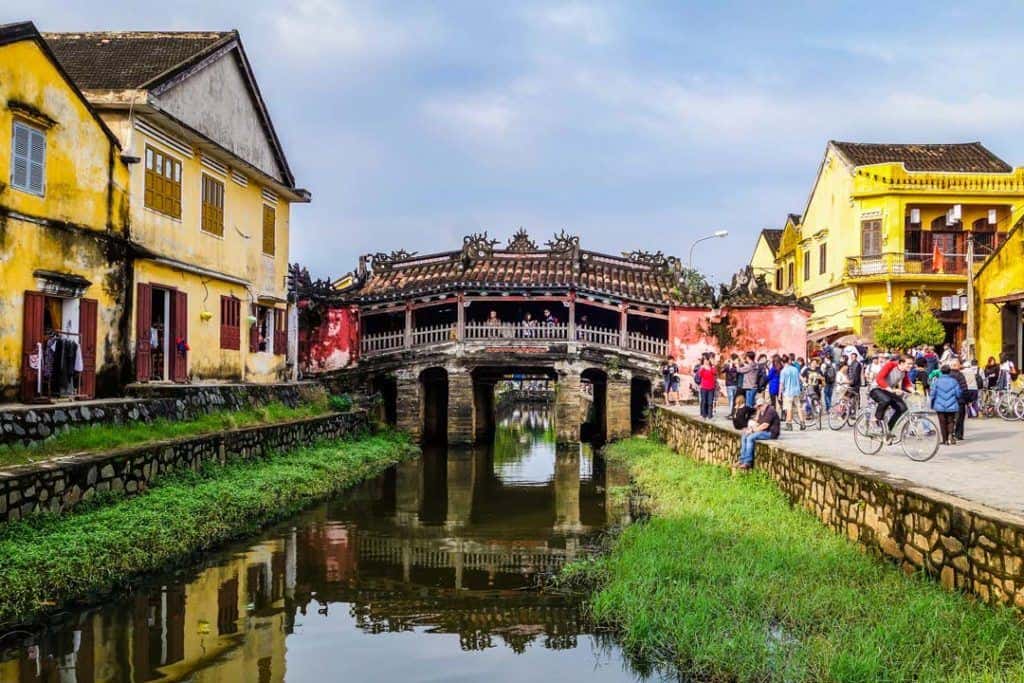
Getting to Vietnam
There are a number of different ways to travel to Vietnam, depending on where you are coming from and how you like to get around with transport.
There are a lot of different airlines that fly to Vietnam from all over the world. There are two major international airports in Vietnam: Tan Son Nhat Airport (SGN) in Ho Chi Minh City in the south and Noi Bai Airpot (HAN) in Hanoi in the north.
Direct flights to Vietnam from Australia, Europe and North America are still limited, but it is improving. You will most likely have to book a flight with a stopover in either Hong Kong, Bangkok, Kuala Lumpur, Seoul or Singapore.
There are many domestic airports scattered among the country. Vietnam Airlines is Vietnam’s national carrier. We have flown with them several times and they are amazing.
You can cross into Vietnam by train from China, all the way from Beijing to Ping Xian. This is the Dong Dang Crossing which is 160km from Hanoi.
After you have crossed the border hop on a train to Hanoi. Don’t buy the direct ticket from Beijing to Hanoi. It works out cheaper to buy your ticket from Beijing to Ping Xian then cross the border and purchase another ticket from Dong Dang to Hanoi.
If you do the train trip from Beijing through to Hanoi, it will take 36 hours so it is best to book a sleeper. Make sure you have your visa organised before getting to the border.
You can bring your own food and drinks for the train or purchase them from the cafeteria on board. There are squat toilets on board and areas to store your luggage.
You can get to Hanoi or Ho Chi Minh City through either the Cambodia, Laos or China borders. There is a route from Vientiane (Laos) to Hanoi, and one from Siem Reap or Phnom Penh to Ho Chi Minh City.
Most travel agents in Vientiane, Siem Reap or Phnom Penh will sell the tickets or at your accommodation. You can also get a minivan from Guangzhou through to Hanoi.
Make sure you have your visa ready. The border crossings by land may not be set up as well as others.
If you want to book any of your bus trips online rather than trying to deal with travel agencies in the country, you can do so on the popular website Bookaway .
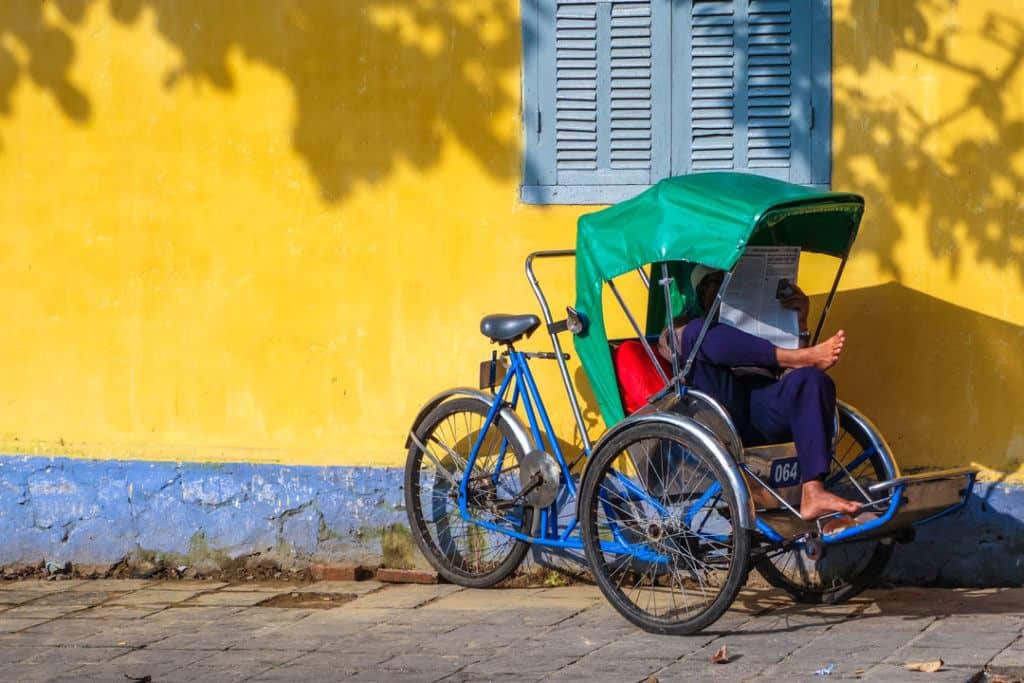
Getting Around Vietnam
Getting around Vietnam is surprisingly easy. Public transport goes everywhere, and there are plenty of moto-taxis that are happy to take you to the places that public transport won’t reach.
Travelling by Air
The fastest way to get around the country, of course, is by air. There are many domestic airports all over the country and you can fly in from major cities.
You can get cheap flights within the country through VietJet Air and Vietnam Airlines. For the best deals head directly on the airline’s website.
Travelling by Taxi, Tuk Tuk Or Mototaxi
When you are in the cities and town catching a taxi, tuk-tuk or moto-taxi can be the best way to get around. For taxi companies, look for the biggest and most reputable companies as you can be ripped off.
For the tuk-tuks, ask your accommodation the average price to your destination so you can agree on a price with the driver.
We recommend Uber and Grab (car or motorbike) which you can use an app and get the price.
Travelling by Bus
It is possible and advisable to travel by bus throughout Vietnam. Busses inside of cities can be complicated and should be a last resort.
However, when travelling long distances in Vietnam busses are a great option. This is especially true if you take night busses and sleep during the ride.
Travelling by Motorbike
We think travelling by motorbike is the best way to see Vietnam if you have the time. Buy your own motorbike and ride the length of the country. Or you can choose one area and explore Northern Vietnam or South Vietnam.
Here’s our post to help guide you on how to buy a motorbike in Vietnam .
Travelling by Train
Taking the train is a great way to get around the country. They are great for overnight journeys as the trains have bed cabins.
In Vietnam, there are many places with roadwork that can last for years. So trains can be the best way to go.
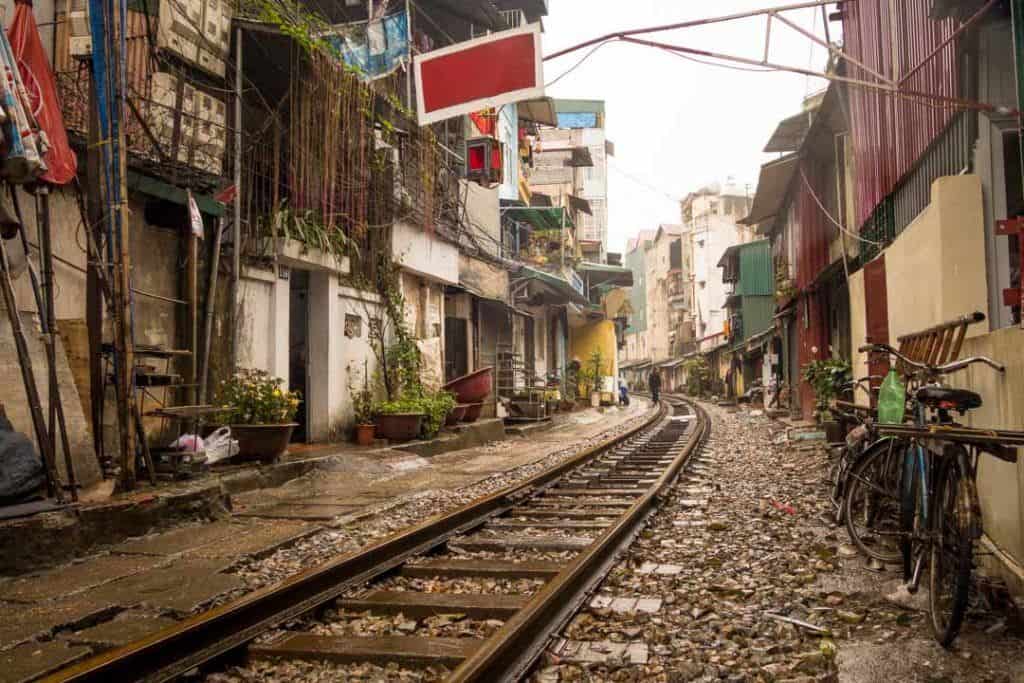
APPS AND TECHNOLOGY
We know you’ll absolutely love travelling in Vietnam. But technology has made it easier, more affordable and safer to travel than ever.
Here are a few apps we think you should definitely acquaint yourself with prior to your travels:
Grab – Use this app to catch a ride from any metro area in Vietnam.
XE Currency – Transfer, monitor and calculate currency as the need arises. This app may not be totally necessary as you are typically tied into rates the banks charge for services. But it is handy to have around.
Express VPN – This will protect your sensitive information wherever you travel – not just in [Country]. Be sure to have this to keep your online information secure as you travel.
iTranslate – Even if you don’t know more than a handful of Vietnamese words, iTranslate will help you communicate as you travel in Vietnam.
WiFi Finder – With this app, you no longer have to guess whether the next place on your itinerary has WiFi or scramble across town looking for hot spots.
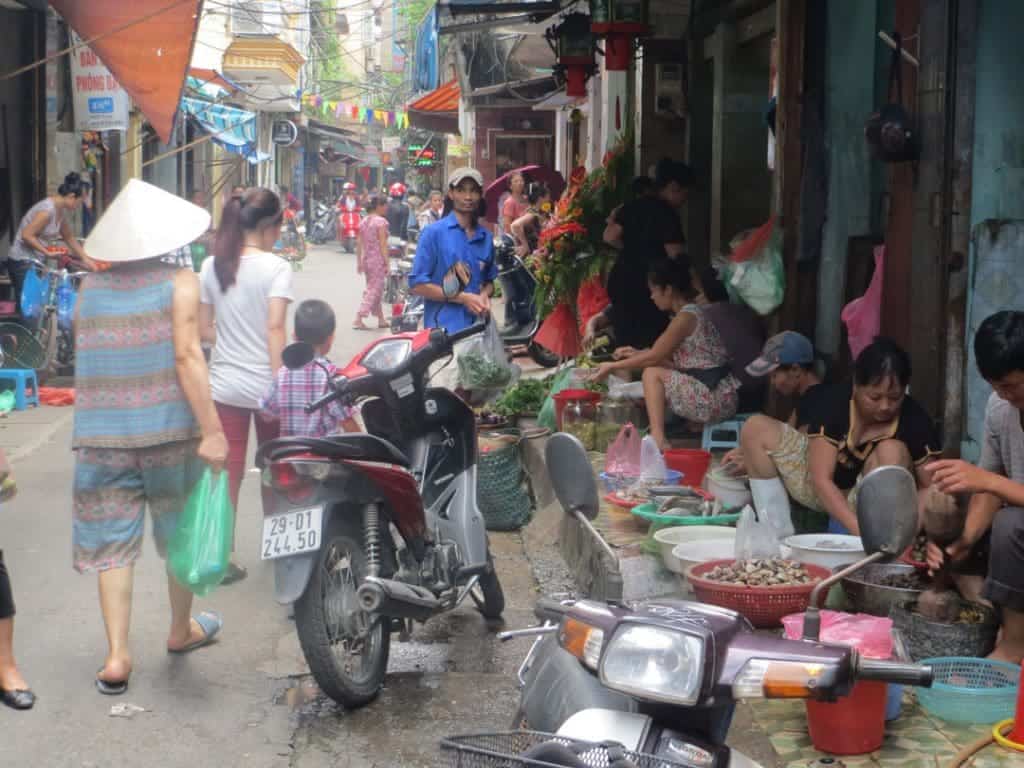
BEST THINGS TO EAT IN VIETNAM
When you travel to a foreign country one of the new and most exciting things you will experience is the food. There are so many amazing food choices in Vietnam, and Vietnamese food is delicious.
Here are a few of our favourites.
Goi Cuon: This is a rice paper packed with greens, coriander and various combinations of minced or shredded pork, shrimp or crab. It will be served with a sweet and sour sauce or a delicious homemade peanut sauce.
Sometimes to make the experience even better, you get to hand roll them yourself. This was our favourite dish.
Banh Mi: With this one, it will be different in every corner of Vietnam. This is a baguette sandwich that is filled with meat, greens, pata, pickled vegetables, soy sauce, cilantro and sometimes an omelet.
The meat filling will be roasted pork belly, grilled pork loin, barbecue pork, boiled chicken, or a fried egg.
Pho (pronounced ‘fur’): This flat rice noodle soup is either light beef or chicken broth flavoured with coriander and ginger with spring onions and bits of meat (chicken, pork or beef).
It is a dish you can have any time of the day and is delicious, but it can be hit and miss in some places. If you have an average one, please do try it again. We ate pho a lot for breakfast and never got sick of it.
Bun Cha: This is a Hanoi specialty and it is deliciously addictive. Bun Cha is served with grilled fatty pork over a plate of white rice noodles. It will be served with a sauce.
It will all be served separately and you combined everything together. You can ask for some little fried spring rolls on top too. It is so delicious!
Coa Lau: Hoi An is the best (and only authentic) place to try this one. as the noodles are made using water from a special well in town.
It is chewy rice flour noodles with Chinese barbecue pork, bean sprouts, croutons and fresh herbs in a delicious pork-based gravy.
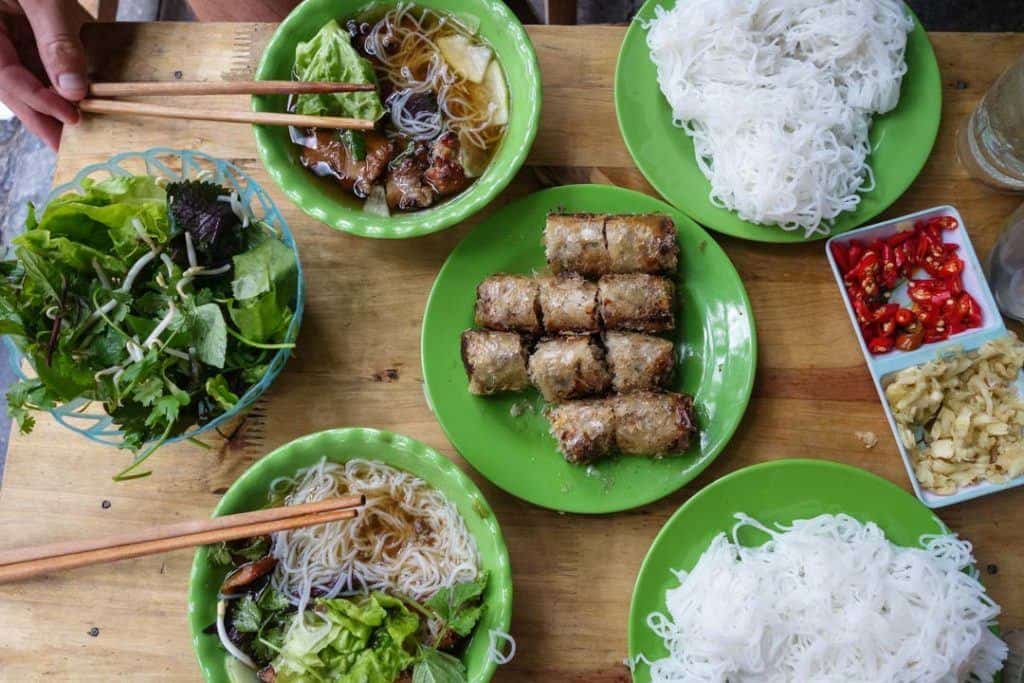
PLACES TO STAY IN VIETNAM
There are accommodation options for all budgets in Vietnam. You can stay in a shared dorm for $5 USD per night, or a luxury hotel for over $300 USD.
The accommodation standards can vary in each destination.
For example, we got a really nice hotel in the middle of nowhere when we were on our bike for $12 a night. But we would not find a place like this in Hanoi, Hoi An, HCMC or Hue for less than $25.
NOTE – In Vietnam, the accommodation will keep your passport for the duration of your stay. This is to do with the government. Officials will randomly come around and check hotels and hostels.
If they do not have the ID or passport of every person staying there, the accommodation will be fined. The accommodation will keep your passport in a safe. If you are unsure just ask, “do you lock my passport up?”
Types of Accommodations
Vietnam is wildly popular among backpackers. Because the costs are generally incredibly low, budget travellers flock to the country.
This means that there are lots of great hostel options when looking for accommodations in Vietnam.
Whether you are busy spending all your time exploring and are just looking for a cheap place to crash for the night or want to make friends along the way, you will find most of what you are looking for in a variety of hostels throughout Vietnam.
Because costs are generally lower in Vietnam than in most parts of the world your quality of life can go up quite a bit when you travel to Vietnam.
One way you can upgrade your travel experience is by booking rooms in hotels instead of beds in hostels. For a few dollars more you’ll get vastly more space and privacy.
In some towns and villages, hotels are your only option.
But generally, these are very reasonably priced. You can expect to spend USD$20-30 for a decent hotel room in most cities, towns and villages across Vietnam.
Another good option in recent years is AirBnB, and there are more and more amazing places popping up to stay in Vietnam for very affordable prices every day.
As is typical in many destinations where Airbnb accommodations are available, you’ll likely find great value and a little more personal space with an Airbnb stay.
If you’re looking for an awesome place to stay, we personally love using Airbnb. If you’ve never used the platform before, sign up using this link to get USD$35 off your first booking .
Our Favorite Places to Stay in Vietnam
We travelled from the south to the north and stayed in many different places. Here are a few accommodation options we highly recommend.
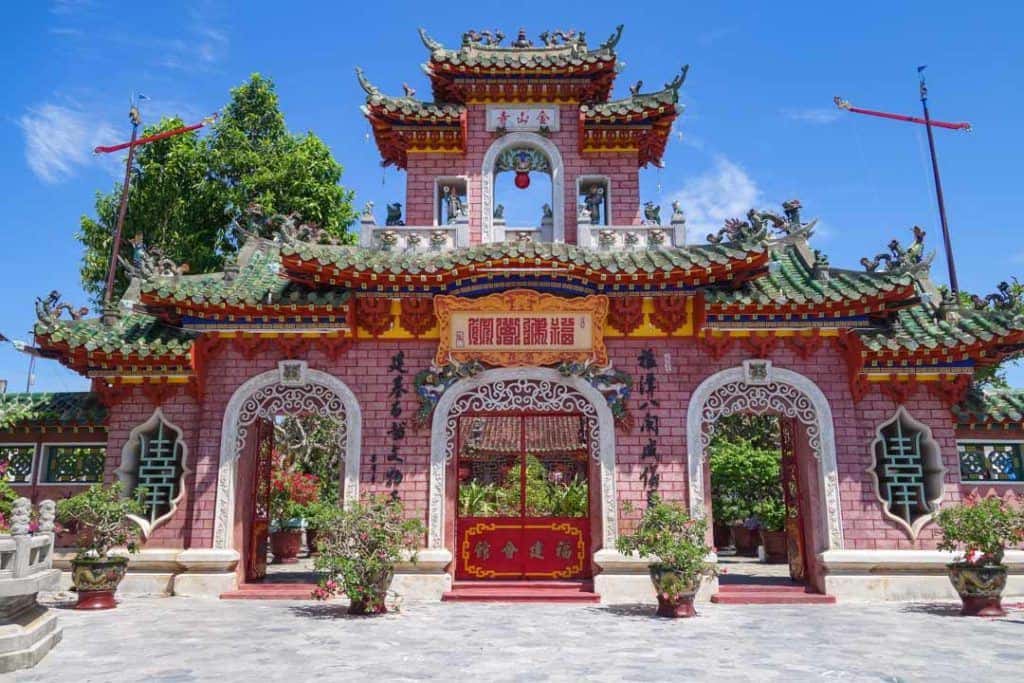
VIETNAM TRAVEL TIPS
The Vietnamese people are friendly, welcoming and hospitable towards travellers. It is a great destination to travel to in Southeast Asia.
The people are very respectful and would like the same back from you. Here are a few things that you should know before going to Vietnam.
GENERAL VIETNAM TRAVEL TIPS
While we have many basic travel tips we suggest you use when travelling to Vietnam, there are also plenty of Vietnam-specific tips that will make your visit the best it can be.
Here are a few we recommend you consider as you plan your trip to visit Vietnam:
Please show respect to their religious beliefs and their cultures . You are travelling to someone else’s country. They have different religious beliefs and cultures in your home. Please respect them.
Watch your belongings. Vietnam is a safe country but unfortunately, there still is petty theft. Whether you are at a restaurant or on a bus always watch your belongings.
Beware of the counterfeit tour agencies . Unfortunately, there are plenty of these around, especially in the main tourist areas. Book through the main owner or operator or any of these tours that we recommend .
Do not drink the tap water. The locals don’t even drink the water. There is bottled water available everywhere. Popular tourist restaurants will usually have on their menu that they wash their salad and veggies in sterilised water and make tea, coffee and soup from that too.
Carry toilet paper everywhere . There are toilets available in restaurants or in public but there may not be toilet paper. Most of the time you have to pay for the public toilet and they may give you some toilet paper, but don’t count on it. Always have your stash.
Toilet paper goes in the bin . DO NOT put the toilet paper in the toilet. Please put it into the bin provided. Vietnam’s sewerage systems are not built for much more than human waste so toilet paper and other items will just clog up your toilet.
Embrace the “bum gun “. Next to every toilet in Vietnam, there is a water hose. This is not to wash down the floor. This is to clean yourself up after you do your business. Don’t be disgusted by this. Embrace it.
Vietnam is bigger than you think . This country is huge and many people underestimate it. Vietnam is about 1,650 kilometres long from north to south. The distance on buses and trains is long so be prepared.
Take note of the Vietnamese money . It will be a new currency for you so do take a look at it before you go out spending. There are more zeros in it than you might be used to (1USD = 23,000 Dong)
Always take photos when you rent a scooter . Renting a scooter in Vietnam is something everyone does. It is a great way to get around and see all the attractions. But where you rent it from can get you into trouble. Whenever you rent a scooter take photos of the bike or else might end up with a crazy expensive bill.
Always wear a helmet. Always . Please wear a helmet. The roads are crazier here than they are in your country. The rules are different and road conditions are not the best. A quality helmet could save your life in an accident.
Make sure you have travel insurance . We tell people who are going travelling, “if you can’t afford travel insurance, you can’t afford to travel.” You do not know what is going to happen while you are away and knowing you are covered will put your mind at ease.
Be confident when crossing the road . The roads in Vietnam are crazy. Crossing the road can be daunting but you need to be confident. Do not walk backward or hesitate. Walk slowly and watch the traffic coming towards you. They will all move around you.
Take your shoes off before entering a temple or a person’s home . It is a custom that stems back to ancient times and a big part comes back to cleanliness. The ground is used for chatting, dining and even sleeping.
Cover your shoulders and knees when entering a temple . This is common in most religious sites. There are always signs suggesting visitors dress ‘appropriately.’ Shoulders and knees should be covered. If it is a hot day and a t-shirt is too sticky, carry a scarf for when you visit to cover your shoulders.
Keep a low profile . Do not be loud, raise your voice in aggression or show off. Do not show dramatic affection publicly like kissing. Save it for the hotel room
Ask for permission before taking a photo of someone . This is polite and ensures you are not intruding on them. The people are not there for your entertainment. If they say no, smile and thank them anyway.
Do not take photos of anything to do with the government or military. This is a big NO in any country and can end up with you in jail.
Do not touch someone on the head . The head is the most important part of the body. Touching someone’s head who you don’t know is like saying you are more important than they are.
Place your chopsticks across the top of the bowl when finished . Don’t have your chopsticks hanging out of the bowl, and don’t point them at anyone when they are resting on the plate.
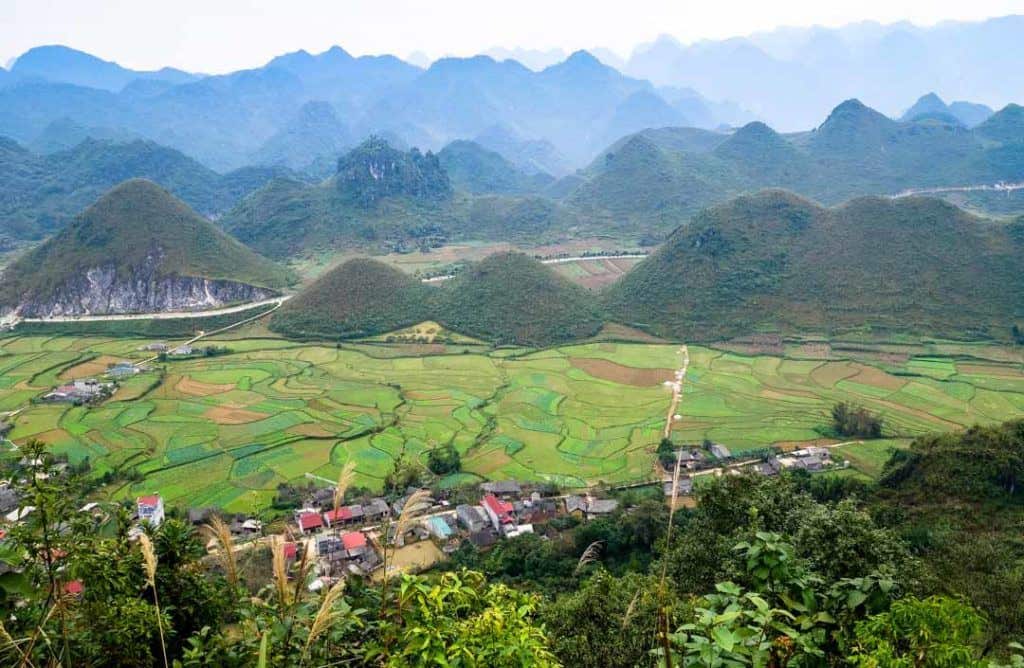
VIETNAM PACKING LIST
We always travel with a core packing list wherever we go. And when it comes to Vietnam, many factors will affect what else you need to bring along with you.
Check out our travel essentials and be sure to add any of the other additional items listed below.
Important Note! Before you book any international trip, we honestly recommend getting travel insurance. You never know when things will go wrong, and medical bills can add up quickly if you get sick or injure yourself overseas.
Our personal recommendation based on our own experience is World Nomads .
TRAVEL INSURANCE. SIMPLE & FLEXIBLE.
Which countries or regions are you traveling to, what’s your country of residence, enter traveler’s age, staying safe in vietnam.
Vietnam is extremely safe, apart from the one major danger which is the roads. They are crazy, even more so if you try to ride 10’000km around the country on motorbikes as we did!
Aside from that, common sense will keep you safe.
Here are a few reminders of what common sense when travelling in Vietnam means:
As you saw above, Vietnam is extremely safe. We did not feel unsafe once in the 7 months we were there (excluding the roads).
This doesn’t mean you can completely let your guard down though, and petty theft does happen in this country, although it’s not common.
Some tips for protecting your things:
In other words, use common sense and you’ll be fine.
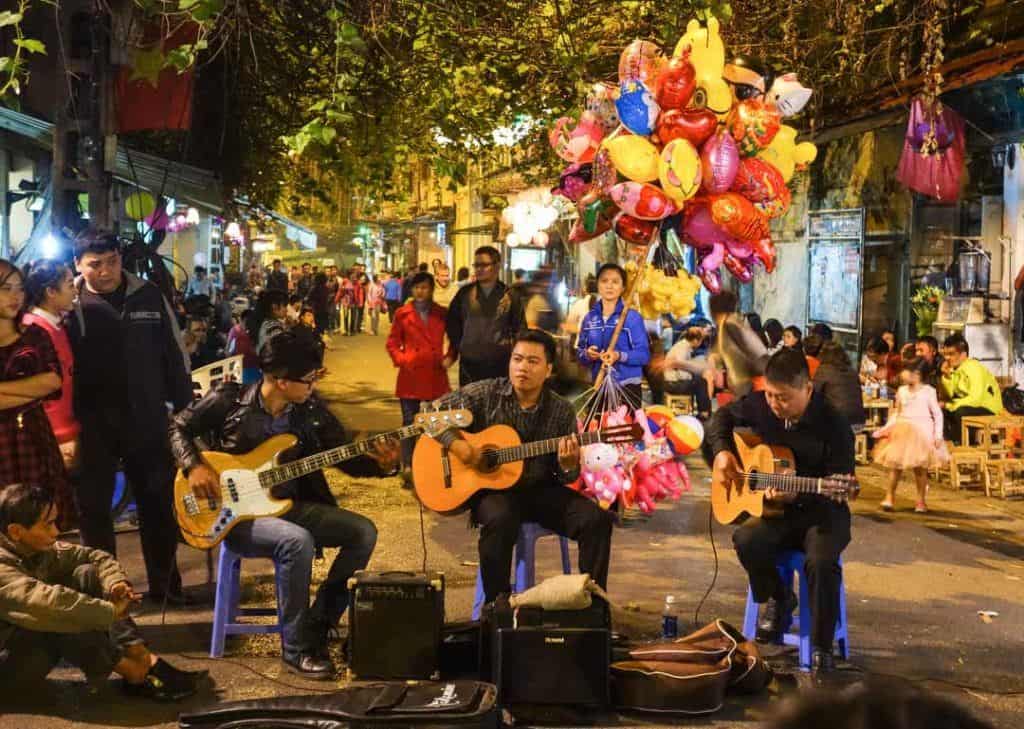
STAYING CONNECTED IN VIETNAM
Staying connected with friends and family (and work) when travelling in Vietnam is important. But if you don’t know how to connect you can find yourself greatly inconvenienced or spending too much money.
We feel like your money will go a lot further if you consider a few options.
Purchase a SIM Card
Picking up a SIM card has become the quickest and typically most affordable way to stay connected in Vietnam or any country for that matter.
If you have an unlocked phone you can use a 4G SIM card to connect to the cellular networks in Vietnam. From there you can cast a hot spot if you need to crank out some work on your computer or want to connect a tablet.
This 3G/4G SIM card is a great and affordable option for a SIM card if you are flying into Vietnam.
Rent a Portable WiFi Device
Alternatively to a SIM card, particularly if you don’t have an unlocked phone, you can rent a portable WiFi device during your travel to Vietnam.
This device will be delivered to you when you arrive in Vietnam and will provide 4G service for less than USD$5 per day.
You’ll be able to connect anywhere you can find service across the country, which will be most of the places you are likely to travel in Vietnam.
Access Free WiFI
Free is always best, if it is convenient. And there are plenty of places throughout Vietnam that will provide free WiFi in public spaces or at restaurants, cafes and hostels and hotels.
We recommend using the WiFi Finder app, which will help you locate WiFi anywhere you travel in Vietnam.
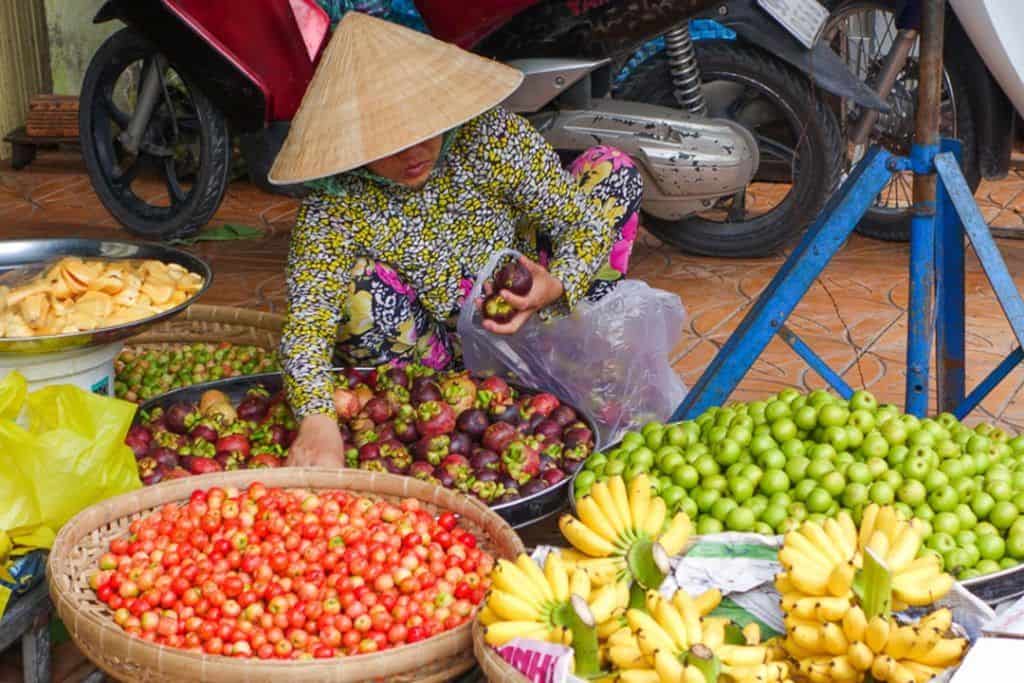
BE A RESPONSIBLE TRAVELER IN VIETNAM
We absolutely love Vietnam. And we love the idea that it will remain a beautiful and friendly place for travellers for years to come.
Here are a few tips specific to travel to Vietnam that will promote sustainable tourism in the country:
Use your own energy to get around. Walk or cycle through town as much as possible. Taking a cyclo-taxi is a close alternative if you don’t have the energy to propel yourself through the city. But this reduces the impact of taxis, busses and other forms of automotive transportation.
Mind your plastic . Plastic is everywhere in Vietnam. But using your own reusable bag for groceries and other shopping, carrying a reusable water bottle and having your own straw are just 3 of the many simple ways you can reduce the amount of plastic you use.
Shop local . Visiting the markets will be one of your top experiences when travelling to Vietnam. Support local vendors as often as possible, including in taking tours when available.
Be mindful of wildlife . Wildlife in the wild is great. But be mindful not to provoke, feed or otherwise molest wildlife. And never purchase any item made of or involving rare or endangered species.
Attempt to communicate in Vietnamese . You’re probably not going to be fluent as soon as you arrive in the country. But knowing a few phrases and doing your best to communicate with locals will show respect and earn trust and make your experience richer.
KEY VIETNAMESE TRAVEL PHRASES
You don’t have to be fluent in Vietnamese to have a great time when you travel to Vietnam. But it does help to know a few key phrases.
This will not only assist you in your travels but it will also show respect to the local Vietnamese people that you are doing your best to assimilate into their culture.
BOOKS TO READ ABOUT VIETNAM
Maybe you already know everything about Vietnam. Chances are you don’t!
But even if you are well-read, here are a few suggestions that might be worth your time while you’re on the plane to Vietnam.
The Quiet American (Graham Greene) – Originally published in 1956 and adapted for film twice, this story by Greene became an instant classic. Greene fictionalizes life in 1950s Vietnam as told by a British correspondent trying to understand the roots of the rising conflict set to occur.
At Home In The World (Thich Nhat Hanh) – World renown Vietnamese monk, Hanh reflects on lessons and stories in life from the Buddhist perspective.
Vietnam: Rising Dragon (Bill Hayton) – A piece of nonfiction that looks back on the Vietnam of old and attempts to projects its place in the future of Southeast Asia.
The Sympathizer (Viet Thanh Nguyen) – The Pulitzer Prize-winning book, allegedly influenced by The Quiet American , is told through the eyes of a double-agent during the Vietnam War who struggles to understand the minds and hearts of men engaged in war.
DISCLAIMER: Some of the links in this article are affiliate links, which means if you book accommodation, tours or buy a product, we will receive a small commission at no extra cost to you. These commissions help us keep creating more free travel content to help people plan their holidays and adventures. We only recommend the best accommodations, tours and products that ourselves or our fantastic editorial team have personally experienced, and regularly review these. Thanks for your support, kind friend!
Table of Contents
Read our vietnam posts, 20 amazing things to do in hoi an, vietnam (2024 guide), 14 incredible things to do in dalat, vietnam (2024 guide), the perfect 3 days in hanoi itinerary [2024 guide], 25 amazing things to do in hanoi, vietnam (2024 guide), the perfect 3 days in ho chi minh city itinerary [2024], the 8 best day trips from ho chi minh city (2024 guide), caves, zip lines and deep mud in phong nha, ganh da dia – vietnam’s own ‘giant’s causeway’, ba be national park – the lake, trekking and happy water, motorbiking the road from dalat to nha trang in vietnam, riding sea to sky: hue to hoi an by motorbike, getting a chinese visa in hanoi, vietnam.
- Customized Tour
20 Best Things to Do in Vietnam in 2024
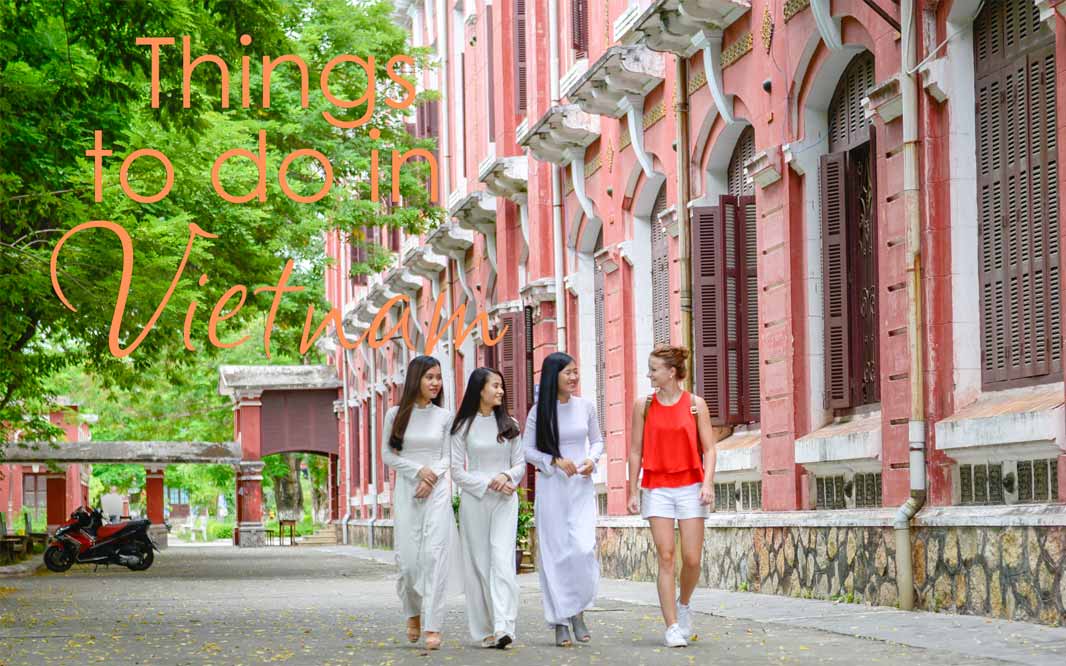
things to do in Vietnam
Vietnam if one of the most interested destination in South East Asia. The beautiful country with the friendliest people in the World and Vietnam has many things to offers travelers. Visitor to Vietnam have many things to do in each city they visit. From crystal jade colored water in Halong Bay to beautiful terrace rice paddy in Sapa, from Capital city in Hanoi to ancient Hoi An town or sunny beaches in Nha Trang. From Vibrant city of HCM City to green orchard with lots of tropical fruit in Mekong delta. Whether you are interested in history, culture, nature, or just soaking up the local way of life, Vietnam has something to offer. In this article, we will explore some of the top things to do in Vietnam, from exploring the city of Hanoi to visiting the beautiful Ha Long Bay and experiencing the Mekong Delta. Everywhere you travel, you feel welcomed and feel the trip to Vietnam is right decision. So come along as we discover all that Vietnam has to offer!
Vietnam is a country rich in culture, history, and natural beauty. From exploring bustling cities to relaxing on pristine beaches, there are countless things to do in Vietnam. Some of the top things to do in Vietnam include visiting the ancient town of Hoi An, cruising through Halong Bay, and exploring the vibrant streets of Ho Chi Minh City. Whether you’re interested in history, food, adventure, or relaxation, Vietnam has something for everyone. Don’t miss out on the incredible experiences this country has to offer.
We listed all the best things to do in Vietnam for travelers from North to South and hope it helpful for visitors (Updated 2024 ).
Table of Contents
Exploring Hanoi
Biking in ninh binh, trekking in sapa, motor bike in ha giang, visiting ha long bay, trekking in mai chau, cooking class in hanoi/hoian, eco tour in hoian, biking in hoian countryside, motorbike from hue to hoian, vespa tour in hanoi/saigon, immerse yourself in the golden rice in mu cang chai, diving in hoian/nhatrang/phu quoc, mud bathing in nha trang, zipline in hue, watching culture shows like: tonkins, wps, my village, ah oh…, visiting traditional craft villages: hanoi, hue, hoian, taste the food of vietnam (foodie tour in hanoi, hue, hoian, saigon), experiencing the mekong delta, visiting ho chi minh city.
Hanoi is the capital and largest city of Vietnam, and it is a must-see destination for anyone visiting the country. Here are some of the top things to do while exploring Hanoi:
- Visiting the Old Quarter : Hanoi Old Quarter is a bustling area of the city that is filled with narrow streets and historic buildings. It is a great place to wander and soak up the local culture, and you can find a variety of street food, shops, and markets here.
- Seeing the sights at Hoan Kiem Lake : This beautiful lake is located in the heart of the city, and it is a popular spot for locals and tourists alike. You can take a leisurely walk around the lake, visit the Ngoc Son Temple, or just relax on a bench and people watch.
- Taking a cooking class : Vietnam is known for its delicious cuisine, and what better way to experience it than by learning to cook it yourself? There are many cooking classes available in Hanoi, and you can learn how to make dishes like pho, spring rolls, and more.
- Visiting the Temple of Literature : This temple is a beautiful and historic site that is dedicated to Confucius and the study of literature. It is a peaceful place to visit, and you can learn about Vietnam’s history and culture while exploring the temple grounds.
Exploring Hanoi is one of the many things to do in Vietnam that travelers should not miss. As the capital city of Vietnam, Hanoi is rich in history, culture, and cuisine. Visitors can wander through the bustling streets of the Old Quarter, visit historic landmarks such as the Temple of Literature and Ho Chi Minh Mausoleum, and sample delicious street food.
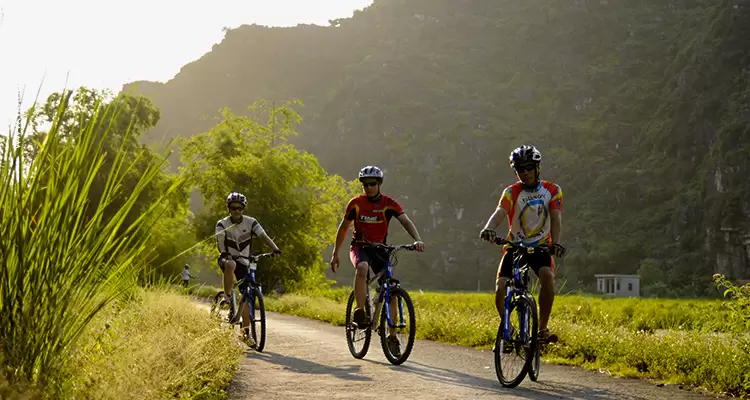
Exploring Ninh Binh by bike is one of the most captivating things to do in Ninh Binh . Biking through the stunning landscape of Ninh Binh and exploring the countryside is one of the best ways to experience the beauty of Ninh Binh. With its towering limestone cliffs, lush rice paddies, and winding rivers, Ninh Binh is a paradise for nature lovers and adventure seekers. As you pedal through this breathtaking region, you’ll discover hidden temples, traditional villages, and incredible views.
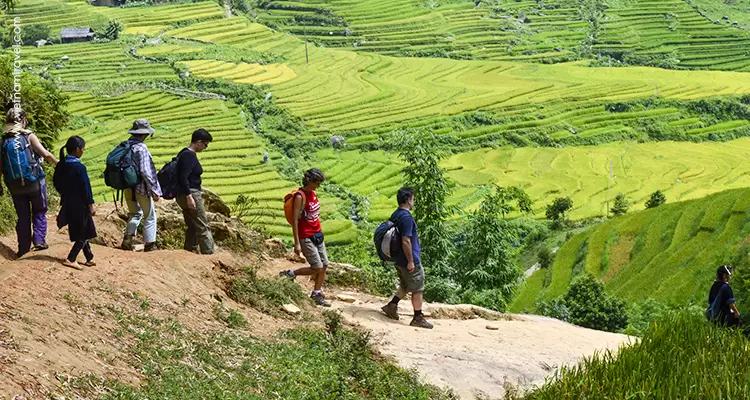
- Trek from Sapa to Ta Phin
- Trek from Sapa to Cat Cat Village + waterfalls
- Trek from Sapa to Ylinh Ho, Lao Chai Ta Van
- Trek from Sapa to Ta Van to Ancient rocks, Cloud bridge (Cau May)
- Trek from Topas Eco-lodge to Thanh Kim, Thanh Phu
Trekking in Sapa is one of the most popular activities for tourists visiting Vietnam. This mountainous region in the north of the country offers breathtaking views and a unique cultural experience. Sapa offers some of the best opportunities for trekking in the country. Its majestic mountains, terraced rice fields, and vibrant ethnic minority villages make it an ideal place for adventurers and nature lovers alike. The diverse range of trekking trails available caters to all levels of fitness and experience. From short hikes to multi-day treks, Sapa has it all. Immerse yourself in the breathtaking beauty of the region as you traverse the scenic trails. For more information on the best places for trekking in Vietnam , check out this comprehensive guide. Additionally, if you’re planning a trip to Sapa, make sure to explore the top things to do in Sapa for a truly unforgettable experience.
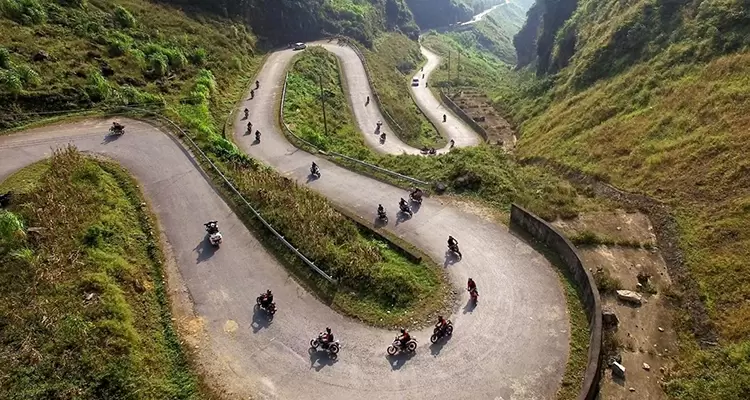
Special experience to discover the mountainous province of Vietnam, the trip is good for young and adventure visitors. Contact Vietnam Travel for more details and the best offers.
The Ha Giang loop is a road route in the extreme north of Vietnam. It’s called the Ha Giang Loop because the route flows in a loop through the Ha Giang province. The capital city of the province is also called Ha Giang and this is where most people start and end their ride. Riding up, over and through this epic mountainous region on a motorcycle is the absolute best way to really, viscerally experience it. The Ha Giang Loop Tour offers visitors the ultimate adventure experience as they weave their way through this beautiful region. Along the route, you’ll traverse breathtaking mountain passes, visit remote villages and enjoy incredible views of rice terraces, waterfalls, and rivers. It’s incredibly beautiful with stunning mountain landscapes and roads that climb through the clouds before plunging into valleys. You’ll experience Vietnamese culture like nowhere else here as it’s common to bunk in homestays and eat dinner with families.
Ha Long Bay is a stunning natural wonder that is located in the northeast region of Vietnam. This UNESCO World Heritage site is known for its breathtaking beauty, with its emerald green waters and thousands of towering limestone karsts. If you are visiting Vietnam, you don’t want to miss the opportunity to visit Ha Long Bay. Here are some top things to do while you are there:
- Going on a boat tour : A boat tour is the best way to experience Ha Long Bay, and there are many options available, ranging from luxury cruises to more basic tours. You can choose a tour that fits your budget and interests, and you will get to see the best parts of the bay while learning about its history and culture.
- Exploring the caves and grottoes : Ha Long Bay is home to many breathtaking caves and grottoes, and you can visit some of the most famous ones on a tour. These include the Surprise Cave, the Sung Sot Cave, and the Thien Cung Cave. Each cave has its own unique features, and you will be amazed by the stalactites, stalagmites, and other natural formations that you will see.
- Trying seafood caught fresh from the bay : Ha Long Bay is known for its seafood, and you can try dishes like steamed oysters, grilled squid, and more while you are there. The seafood is caught fresh from the bay, so you know that it is going to be delicious. Be sure to try some of the local specialties while you are there!
- Kayak in Halong Bay :
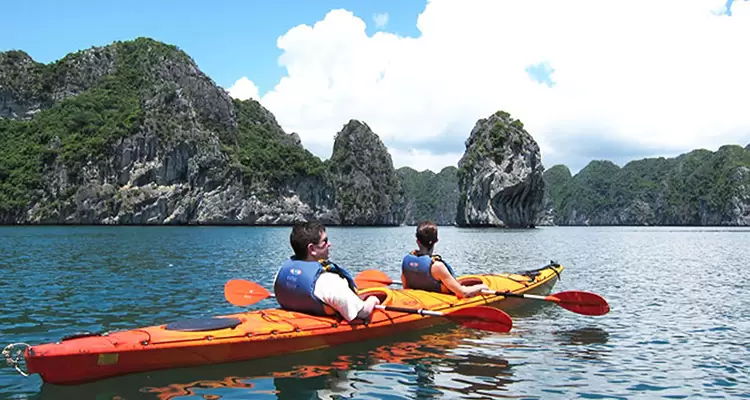
Halong bay is one of the top attraction of Vietnam , kayaking through Halong Bay is a must-do bucket list activity and by far the best way to explore all that the bay has to offer. Sliding through the water in a nifty kayak gives travelers more independence, and allows them to reach the shallow water that the cruise cannot get able to reach. Kayaking is included when you book a cruise on Halong bay so tick it in the list that you will join on 2 day or 3 day trip of your Halong cruise.
Ha Long Bay is an enchanting destination that offers a multitude of captivating experiences. Dotted with jagged limestone pinnacles, Halong Bay is one of Vietnam’s biggest attractions. One of the most popular ways to explore this natural scenery is by embarking on a junk boat cruise or joining a sea kayaking expedition. With a plethora of activities to choose from, Ha Long Bay never fails to enthrall its visitors. Constantly topping lists of scenic destinations around the world, Halong Bay (also known as Ha Long Bay) is the perfect destination to kick back, relax, and admire the views. If you’re looking for a luxurious experience in Ha Long Bay, consider taking one of the best Ha Long luxury cruises . These cruises offer top-notch amenities and services to ensure that your trip is unforgettable.
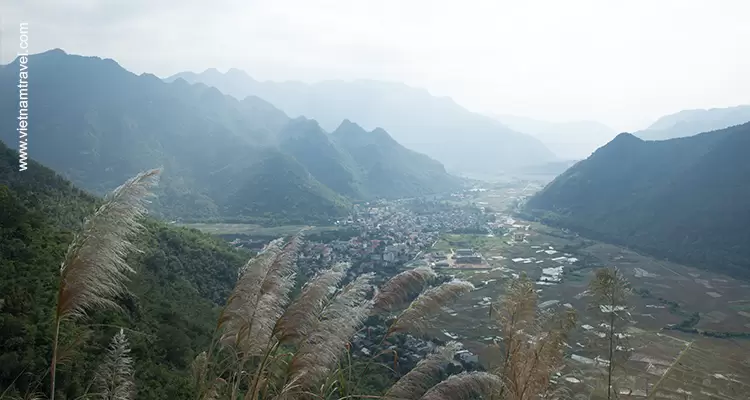
Even though BanLac village and Pom Coong village getting too touristy but Vietnam Travel always preserve some of the best treking route in Mai Chau for their own clients. Our driver and guide really know the area, the great timing to make your trip is unique and enjoyable. We have many friends there and we even know how to cook the best authentic local food for our clients here too.
Trekking in Mai Chau is not very popular, but you can take long walks on the narrow paths between the villages. However, many travelers who visit this region choose to do this by bicycle. In the nearby Pu Luong Nature Reserve you can make treks through the mountains and terraced rice fields. VietnamTravel.Com can arrange a guide that can show you around or you can choose to go trekking yourself between the villages in the valley. While walking you can enjoy great views over the rice fields and explore the villages of the Thai ethnic minorities that live in stilt houses. Trekking Mai Chau Vietnam offers a balance of culture and adventure, set among some of northern Vietnam’s most stunning scenery.
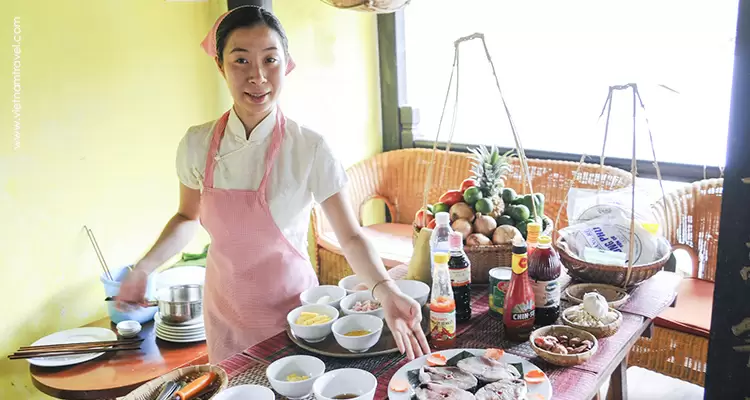
The World know more about Vietnam by the Wars and Vietnam Food. With the amazing supply of local farm products and source of fish and prawn from 3,260km of coastal lines and system of rivers. Vietnam has amazing material of their own cooking. Vietnamese has great methods to process their food in the nice and freshly food. During the visit to Vietnam, we highly recommend you to take a cooking class and get to know more about local culinary. Hoi An cooking tour is highly recommended.
One of the most unforgettable experiences in Vietnam is taking a cooking class in Hanoi or Hoi An. These classes offer a unique opportunity to learn about the local culture and cuisine. You’ll have the chance to visit a local produce market, learn about the ingredients used in Vietnamese cooking, and then prepare and enjoy a delicious meal. If you’re interested in learning more about Vietnamese cuisine, be sure to check out Vietnam Travel’s guide to Vietnamese Cuisine
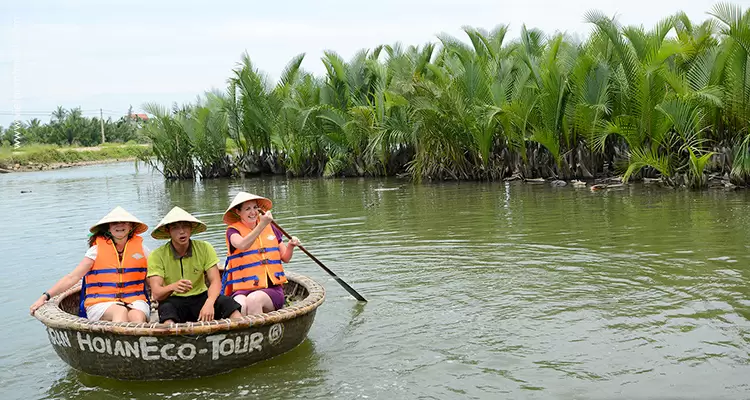
There are plenty things visitors can do in Hoian. The narrow lanes are ideal for guided walking tours. You could visit the old merchant’s houses with influences from Chinese, Japanese and Vietnamese architecture ; the 400-year-old Japanese Covered Bridge, the Assembly Hall of the Chaozhou Chinese Congregation with outstanding wood carvings…. But when visit Hoian, we highly recommend you to take a day of Eco tour outside the city and get to know more about countryside of Hoian and experience the slow pace local life with many activities on the farm, and river of farmer & fishermen in Hoian.
An eco-tour in Hoi An is a great way to experience the rural life and natural beauty of Vietnam. You can explore the Bay Mau Coconut Forest, Tra Que Vegetable Village, Kim Bong Carpentry Village, and Thanh Ha Pottery Village. These tours offer unique experiences such as basket boat rides, fishing, and cooking classes. It’s a great way to immerse yourself in the local culture and learn about traditional Vietnamese practices. If you’re planning a trip to Hoi An, be sure to check out our article on the 6 essential things to do in the city.
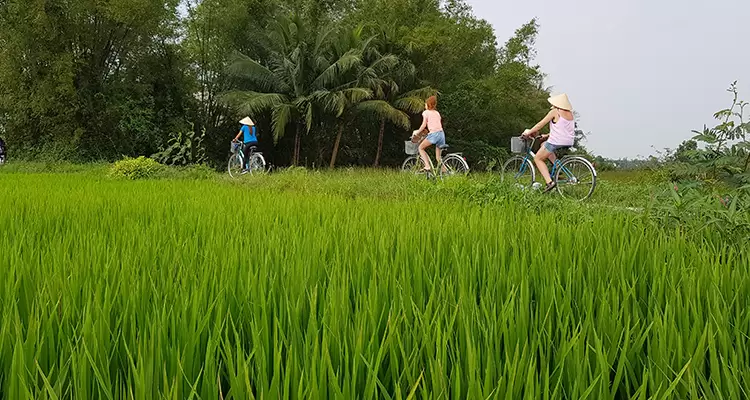
When you want to discover the countryside of Hoian, we suggest you to take the bike to villages. It is safe to travel here by bike and you could enjoy the countryside better in the quiet and leisuring way out in the sun.
Another great thing to do in Vietnam is to go biking in Hoi An countryside. Hoi An is a charming ancient town that is famous for its lanterns, tailor shops, and historical buildings. But beyond the town, there is a beautiful rural area that you can explore on two wheels. You can cycle through rice paddies, vegetable gardens, fishing villages, and coconut forests. You can also visit local artisans, farmers, and fishermen and learn about their crafts and lifestyles. Biking in Hoi An countryside is a fun and relaxing way to experience the authentic culture and nature of Vietnam.
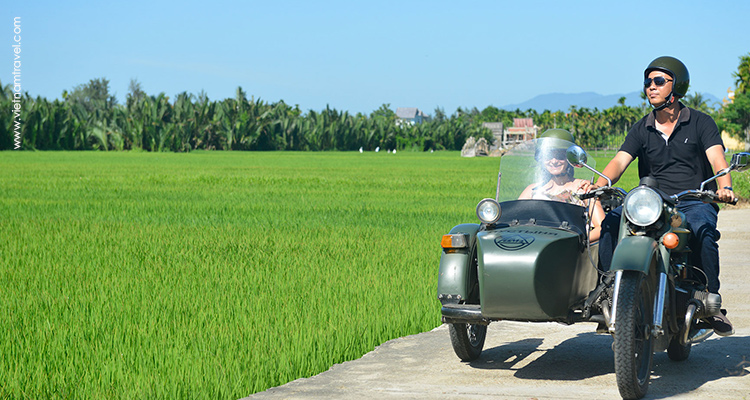
Hue to Hoian is about 130 km or about over 4 hours by motorbike. The first part you will drive along the national highway passing the countryside with lots of rice field up to Phu Bai then passing the area near the sea with lot of fish farm in Tam Giang. This area is flat and motor biking is leisure. From Lang Co beach you start to drive up the mountain passing the Hai Van pass with spectacular view of the mountains and the ocean. The third part of the way passing Danang to Hoian , you will drive on the flat road along the sea. Whole the trip is great experience and this motorbike trip is good for the young and well-travelled ones.
One of the most thrilling and scenic things to do in Vietnam is to motorbike from Hue to Hoi An. This route takes you along the famous Hai Van Pass, a winding road that offers stunning views of the coast and the mountains. You can also stop at various attractions along the way, such as the Marble Mountains, Lang Co Beach, Elephant Springs, and My Son Sanctuary. Motorbiking from Hue to Hoi An is a great way to experience the diverse landscapes and cultures of central Vietnam.
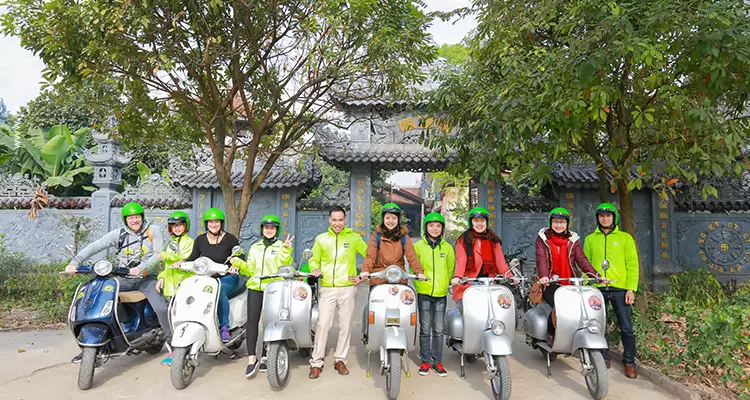
Vespa or Moped trip in Hanoi & HCM City operated by the local team of Vietnam Travel, Discover the city to all the hidden part as a local and gain the interesting experience that regular traveler cannot get to when they travel by car. Contact Vietnam Travel for more details and the best offers.
A Vespa tour is a great way to see the sights of Hanoi and Saigon. You can zip around the bustling streets, explore the historical landmarks, and get a feel for the local culture. There are many different tours to choose from, so you can find one that fits your interests and budget. If you’re looking for a unique and memorable way to experience Vietnam, then a Vespa tour is a great option.
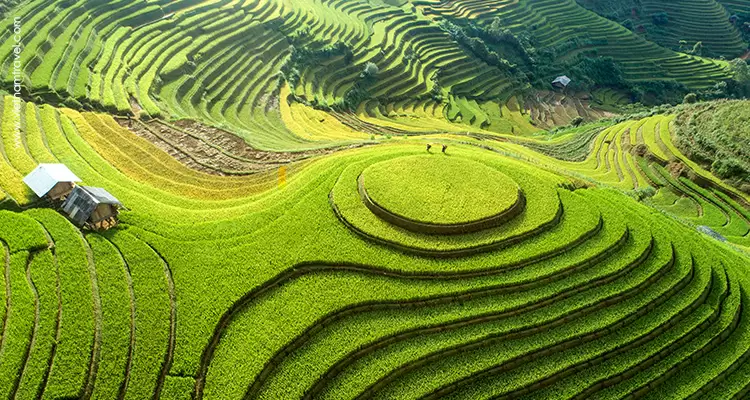
Mu Cang Chai is located 180 kilometers away from Yen Bai city. The only transportation to get there is by road so you could choose either motorbike or private car. If you choose private car, it take more than 8 hour drive about 280km. Public bus from Hanoi to Yen Bai Then another bus Yen Bai to Mu Cang Chai. The route condition is very bad so you have to take about 1 day to arrive by bus.
The best part is the stretch of hazardous roads spreading out for tens kilometers of infinite and primeval landscapes, grandiose ranges of mountains and the peaceful and poetic picture of ethnics’ houses covered by terrace fields. Visit Mu Cang Chai in June when they planting rice or best in Sept in harvesting time is highly recommended.
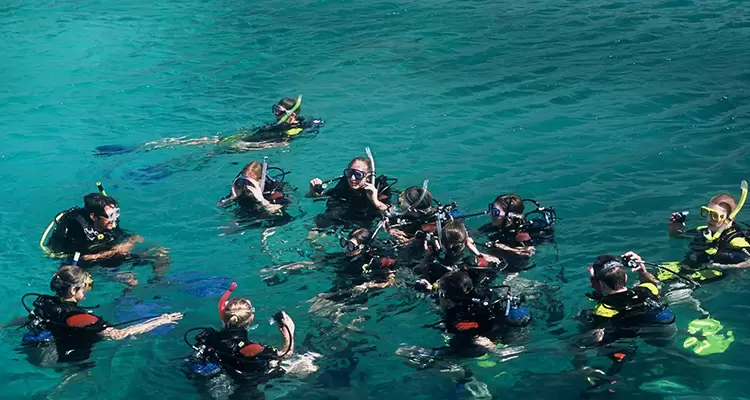
Read more : Diving in Phu Quoc Diving in Hoi an
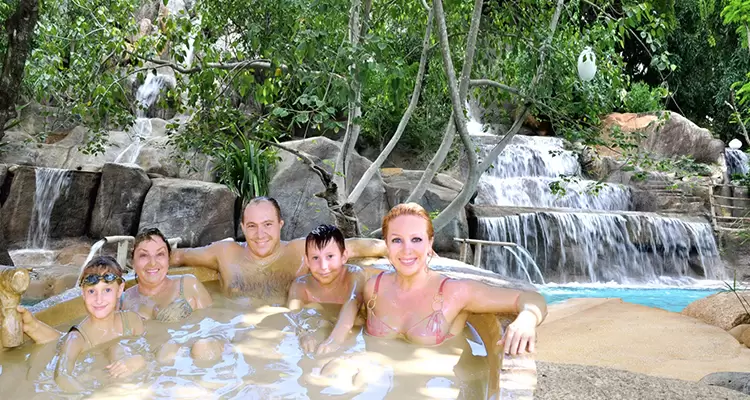
Read more: Things to do in Nha Trang
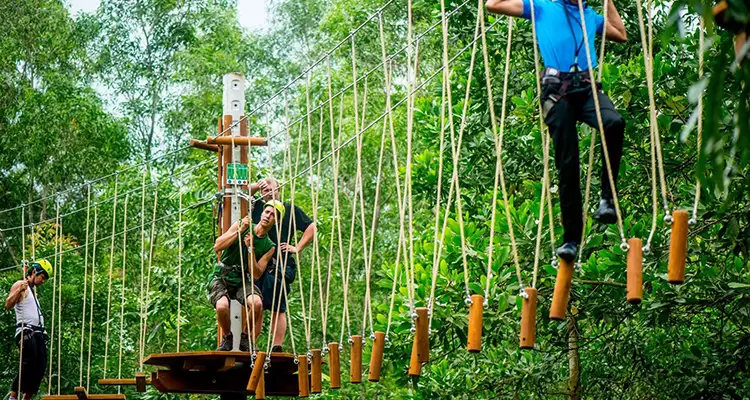
Read more : Things to do in Hue, Vietnam
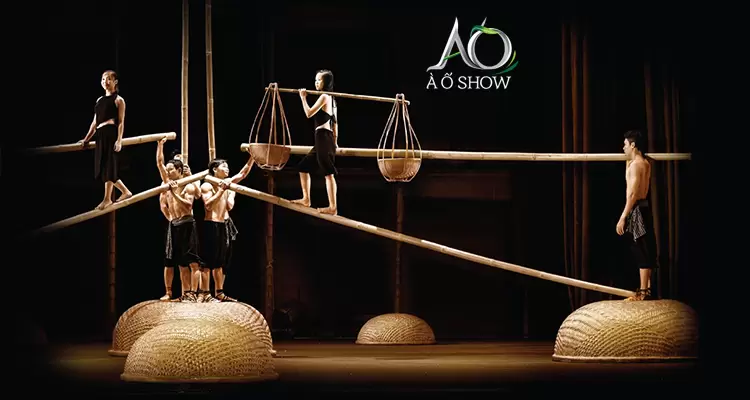
Read more : Quintessence of Tonkin Show My Village Show A O Show
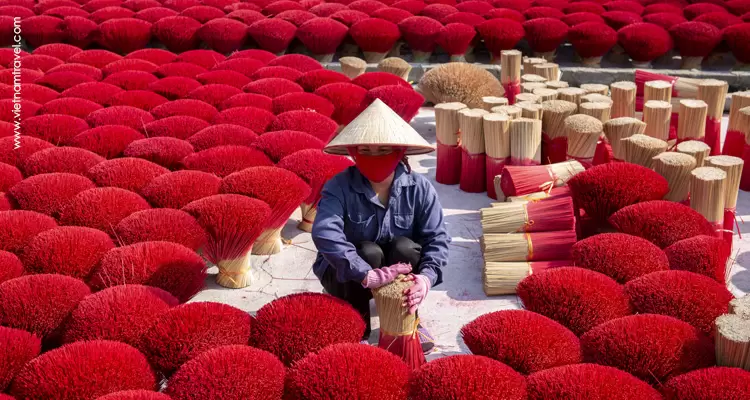
Vietnam Travel offer a special full day trip to vicinity of Hanoi and discover the interesting villages that regular visitors dont reach too. The itinerary is changes to the season and date of travel to make sure you will gain the best experience of countryside and villages of Vietnam . Let us know your travel date and we will arrange you the special plan for your best Vietnam experience.
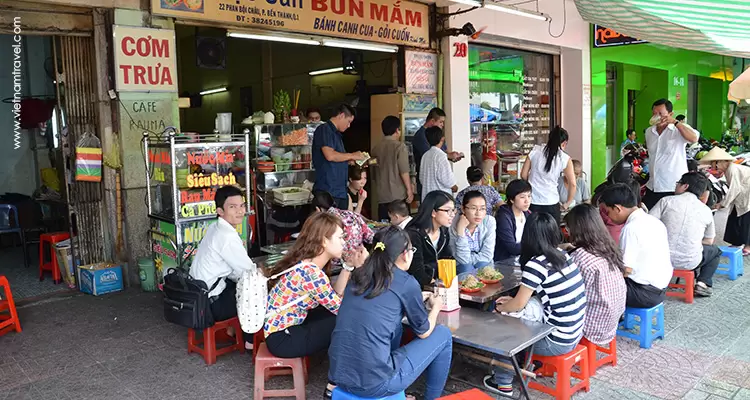
One of the best things about traveling to Vietnam is the opportunity to try the delicious and varied cuisine that the country has to offer. From the spicy flavors of the north to the sweet and savory dishes of the south, Vietnam’s food is a true reflection of its culture and history.
If you are a foodie looking to experience the best of Vietnam’s culinary scene, there are many options available to you. In Hanoi, you can go on a food tour and sample some of the city’s famous dishes, such as bun cha and pho. You can also visit local markets and try street food, or take a cooking class and learn how to make traditional Vietnamese dishes.
Other cities in Vietnam that are known for their food include Hue, Hoian, and Saigon (also known as Ho Chi Minh City). Each of these cities has its own unique culinary traditions, and you can find a wide variety of dishes to try while you are there. Whether you are looking for street food, fine dining, or something in between, Vietnam has something to offer every food lover.
Hue is good place to taste many royal dishes in the restaurant and lot of good food on the sidewalk. Food on the street is reasonable and good. Seating on the low plastic chairs and enjoy the Bun Bo Hue or Nem Lui would be fantastic.
So don’t miss the opportunity to taste the delicious and diverse food of Vietnam during your visit. You’ll be sure to find something that you love, and you’ll be able to take home some new culinary skills and memories.
The Mekong Delta is a beautiful and vibrant region of Vietnam that is located in the southern part of the country. This area is known for its rice paddies, waterways, and friendly locals, and it is a great place to experience the authentic culture of Vietnam. Here are some top things to do while you are in the Mekong Delta:
- Taking a boat ride through the waterways : The Mekong Delta is crisscrossed by a network of waterways, and the best way to experience the region is by boat. You can take a boat ride through the waterways and see the local life up close. You’ll pass by floating markets, villages, and rice paddies, and you’ll get to see how the people of the Mekong Delta live and work.
- Visiting local markets : The Mekong Delta is home to many bustling markets where you can find a wide variety of goods, from fresh produce to handmade crafts. You can wander through the markets and see what the locals are selling, and you might even find some souvenirs to take home with you.
- Staying with a local family in a homestay : One of the best ways to experience the Mekong Delta is by staying with a local family in a homestay. You’ll get to live with the family, eat their food, and learn about their way of life. This is a great way to get a true sense of the local culture and make lasting memories.
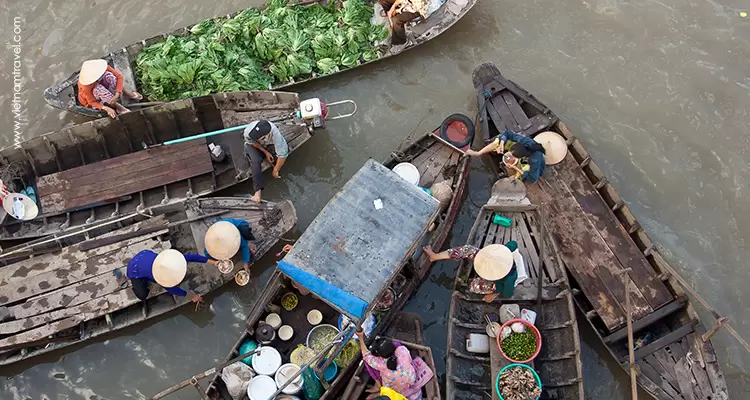
Read more : 7 Amazing Floating Markets in Mekong Delta, Vietnam
Ho Chi Minh City, also known as Saigon, is the largest city in Vietnam and a vibrant, bustling metropolis. This city is a melting pot of cultures, and it is a great place to experience the modern side of Vietnam. Here are some top things to do while you are visiting Ho Chi Minh City:
- Seeing the sights at the Vietnam War Remnants Museum : The War Remnants Museum is a powerful and thought-provoking museum that chronicles the history of the Vietnam War. It is a must-see destination for anyone interested in the country’s history, and it is a sobering reminder of the atrocities of war.
- Exploring the Cu Chi Tunnels : The Cu Chi Tunnels are a network of underground tunnels that were used by the Viet Cong during the Vietnam War. You can visit the tunnels and learn about the history of the war while crawling through the narrow passageways.
- Visiting the Notre Dame Cathedral and Central Post Office : These two iconic landmarks are located in the heart of Ho Chi Minh City and are worth a visit. The Notre Dame Cathedral is a beautiful example of French colonial architecture, and the Central Post Office is a historic building that is now a popular tourist attraction.
- Going on a food tour : Ho Chi Minh City is a food lover’s paradise, and there are many delicious dishes to try while you are there. You can go on a food tour and sample some of the local specialties, or you can explore the Ho Chi Minh city’s street food scene on your own. There is something for everyone in Ho Chi Minh City, so be sure to come hungry!
Vietnam is a country with a rich culture and a diverse range of activities and experiences to offer. From exploring the city of Hanoi to visiting the beautiful Ha Long Bay and experiencing the Mekong Delta, there is something for everyone in Vietnam.
If you are planning a trip to Vietnam , be sure to include these top things to do on your itinerary. And don’t forget to take the time to wander and explore on your own, as you never know what you might discover. Vietnam is a beautiful and welcoming country, and we hope that you have a wonderful time there.
![vietnam country tourism 20 Best Things to Do in Vietnam in [THE_CURRENT_YEAR]](https://vietnamtravel.com/images/2019/03/9.Vespa-tour-in-HanoiSaigon.jpg)
Related Posts
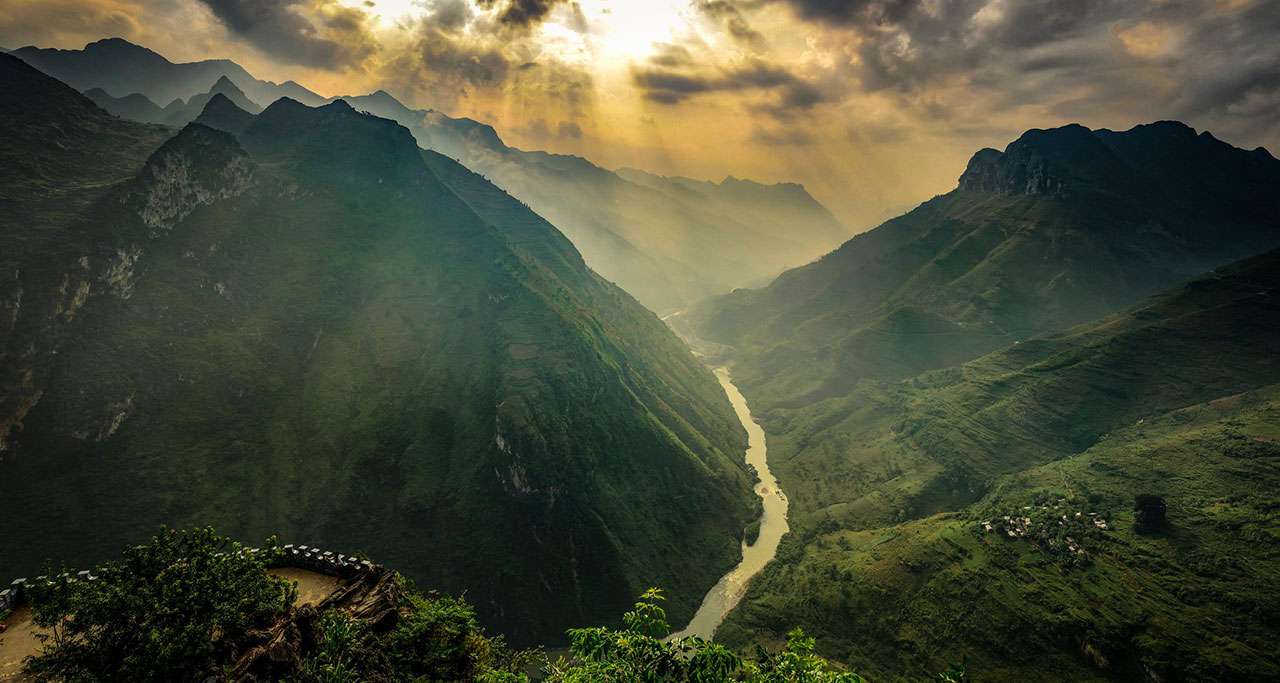
The Best Things to Do in Ha Giang (Vietnam)
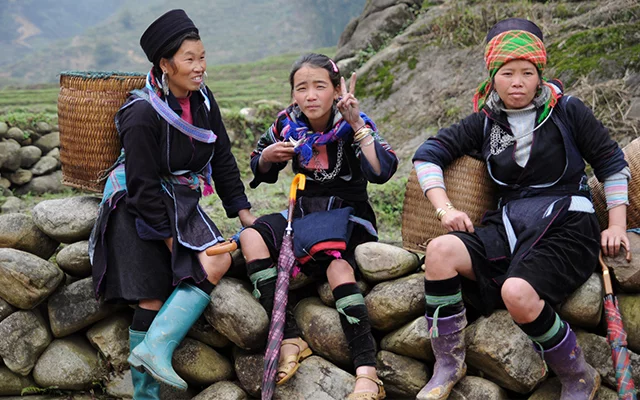
Things to do in Sapa
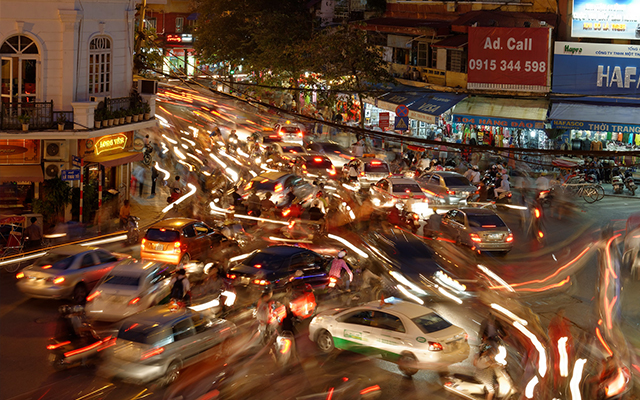
25 Best Things to Do in Hanoi – Top Sightseeing & Activities
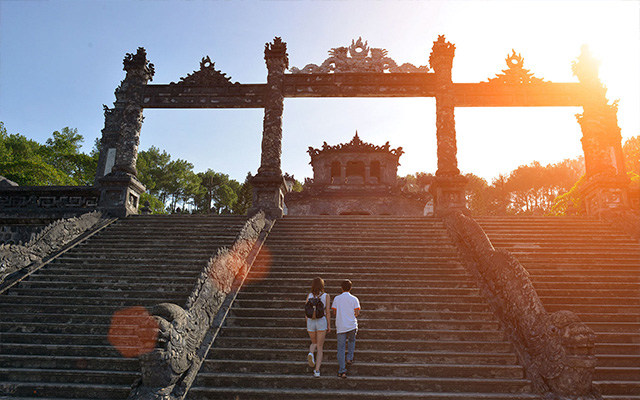
10 Things To Do In Hue, Vietnam
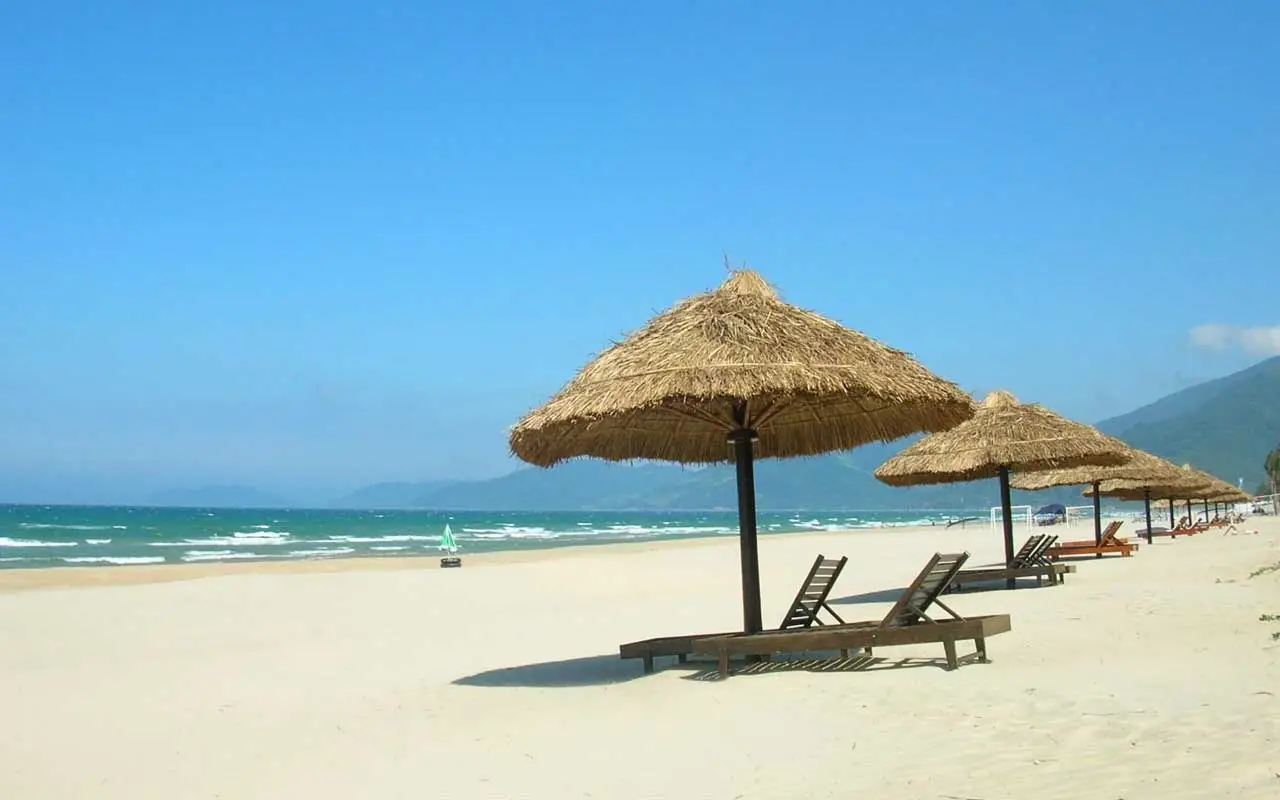
Things to do in Danang, Vietnam
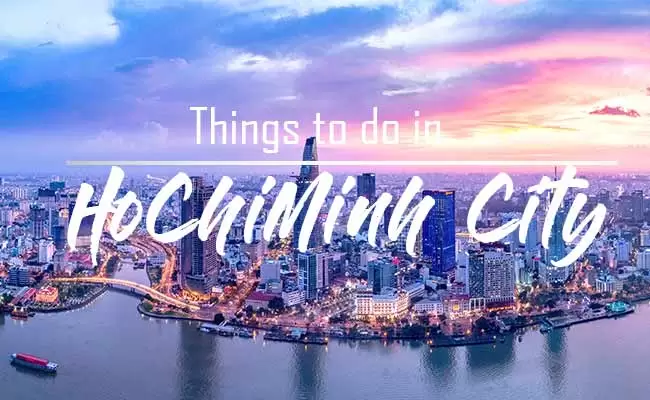
Things to do in HCM city
Leave a comment cancel comment, request a free quote, thank you we have received your travel request. you will receive an email shortly. please check your email and verify the information. your request will be processed after your confirmation..
You have chosen a tour duration longer than 20 days. Please specify the exact number of days you want to travel in the message box below, so that we can have enough information and make a program for you. Thank you for your cooperation.
You have selected a number of travellers greater than 20. Please let us know the exact number of people in your group in the message box below so that we can quote you accurately. Thank you for your cooperation.
You have selected a number of travellers and duration greater than 20. Please let us know the exact number of people in your group and the exact number of days in the message box below so that we can quote you accurately. Thank you for your cooperation.
- Vietnam Travel Guides
- Travel Planning
- Festivals & Events
- Food & Drinks
- Tourist Maps
- Travel Blog
- Travel News
Our Recommendations

Guideline to get Vietnam E-visa

Vietnam Weather: General information & Best Time to Visit

50 Things You should Know before Traveling to Vietnam

Best Vietnam Private Tours you should know before traveling

Info for travelers on Covid-19 in Vietnam: Entry requirements & Restrictions
You May Also Like
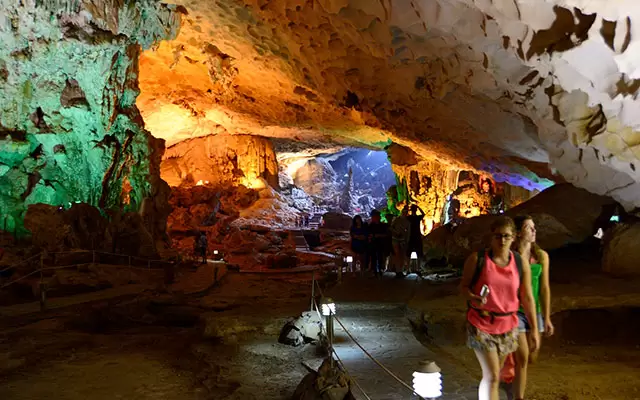
Thien Cung Cave – Halong Bay
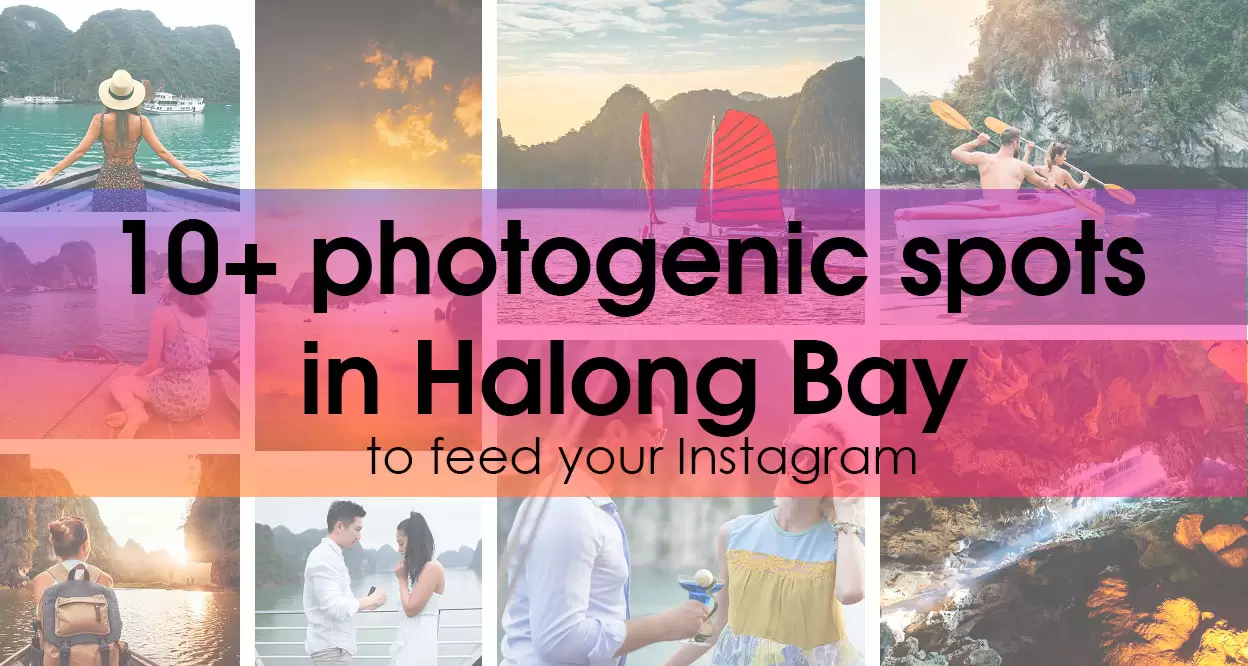
10+ photogenic spots in Halong Bay to feed your Instagram
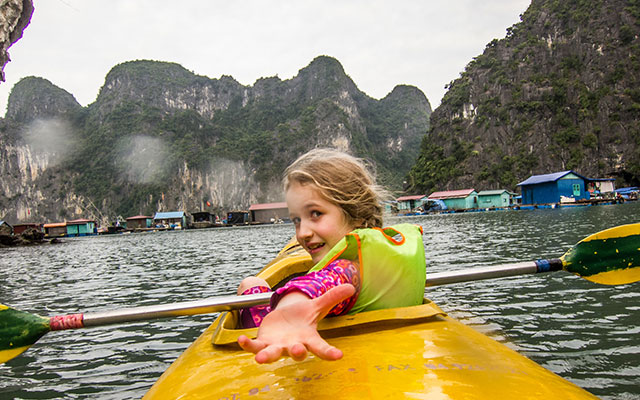
Vietnam Weather and Places to Visit in May
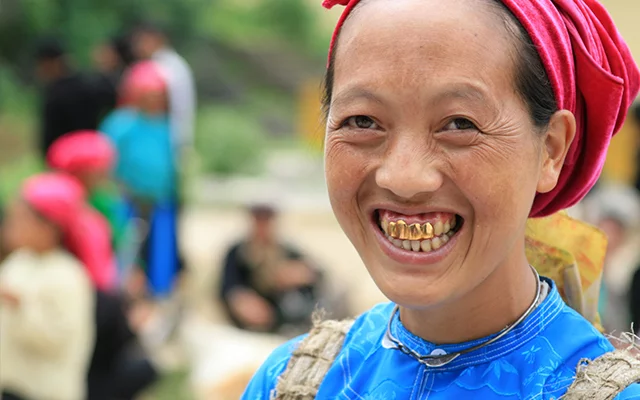
Dong Van Karst Plateau Geopark
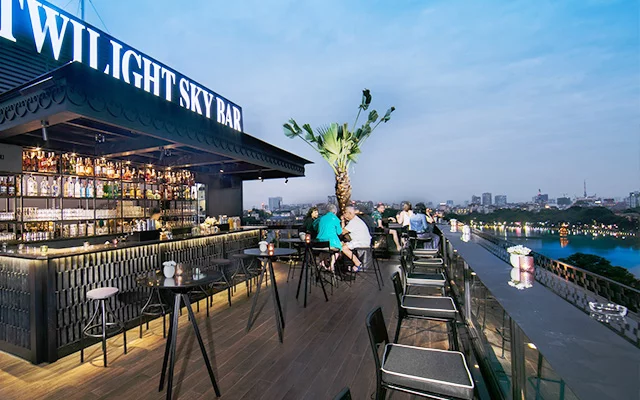
Top Best Hotels In Hanoi Old Quarter
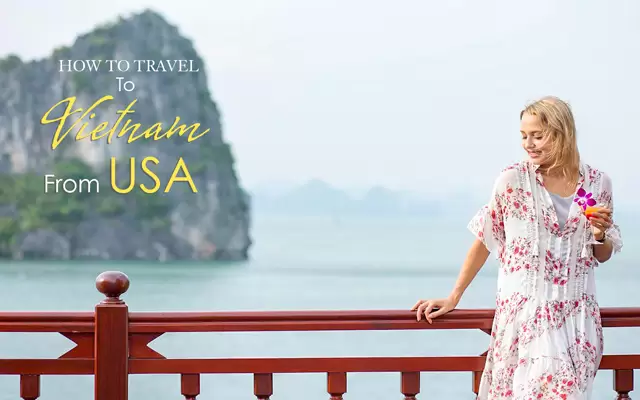
How to travel to Vietnam from USA
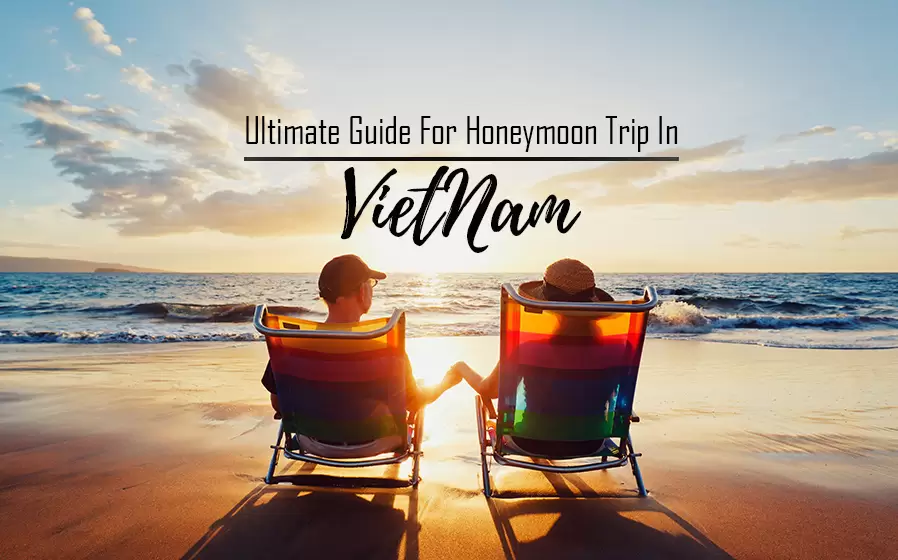
The Most Ideal Places For Honeymoon Trip In Vienam
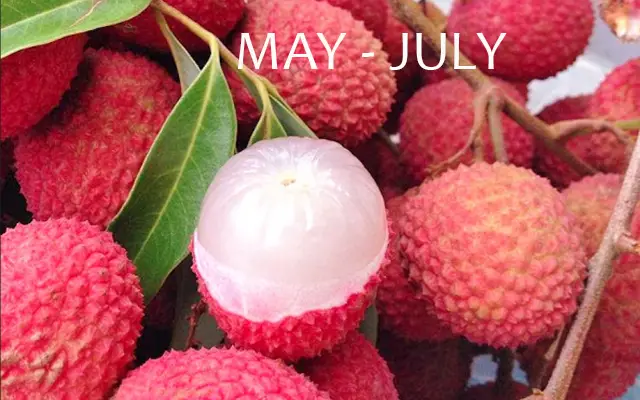
Vietnamese Lychee Season: Everything You Need to Know
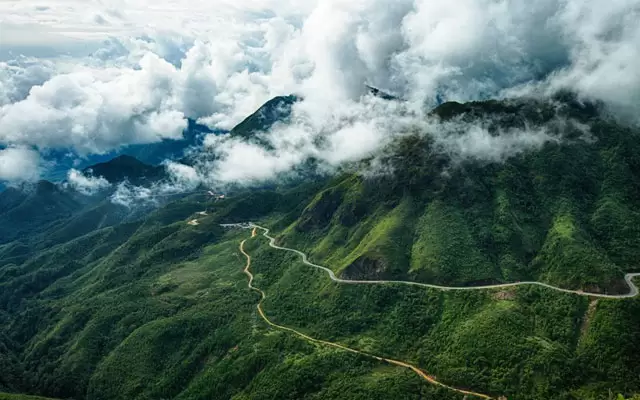
10 Scenic Mountain Passes in Vietnam
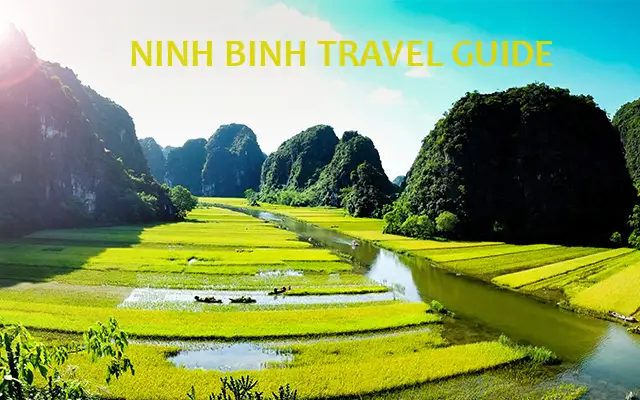
Ninh Binh Travel Guide

Vietnam Tourism
Tourism in Vietnam is mentioned as an indispensable key component of the modern Vietnamese economy. Vietnam has a very rich and diverse tourism potential due to the natural landscape, climate, culture, food, festivals, and especially Vietnamese people. For people who love traveling, Vietnam has become a new tourist destination in Southeast Asia – “Asia’s Leading Destination”
1. Vietnam Tourism Overview
Vietnam is leaning on the largest continent in the world – the Asia continent. With over 3000 kilometers of coastline, pristine beaches, dynamic growing cities, mountainous highlands, and diverse cultural and historic sites, Vietnam’s tourism industry continues to rank amongst the fastest-growing tourist destinations in the world.
The coastline of Vietnam borders the East Sea, the Gulf of Thailand, the Gulf of Tonkin. It creates advantages for Vietnam to develop marine tourism. Moreover, the history of geological tectonics over the ages has carved the face of our territory with many unique and non-monotonic lines.
2. Where to visit in Vietnam
In Vietnam, travelers are attracted by a wealth of cultural and natural resources, as well as eight UNESCO-listed World Heritage Sites: Central Sector of the Imperial Citadel of Thăng Long (Hà Nội), Citadel of the Hồ Dynasty (Thanh Hoá), Complex of Hue Monuments (Huế), Hạ Long Bay (Quảng Ninh), Hội An Ancient Town (Quảng Nam), Mỹ Sơn Sanctuary (Quảng Nam), Phong Nha-Kẻ Bàng National Park (Quảng Ninh), Tràng An Landscape Complex (Ninh Bình).
For culture lovers, every small moment of discovery is a step closer to understanding a new and different way of life. Scattered throughout the country, Vietnam’s UNESCO Heritage Sites are jackpots for these moments of discovery. Each one promises exceptional beauty and exceptional insight into Vietnamese culture.
2.1. Ha Giang
Vietnam also has many other tourist destinations to explore. First of all, it is impossible not to mention Ha Giang – the first place of the S-map. Ha Giang is rugged, remote, and spectacular.
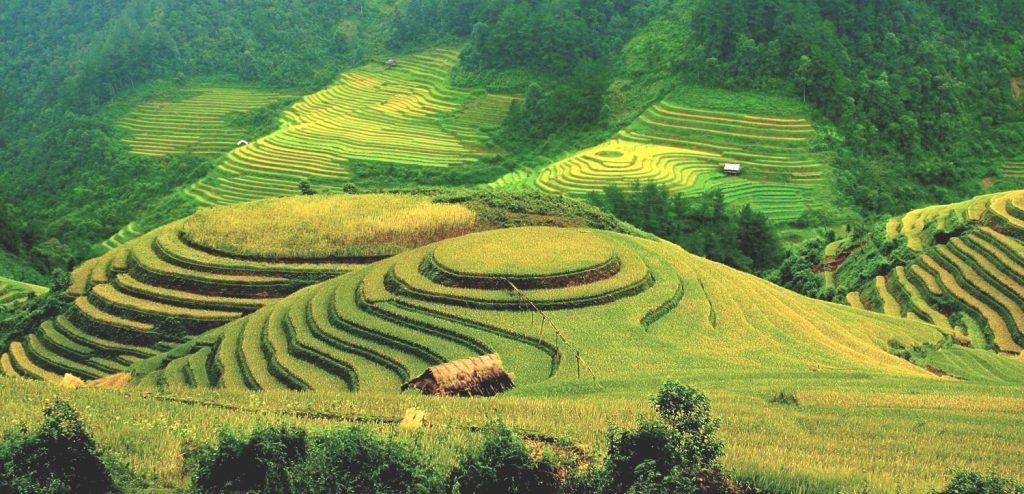
Ha Giang – Vietnam
And it would be great for the tourists who love motorbike rides because Ha Giang overlooks terraced rice paddies and deep valleys that have been carved into the limestone mountains over thousands of years.
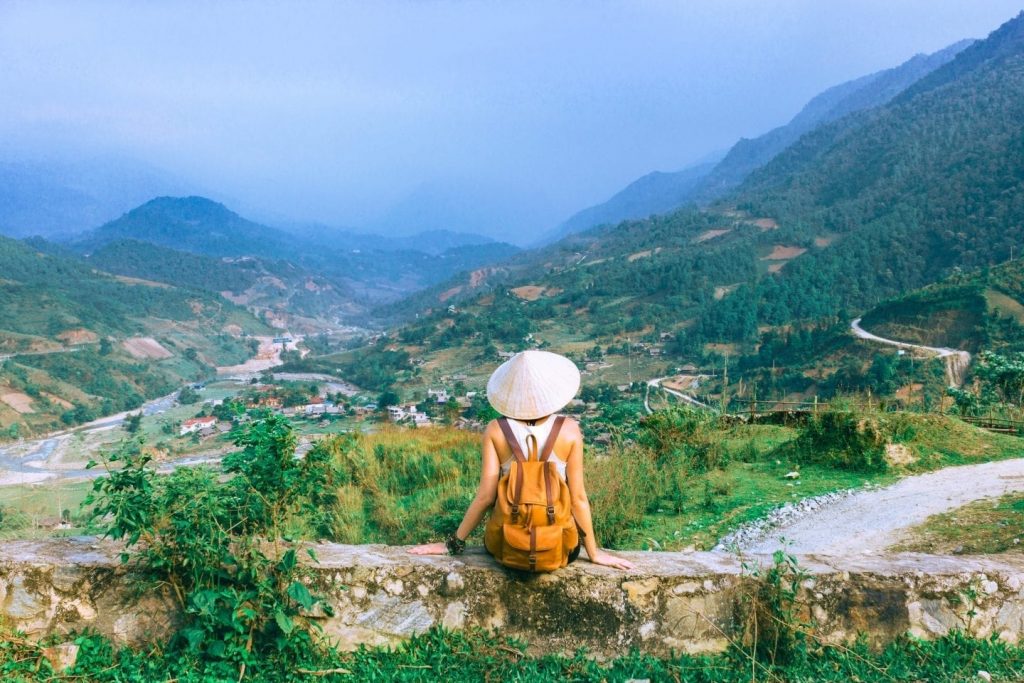
Sapa – Vietnam
As the location of the roof of Indochina – Fansipan, Sapa is a destination that Vietnam tourists can not miss. Sapa retains the wild and strange features of the Northwest mountainous and forested areas. The climate is cool all year round. Beautiful, peaceful scene. In winter, there is also very beautiful and rare snowfall.
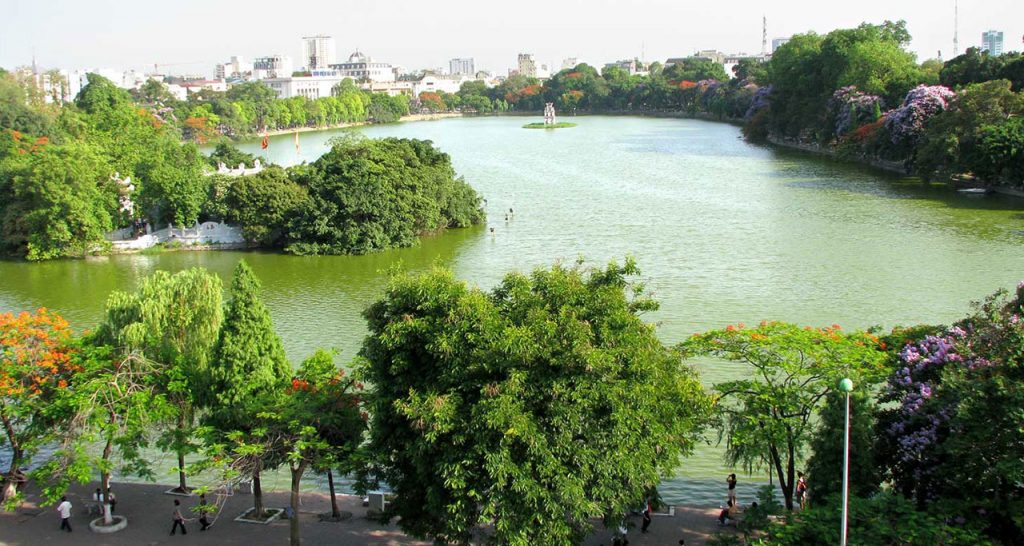
Hanoi – Vietnam
Hanoi’s Old Quarter – one of the most beautiful places of Vietnam’s capital city. Ha Noi is full of history and culture, especially in the Old Quarter near Hoan Kiem lake. This is the epicenter of tourism in the city, with market streets, nightlife options and some of the best Vietnamese food in the country.
2.4. Danang
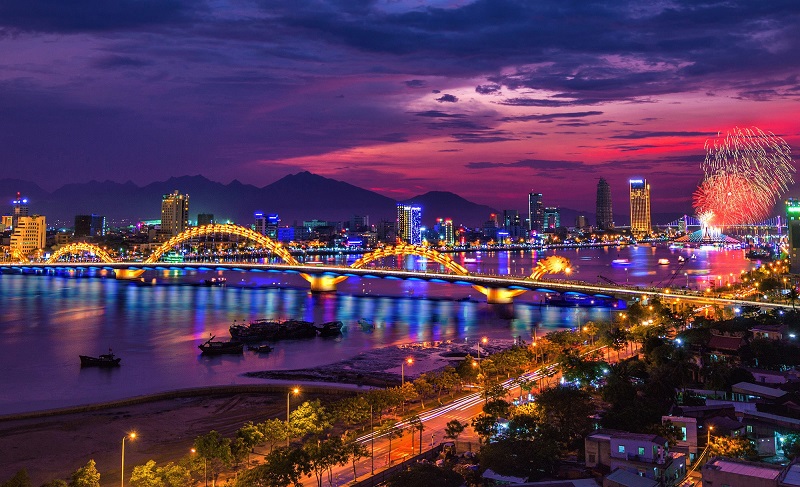
Dubbed as a coastal resort city, Danang is definitely worth a visit in central Vietnam. Da Nang is among a few destinations that can offer both beach and mountain. Some of the must-see attractions are My Khe beach, Non Nuoc beach, Son Tra Peninsula, Marble Mountains, Ba Na Hills, Golden Bridge, The world cultural heritage My Son, Linh Ung pagoda.
2.5. Nha Trang
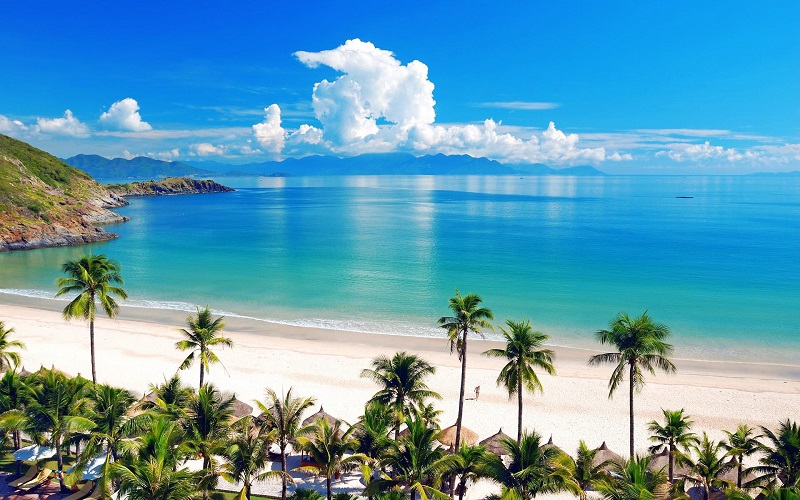
Nha Trang is significantly busier than some of the other beach towns in the south, that also means there is so much more to do. The nightlife is a lot of fun, and there are so many extreme activities for the adrenaline junkies among you – jet skiing, surfing or even a flyboard.
2.6. Da Lat
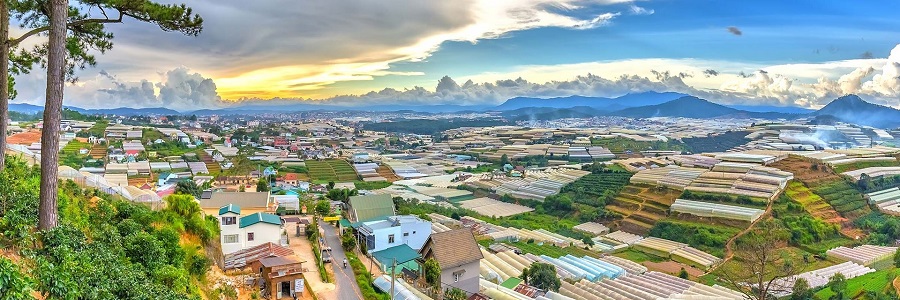
Possessing a romantic and charming natural landscape, Da Lat is known as the city of mist; City of pine forests, city of hills, streams, lakes and waterfalls.
Da Lat is also known as the paradise of dreams, paradise of love, paradise of festivals and paradise of flowers. To date, there have been many romantic and romantic films made in this city.
2.7. Ho Chi Minh City

Located in southern Vietnam, the economic center and bustling Ho Chi Minh City is the largest city in regards to the population. Fondly referred to by its evocative older name of Saigon, Ho Chi Minh City retains a preserved air of its French colonial heritage in the old areas of the city while still reflecting the dynamic modern vibes of a cutting edge Vietnam.
Key attractions such as the Notre-Dame Cathedral, Saigon Opera House, Central Post Office, and Ben Thanh Market reflect this colonial heritage, while the War Remnants Museum, Reunification Palace, and preserved Cu Chi Tunnels north of the city lay testament to the fighting spirit and recent history of the ravages of war.
2.8. Phu Quoc
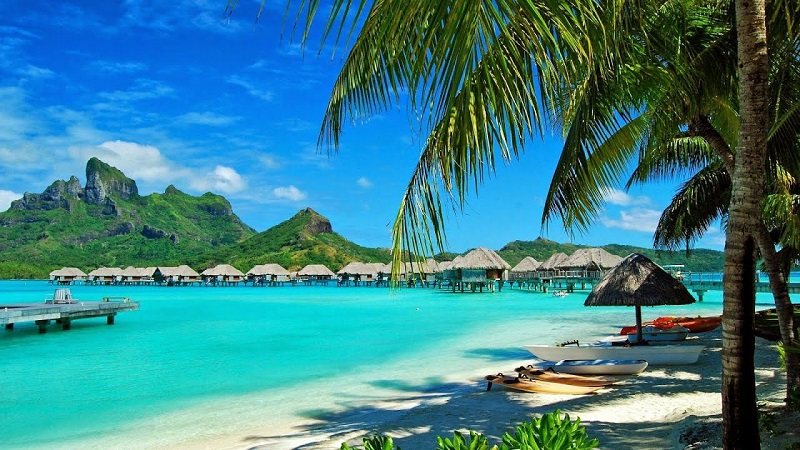
And at the bottom of the S-map, here is a slice of heaven for beach lovers – Phu Quoc. With sandy palm-fringed beaches and turquoise water, Phu Quoc is one of the best beach destinations in Vietnam.
The northern part of Phu Quoc is a part of a UNESCO-listed biosphere reserve while the southern coastline is filled with luxury resorts, funky bars, and quaint cafes. Vietnam’s island paradise is also famous as the top producer of fish sauce – an essential spice in Vietnamese cuisine.
3. Why Vietnam?
There are many beautiful places to visit all around the world so why do tourists choose Vietnam as one of the first countries to explore?
3.1. Helpful locals
It’s because of Vietnamese people. Everyone loves visiting locations around the world that have some amiable locals. It is impossible not to interact with locals on any type of travelling trip, and the Vietnamese people are very welcoming to all different races and religions. This makes visiting some of the touristy areas that much more enjoyable.
Instead of having to rely on what is hyped up by travel blogs online, people can ask questions that only locals know about. Maybe a very awesome restaurant or cafe is very close, but no one would know about it unless they checked with a local first.
3.2. Reasonable prices
No matter what season it is, Vietnam is one of the most affordable locations to visit for people on a budget. Even when compared to a lot of other affordable Asian countries, Vietnam stays very competitive. The sticker prices for a lot of different opportunities are low as it is, and the more people start to look for new experiences on their own, the cheaper they can drive prices down as well. It is also very easy to bargain for better rates if a person wants to put in the work.
Getting a place to stay is obviously the most expensive thing, but that can cost $20 a day to get a high-end spot to rest and relax. Travelling is next to nothing, whether a person opts for a bike or a taxi. Food is also very affordable, but people will notice that they might need to order a little more than normal to feel full.
3.3. Vietnamese food is the best
A travelling highlight for anyone to a different country is the food. Vietnam is no different, as there are plenty of street fairs for people who want to experience something different for the first time.
What people notice is that the food is actually fairly healthy in Vietnam for the most part. They can keep things relatively healthy because they use natural ingredients, and portions are pretty low as well. This could lead to people needing to order more food as a visit, because they might not be used to portions too small. Since most of the food is located on the streets, it also keeps people active by burning calories while they eat on the go.
Vietnam has certainly morphed into a fordable travel destination. Save this idea: it is time to take actions! See for yourself why international travelers love Vietnam.

Touropia Travel Experts
Discover the World
25 Top Tourist Attractions in Vietnam

Most travelers to Vietnam are attracted by the country’s wonderful natural beauty: From the green rice fields in the north to the fascinating bustle of the Mekong Delta in the south. Vietnam however is also a country with a long history and ancient traditions.
While its history is one of war, colonization and rebellion, the Vietnamese are very friendly and welcoming and are rightfully proud of their country. Aside from learning about the rich culture and cuisine in its cities, you can also visit remote hill tribes for a completely different experience.
The landscapes are just as varied as untouched mountain ranges and terraced rice fields give way to lovely islands, beaches and coastline. With Buddhist temples, serene hill towns and huge caves, this country offers visitors a wide range of things to do. For ideas on the best places to visit check out our list of the top tourist attractions in Vietnam.
25. Khai Dinh Tomb in Hue
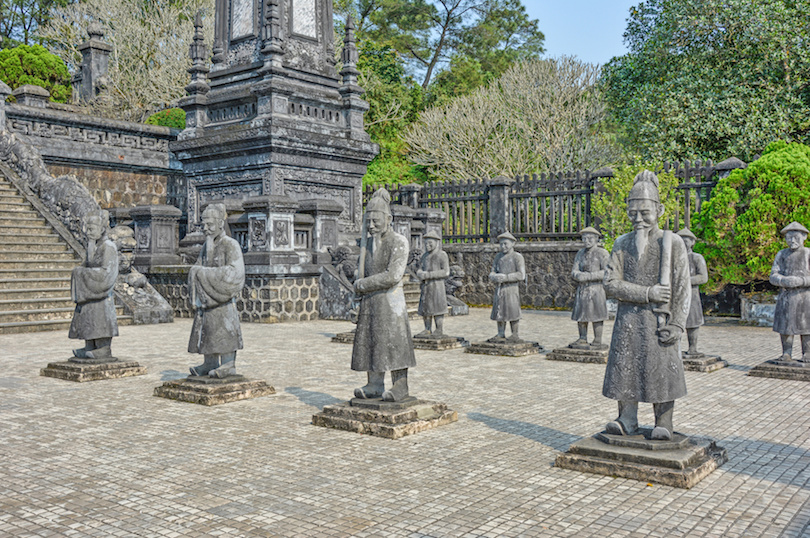
Blending both Vietnamese and European design elements, the architecture of the Khai Dinh Tomb in Hue has been described as Buddhist as well as Roman Gothic. Constructed in the 1920s, the tomb was commissioned by the Emperor of Vietnam as his own future tomb.
The entrance of the complex leads to the Honour Courtyard, and then on to the main building called the Thien Dinh. Khai Dinh’s final resting spot is clearly marked by a bronze statue surrounded by beautiful murals.
24. Con Dao Islands
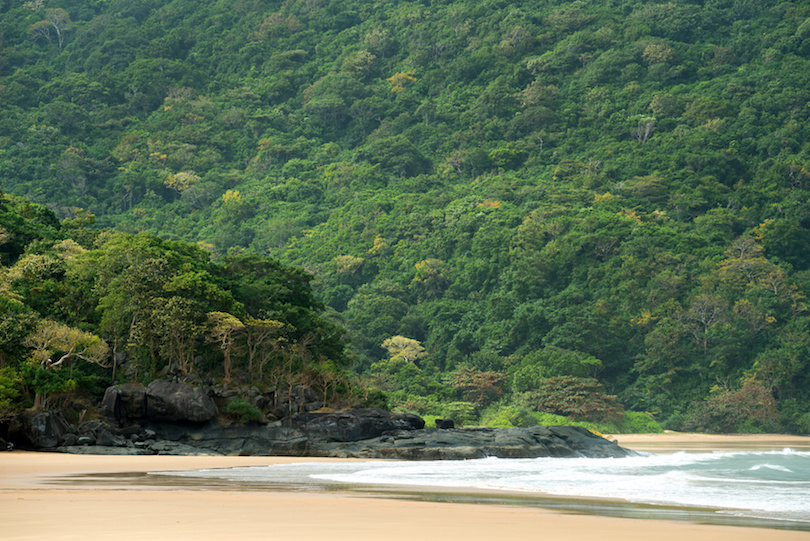
Under French rule, the Con Dao Islands were known as the Devil’s Island of Indochina, a place where thousands of prisoners of war were kept. Today, this group of 16 islands off the southern coast of Vietnam has a completely different purpose.
Visitors come for the beautiful beaches while scuba diving and snorkeling are also popular things to do. However, the history of Con Dao can still be explored at some of the prison buildings that still stand.
Aside from visiting the camps and seeing the notorious ‘tiger cages’, most come to lounge on soft sandy beaches or scuba dive and snorkel. From Con Son, its largest island, you can take unforgettable trips to see dugongs, dolphins and sea turtles.
23. Marble Mountains
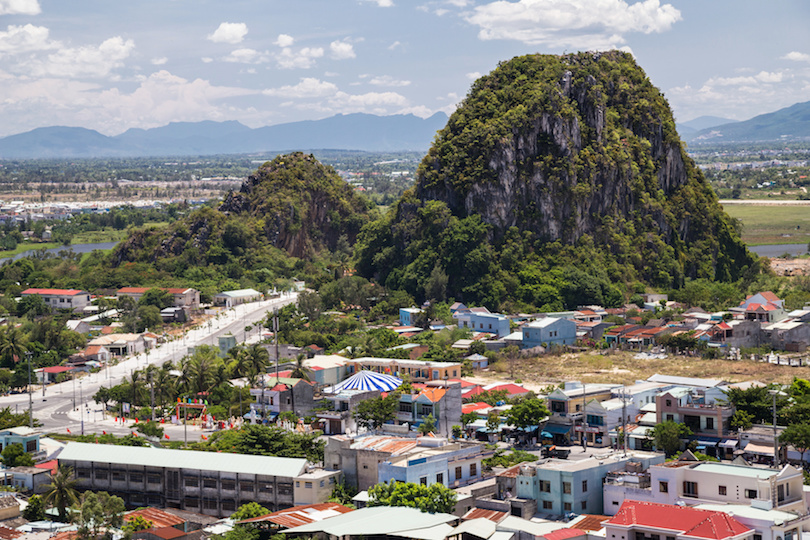
South of Da Nang , are the Marble Mountains. These five peaks are named after the five elements of earth, water, wind, fire and wood. The mountains are picturesque on their own, but they are also home to countless caves, some of which house incredible Buddhist sanctuaries. Some caves contain Confucian or Buddhist shrines, and others were used as sanctuaries and hospitals during the Vietnam War.
After hiking up to Am Phu or Non Nuoc, there are plenty of expertly carved Buddhist statues and soaring pagodas to wander around. Very special and atmospheric, the Marble Mountains also offer some wonderful views over the surrounding area.
22. Notre Dame Cathedral in Saigon
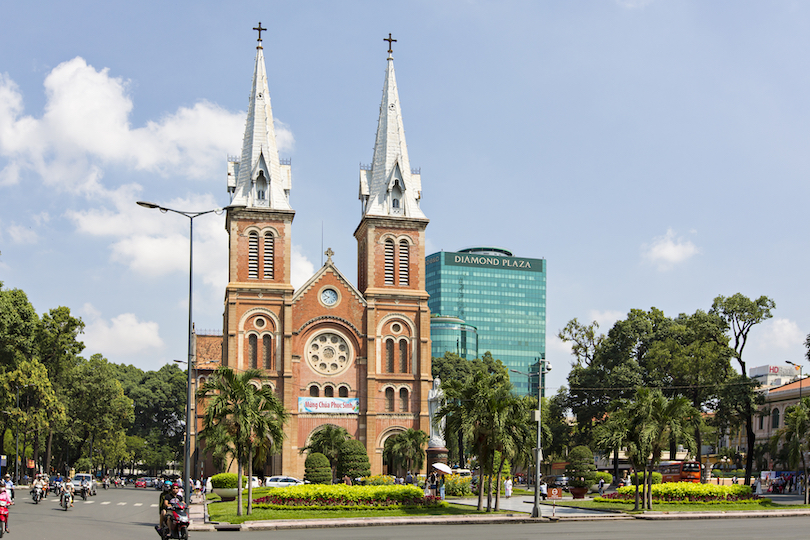
In Ho Chi Minh City, or Saigon, stands the stunning Notre Dame Cathedral. Built in the late 19th century, the cathedral is brick, neo-Romanesque and clearly influenced by European architecture of the same time period. In fact, many of the materials used in construction were imported directly from France.
While the exterior is impressive, the interior is also worth exploring. Look for the surviving stained glass panels as well as carved tiles and a statue of the Virgin Mary.
21. Tam Coc
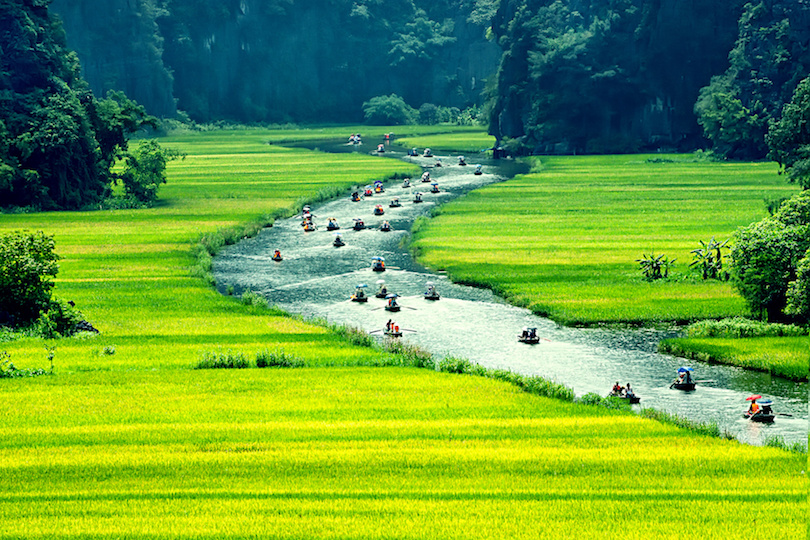
In the Ninh Binh province of Northern Vietnam near is Tam Coc , which translates to English as three caves. The three caves are nestled in a scenic landscape of limestone cliffs and rice paddies, and the river winds through the region.
The caves are called Hang Cả, Hang Hai, and Hang Ba, and they serve as the area’s main attraction. Guided boat tours take you to the caves and along the Ngo Dong River, which is often dotted with floating vendors capitalizing on the tourist visiting on a day trip from Hanoi .
20. My Khe Beach
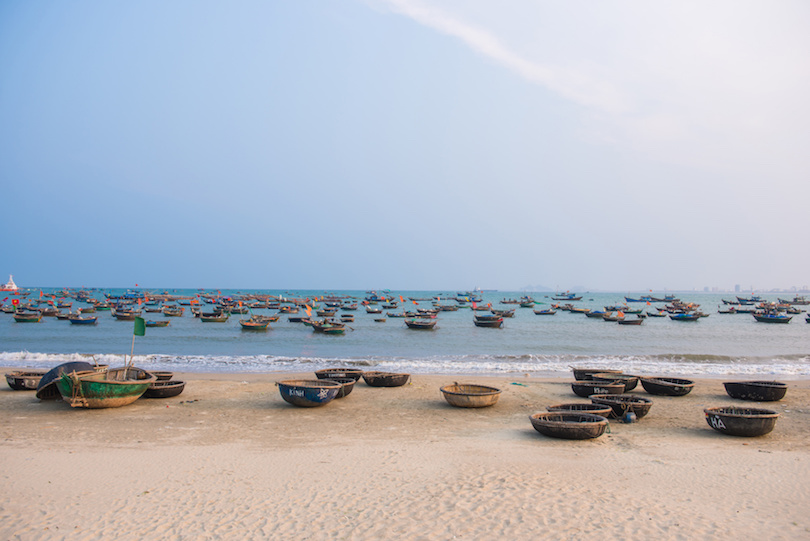
The most scenic spot in Da Nang is arguably My Khe Beach. Also known as China Beach, this was where US servicemen were helicoptered in for R&R during the Vietnam War. These days people come here however for tis pristine white sand, blue water and sunny skies.
Visitors can rent a lounge chair on the sand, relax in the shade under a thatched umbrella or rent a kayak from nearby vendors. Many hotels and cafes are within walking distance of My Khe Beach, making it a hub for visitors as well as locals in search of incredible views.
19. Hang Son Doong Cave
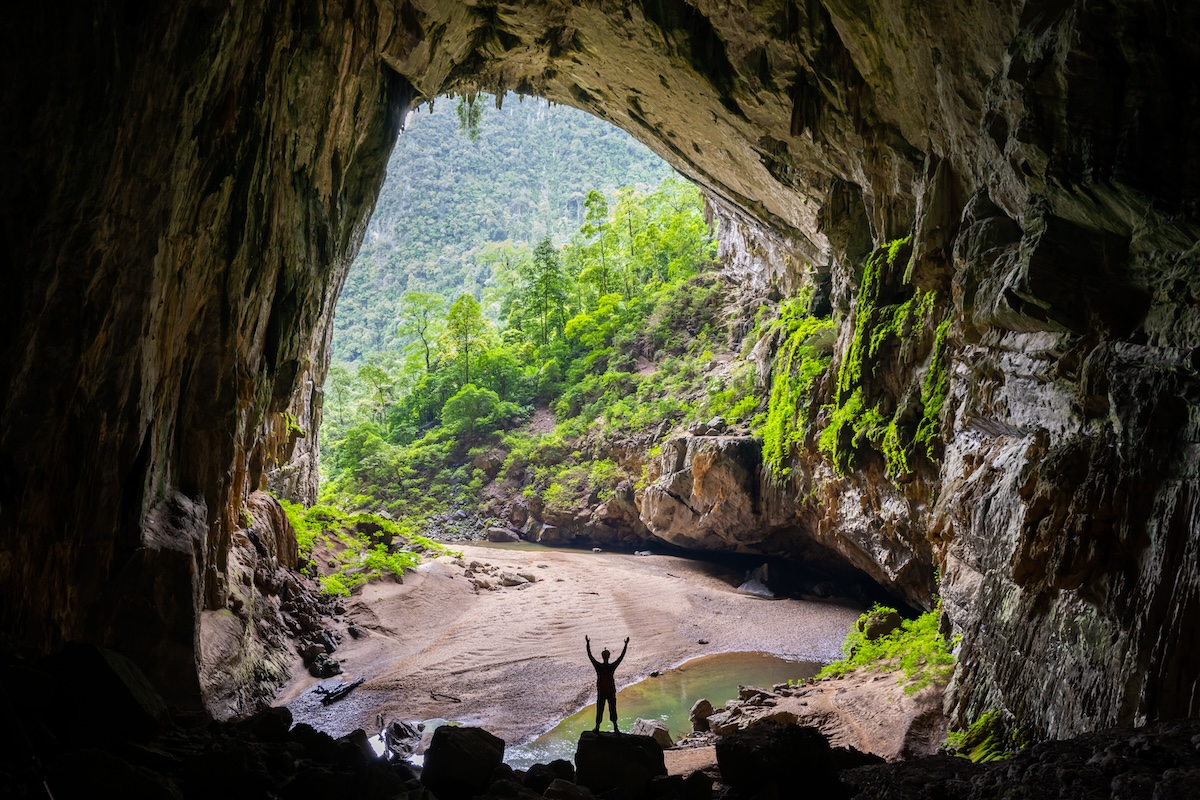
One of the largest caves in the world, and certainly the largest in Vietnam, is Hang Son Doong. Approximately three million years old, Hang Son Doong Cave is an incredible destination unlike anywhere else on the planet. The cave is enormous, and it is possible for dozens of people to camp within it at a time.
Bright blue water pools are located in the cave, and a river runs through it. Lush greenery lines the walls, thanks to erosion that lets in beams of sunlight. The cave is ethereal, and guided tours are available to best explore this amazing landmark.
18. Temple of Literature in Hanoi
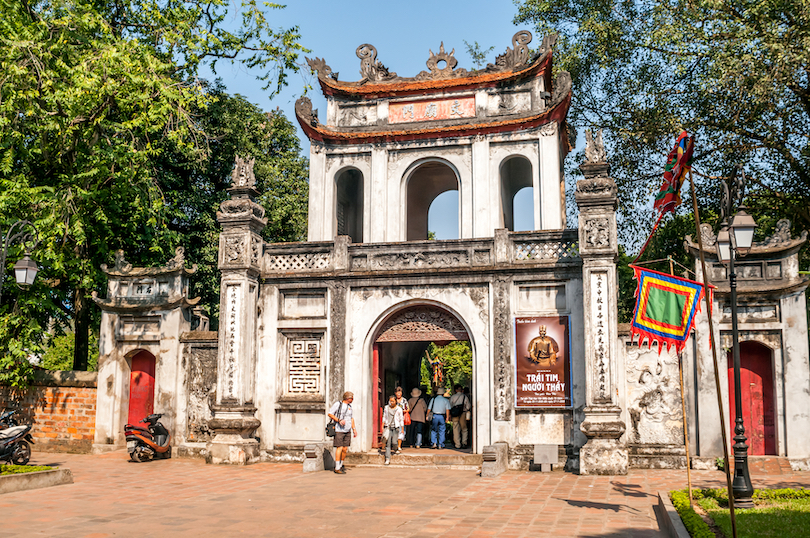
The first university founded in the country, the magnificent Temple of Literature impressively dates back to 1070. Lying amidst gorgeous grounds and courtyards in the centre of Hanoi, it has numerous altars, shrines and an imposing entrance gate to admire.
Dedicated to Confucius, sages and scholars, its grand pavilions and gold-decked ceremonial halls all exhibit some fine traditional architecture. Most striking, however, are the hundred or so stone-carved turtles which honour all students to have passed the royal exam.
Dotted about the complex are tons of informative wall-hangings that explain more about its age-old history. During Tet – the Vietnamese New Year – countless calligraphists assemble outside the temple and write well wishes for people to take home with them.
17. Bac Ha Market
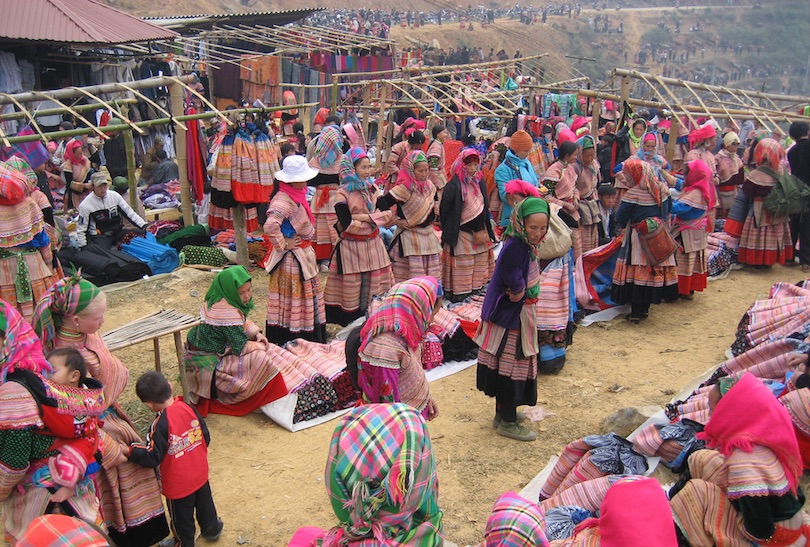
Once a week, the quiet town of Bac Ha becomes a hub of culture and trade in Northwest Vietnam. Residents from the surrounding villages and valleys flock to Bac Ha, and the roads are filled with buses packed with tourists.
Visiting on a Sunday means watching locals in their traditional ethnic dress, sipping the juice from fresh coconuts and browsing countless stalls. Shoppers can find everything for sale in Bac Ha, including water buffalo, delicious Hmong and Thay cuisine, brightly colored fabrics and fragrant spices.
16. Cham Islands
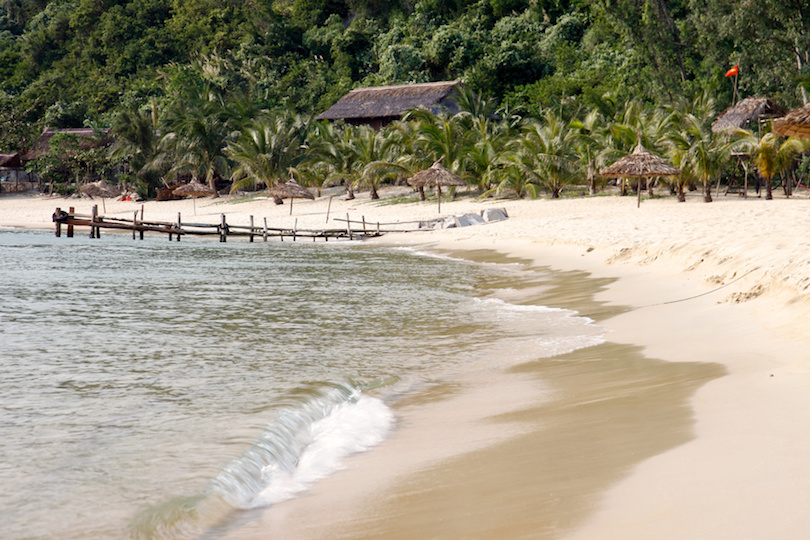
Several miles off the coast of Hoi An is a cluster of mountainous isles known as the Cham Islands . Primarily granite, these islands were once restricted but are now open to the public. The main island Hon Lao, the largest and the only one inhabited, is less than two hours’ away by speed boat.
Visitors can come for the day and go birdwatching, snorkel through the surrounding reefs or just enjoy the scenery of the beautiful beaches. Overnight stays are limited, but can be an incredible experience for the intrepid traveler.
15. Hang Nga’s Guesthouse in Da Lat
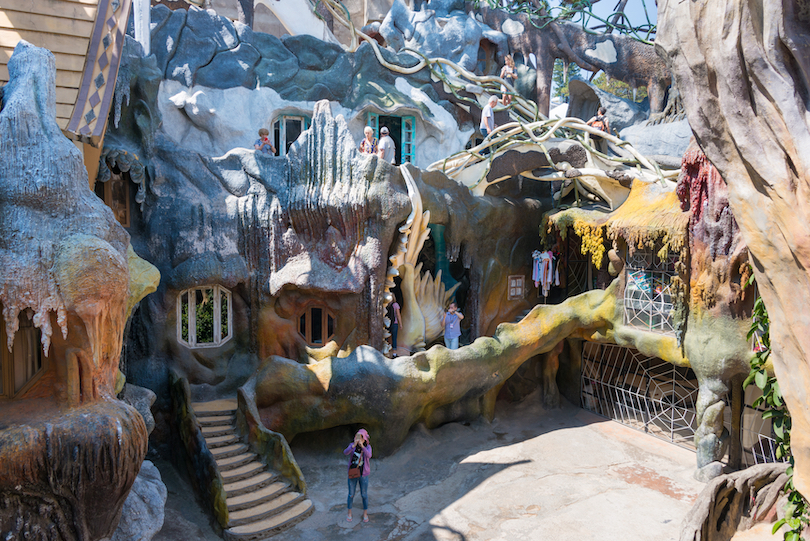
While it may be a bit unusual to include a guest house on a list of a country’s top attractions, Hang Nga’s ‘Crazy House’ in Da Lat definitely warrants its spot. A mix of Dali meets Disney, its extraordinary architecture and equally unique interior create some incredible photo ops.
Inspired by Catalonia’s Gaudi, the phenomenal five-story building was designed by Vietnamese architect Dang Viet Nga in 1990. Resembling a banyan tree, it is decorated with natural shapes that look like caves and mushrooms or tangled plants and spider webs.
Other than exploring its maze of small passageways and narrow staircases, you can actually stay in some of its fun-themed rooms. Fittingly described as a ‘fairytale house’, it really is a must-visit when in Da Lat.
14. Cao Dai Temple
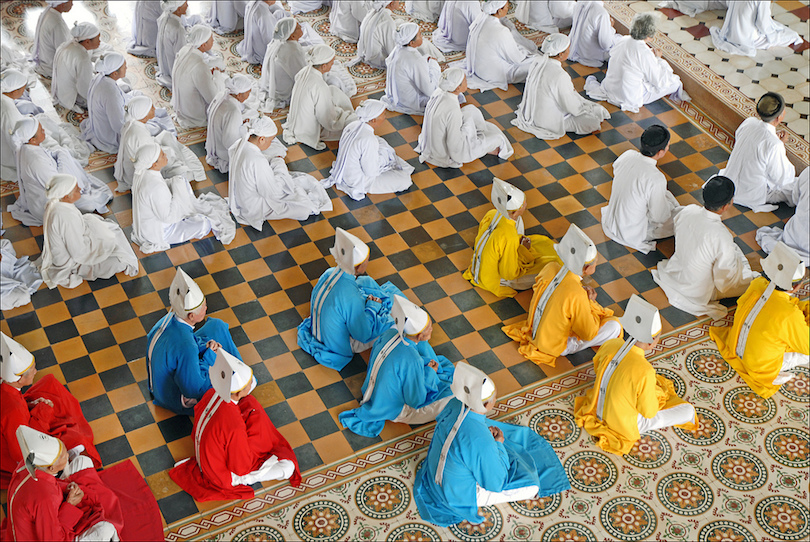
One of the most sacred attractions in Vietnam is the Cao Dai Temple, which was constructed in the 1930s. Caodaism is a uniquely Vietnamese religion that is influenced by elements of Confucianism, Buddhism, Taoism and even Roman Catholicism.
In the main building of the Cao Dai Temple, there are four prayers conducted daily, and visitors can watch or even participate in the ceremonies. In addition to the temple, which boasts beautiful murals, the complex is home to many additional residences, administrative buildings and even a hospital.

13. Imperial Citadel in Hue
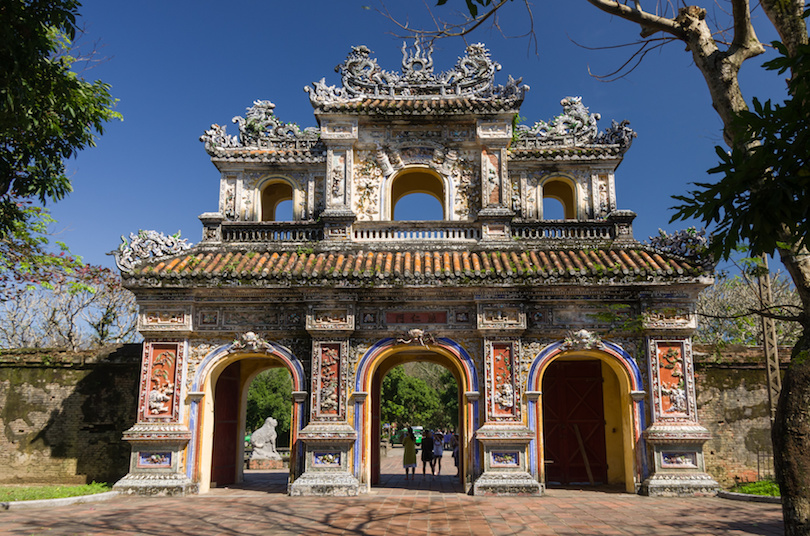
For nearly 150 years until World War II, the Imperial Citadel of Hue served as the capital of Vietnam’s Nguyen dynasty. In the very center of these secure walls was the Purple Forbidden City, an area reserved exclusively for the royal family.
The enormous Imperial Citadel was also a strategic hold during the Vietnam War, as it stands very close to the demilitarized zone that separated North and South Vietnam. This destination is significant for all those who are interested in the history of the nation.
Highlights include the majestic Meridian Gate and the colourful Mieu temple complex. As you stroll about its grounds, you’ll also find several interesting museums to stop at.
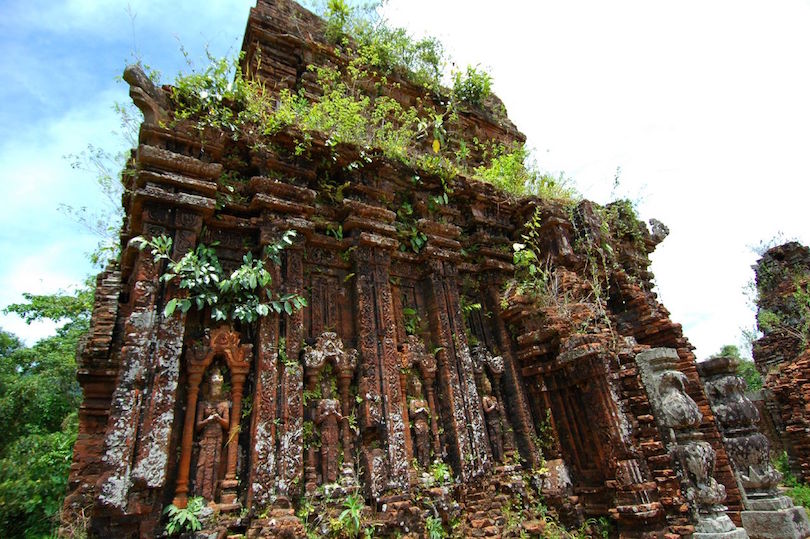
More than 1,600 years ago, the Chan people of Vietnam began construction on dozens of Hindu temples near the village of Duy Phú. Under the shadow of Cat’s Tooth Mountain, and surrounded by a green valley, several of these temples still stand.
Constructed between the 4th and 14th century, the humongous Hindu complex served as an important religious center and burial site for the Kings of Champa. At its zenith, there were over 70 temples dedicated to Shiva and Vishnu dotted about the valley.
Known collectively as My Son, most of the temples are now ruins. However, that only adds to the atmosphere. Visiting My Son is like stepping back in time, thanks in part to its secluded location and the lack of touristy infrastructure.
11. Phong Nha Caves
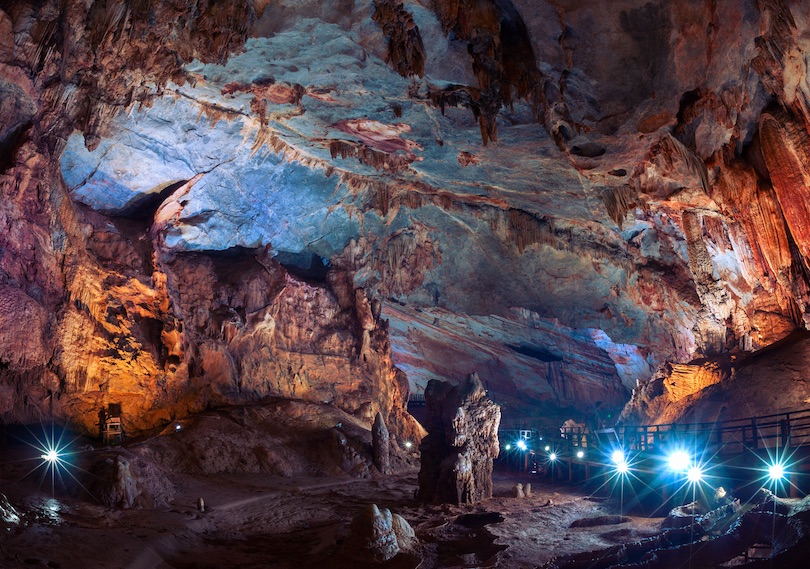
Phong Nha-Ke Bang National Park boasts many attractions, but none is so popular as its caves. The Phong Nha Caves are made up of hundreds of cave systems, many of which are large enough to hold entire city blocks.
Formed throughout millions of years, its endless mountains and forests contain over 300 caves and grottos. Some, such as Son Doong and Phong Nha, are among the largest in the world.
Entering their cavernous confines is unforgettable as spectacular stalactites and stalagmites are on show wherever you look. What’s more, there are even underground rivers, rainforests and beaches to see.
A gateway to the caves is Son Trach, a growing village that is home to several transport links throughout Vietnam, local restaurants and meeting points for guided tours to the caves.
10. Nha Trang
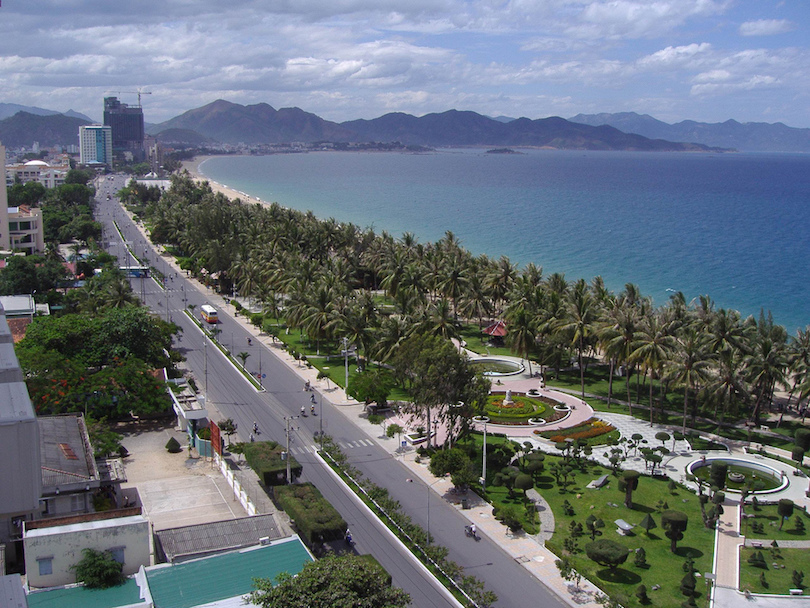
Nha Trang is Vietnam’s most popular seaside resort town located along the second most beautiful bay in the country. It features beautiful beaches with fine and clean sand and clear ocean water with mild temperatures.
The city has about 300,000 inhabitants and is more lively and urban in character than other beach destinations like Mui Ne and Phu Quoc. It’s also the scuba diving center of Vietnam.
Besides its wonderful beaches and water parks, there are a couple of museums and historic sights to see. The city is also renowned for its splendid seafood and vibrant nightlife scene.
9. Cu Chi Tunnels
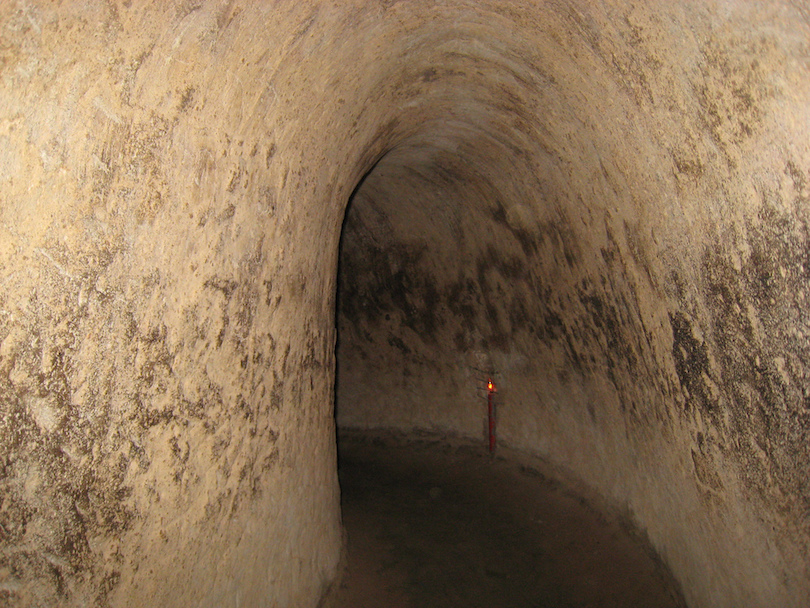
The Cu Chi Tunnels are an immense network of connecting underground tunnels located about 40 km northwest of Ho Chi Minh City (Saigon). The tunnels were used by Viet Cong guerrillas as hiding spots during the Vietnam War, and were the base of operations for the Tết Offensive in 1968
Stretching a staggering 250 kilometers in total, their oppressive tunnels and chambers were hollowed out by hand using only simple tools. Here, thousands of fighters lived in absolutely horrendous conditions alongside ants, snakes, scorpions and spiders.
The tunnels have become a popular tourist attraction, and visitors are invited to crawl around in the safer parts of the tunnel system.
8. Mekong Delta
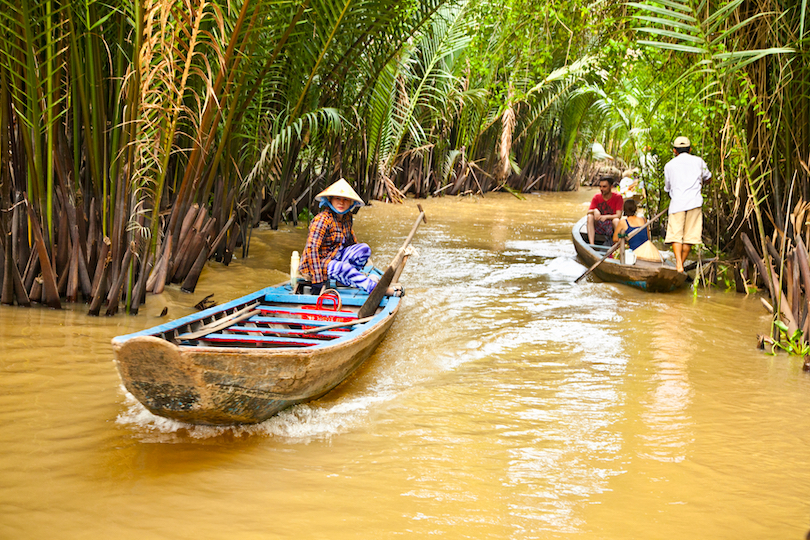
Fittingly nicknamed the ‘Rice Bowl of Vietnam’, the Mekong Delta’s many murky waterways cover a massive area immediately west of Ho Chi Minh City. Both fascinating and fun to boat about, the remote region is full of pretty paddy fields, mangroves and floating markets.
Since as early as the 4th century BC, the vast maze of rivers, swamps and islands has been an important source of agriculture and aquaculture. Impressively enough, it produces more rice than Japan and Korea combined.
As you paddle about in little wooden canoes, you’ll pass fruit orchards and cattle farms and learn about everyday life in the delta. There are also numerous nature reserves with floating markets like Phong Dien and Cai Rang always being popular stops.
7. Sand Dunes in Mui Ne
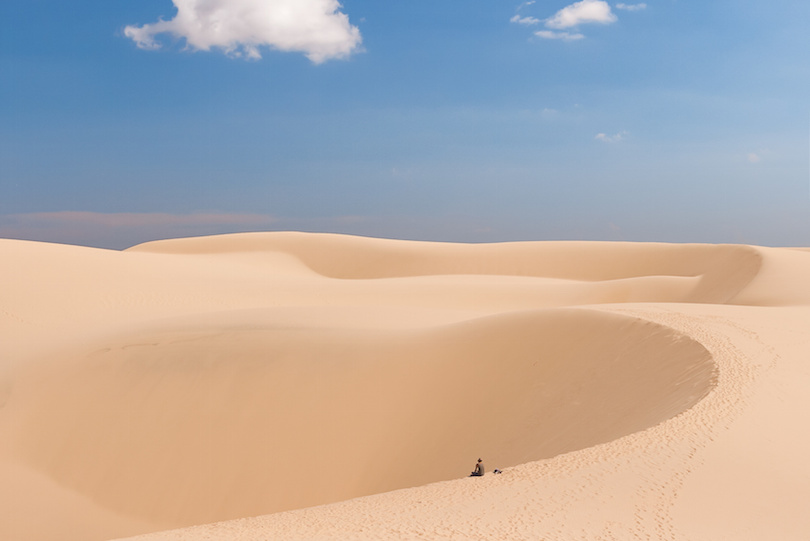
The formerly little-inhabited beach south of the fishing village of Mui Ne has seen some serious development in the last 20 years. Due to strong sea breezes it is a popular destination in Vietnam for kite- and windsurfing.
The town is still most known though for its sparkling dunes that wouldn’t look out of place in the Sahara. Towering over 10 metres in height, they make for a phenomenal sight with lots of people either sledding or quad biking about them.
While the red sand dunes lie quite close to town overlooking the sea, the white ones are a bit further away. Both look particularly epic at sunrise and sunset with some even taking hot air balloon rides above them.
6. Terraced Rice Fields In Sapa
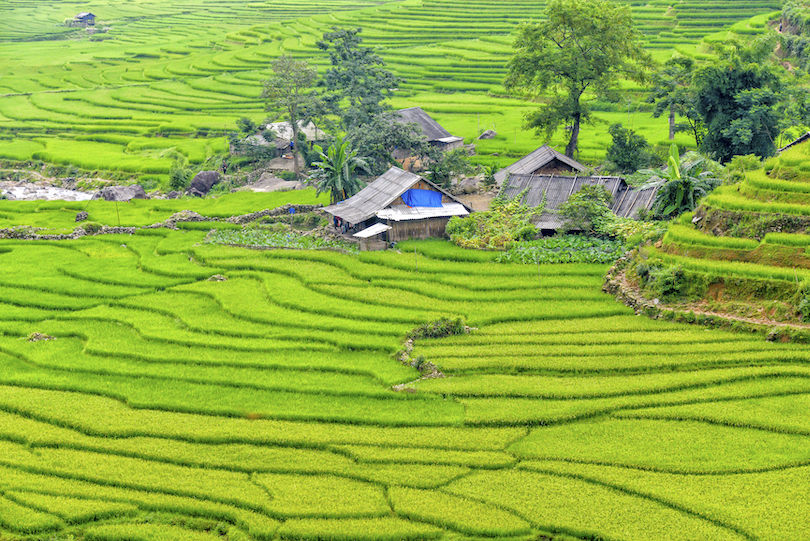
Some of Vietnam’s most famous and photogenic landscapes, however, have to be the scenic Terraced Rice Fields around Sapa. Nestled away right in the northwest of the country, their sweeping valleys and vivid green hues make for unbelievable views.
Located not far from the Chinese border, the popular and picturesque town lies right by the 3,143 metre-high Fansipan; the tallest peak in Southeast Asia. In between them are all the romantic terraced rice fields of Muong Hoa Valley.
For many centuries now, local hill tribes have constructed and maintained these engineering marvels, cultivating rice amidst the region’s harsh mountain climes. Other than enjoying its arresting views, you can also trek about the verdant fields and visit all the small villages.
5. Phu Quoc
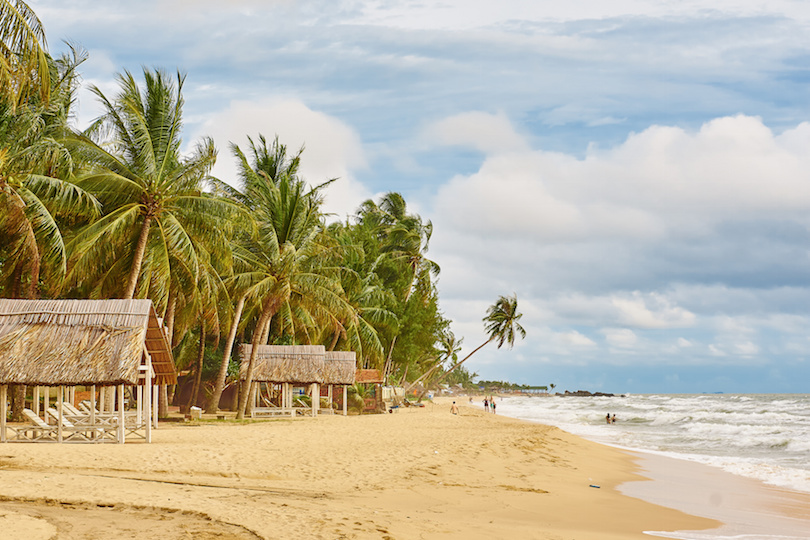
Although it is the largest island in Vietnam, the gorgeous Phu Quoc lies just off the coast of Cambodia, surrounded by the glinting Gulf of Thailand. A tropical paradise, it is famed for its wonderful white sand beaches and crystal-clear waters.
Coated in dense rainforest with mountain ridges also running through it, the idyllic isle was quite undeveloped until relatively recently. While most of it is still pristine, new restaurants and resorts are popping up all the time.
As well as sunbathing and swimming, you can always scooter around nearby fishing villages or tour pearl and pepper farms. With delicious seafood dishes to try and twinkling waterfalls to hike to, Phu Quoc really does make for a great island getaway.
4. Hoi An Ancient Town
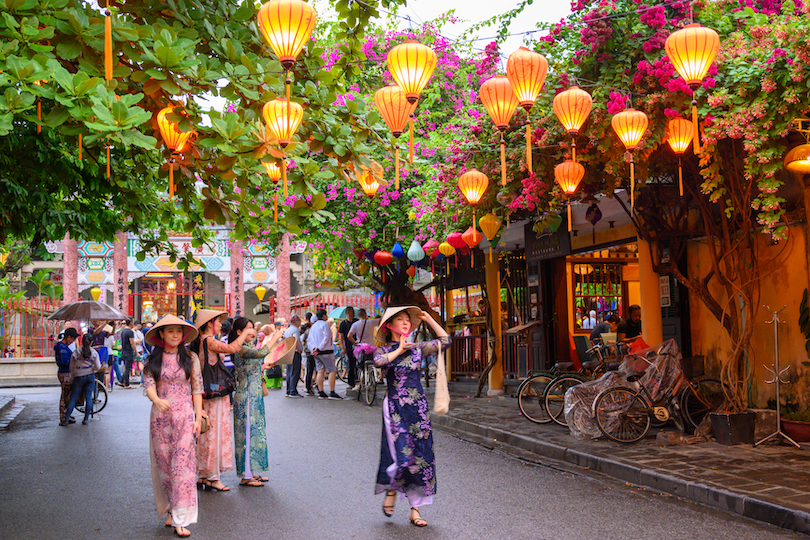
This fishing-village-turned-tourist-attraction is situated on the coast of the South China Sea. Hoi An has been an international port from the 16th century although the serious shipping business has long since moved to the city of Da Nang.
The heart of the city is still the Old Town, full of winding lanes and Chinese-styled shops. It is sometimes called the “Venice of Vietnam” because of the narrow canals that cut through part of the town.
Due to its strategic setting along the country’s central coastline, Hoi An thrived for centuries as an important trading port. Its many merchants built not just Chinese-style temples and shophouses but Vietnamese tube houses too. Later on, the French also added colonial villas.
What makes its Ancient Town even more enchanting are all the colourful lanterns strung up along its streets and riverside. In addition to taking photos of its quaint Japanese-covered bridge, you can stop for a bite to eat or shop for souvenirs at its vibrant central market.
3. Hoan Kiem Lake in Hanoi
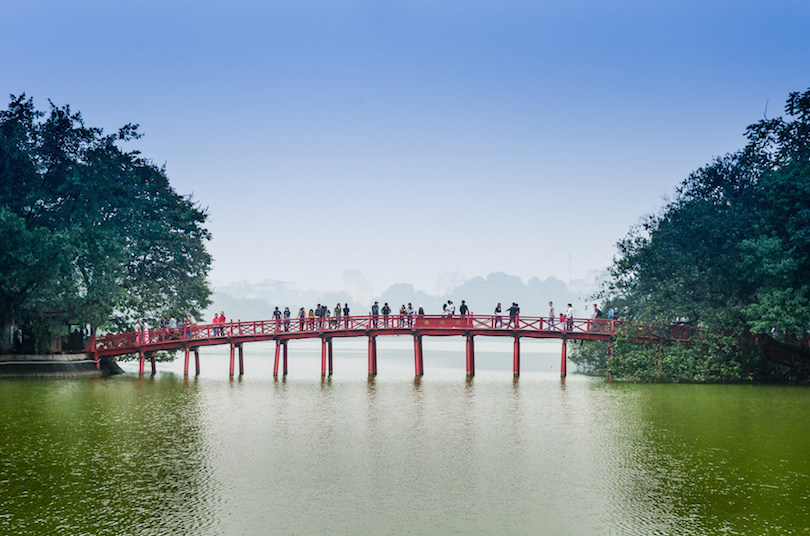
Located in the historical center of Hanoi , Hoan Kiem Lake is one of the major scenic spots in the city and serves as the locals’ favorite leisure spot. Hoan Kiem means “returned sword”, and the name comes from a legend in which King Le Loi was given a magical sword by the gods, which he used to drive out the invading Chinese. Later he returned the sword to the Golden Turtle God in the lake.
See also: Where to Stay in Hanoi
Aside from strolling along its shores taking in the scenery and views, you can also cross the bright red The Huc Bridge to the historic Ngoc Son Temple. Another of the lake’s landmarks is the iconic Turtle Tower which is set on a tiny island far offshore.
2. Thien Mu Pagoda in Hue
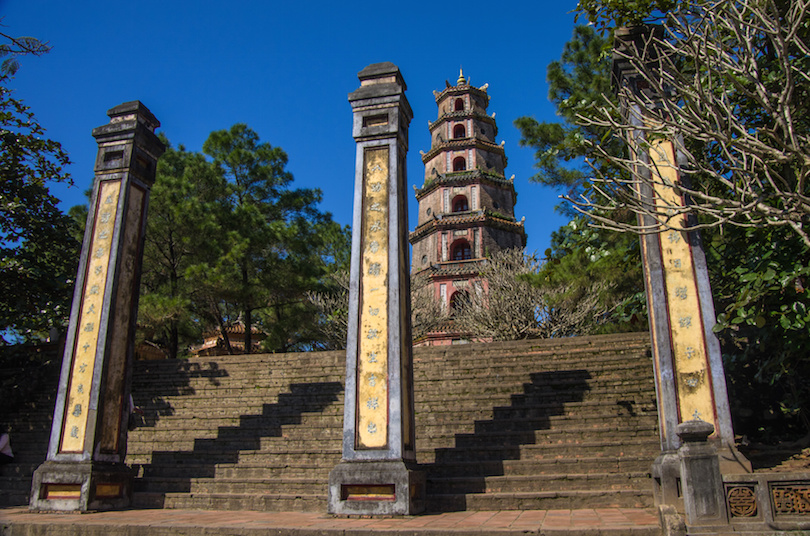
Along with the Imperial Citadel, the marvellous Thien Mu Pagoda is undoubtedly Hue’s main symbol and sight. Perched upon a hill overlooking the Perfume River, it makes for some fine photos with the lush landscaped grounds at its foot being very peaceful to wander around.
Originally erected in 1601, the pagoda was built by the first of the Nguyen lords to pray for the country’s prosperity. Now towering seven storeys in total, it houses some exquisite gold and silver images of the Buddha.
After snapping some pics of the 21-metre-high tower, make sure to explore all its gorgeous gardens along the river.
1. Ha Long Bay
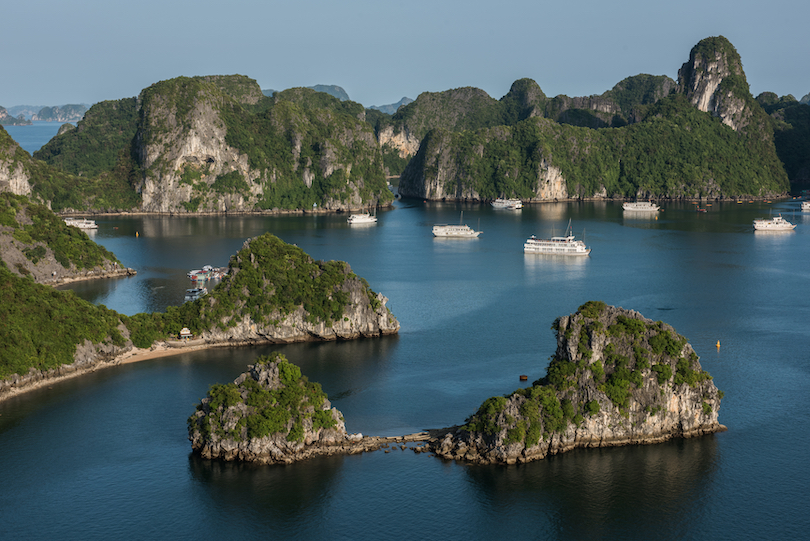
Renowned around the world for its incredible karst landscapes and emerald waters, Halong Bay is by far the most popular tourist attraction in Vietnam. Featured on the front of countless travel catalogues, it can be reached in roughly 2.5 hours from Hanoi.
Home to almost 2,000 craggy isles and looming limestone outcrops, its name means ‘Bay of Descending Dragons’ in Vietnamese. Rising dramatically above the waters around them, their rugged rocks are topped by thick jungle vegetation with sandy beaches and cool caves found at their feet.
Many people also take sightseeing cruises about the bay, stopping off at floating villages and grottoes along the way. You can also always swim and kayak or enjoy relaxing Tai Chi, yoga and cooking classes aboard the junk boats .
Map of Tourist Attractions in Vietnam
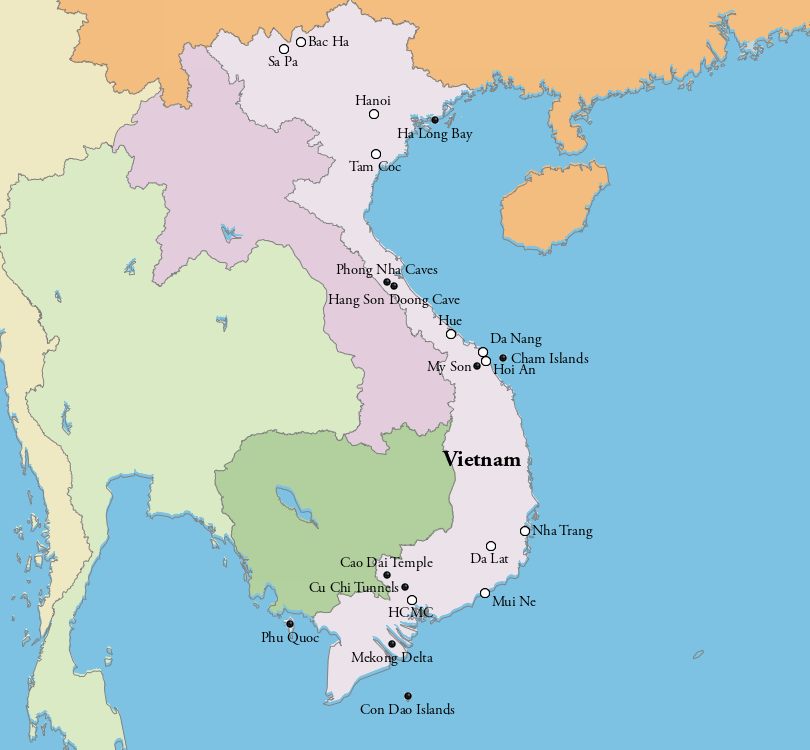
Share this post:
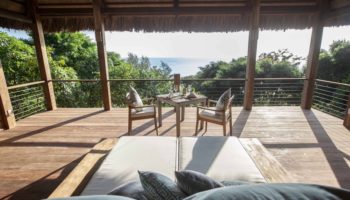
11 Most Amazing Hotels in Vietnam
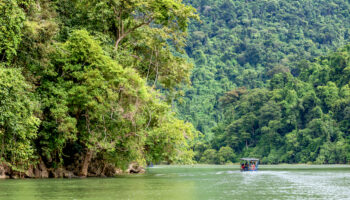
10 Most Underrated Destinations in Vietnam
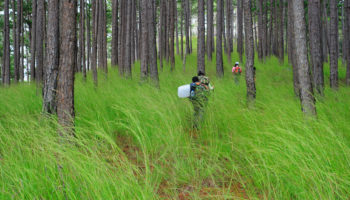
12 Most Beautiful National Parks in Vietnam
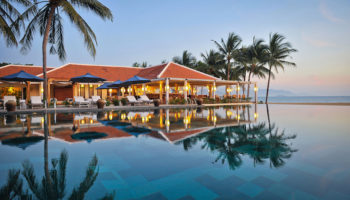
10 Best Vietnam Luxury Resorts
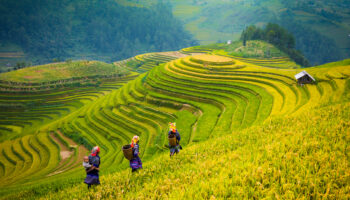
17 Best Places to Visit in Vietnam
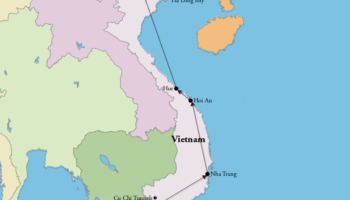
How to Spend 2 Weeks in Vietnam: DIY Itinerary
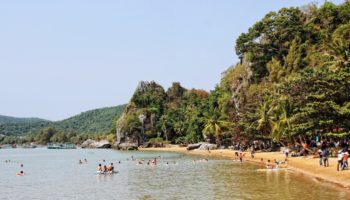
10 Most Beautiful Islands in Vietnam
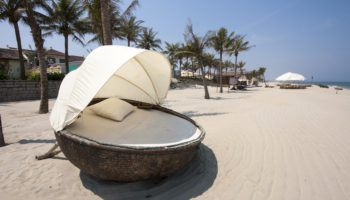
10 Best Beaches in Vietnam
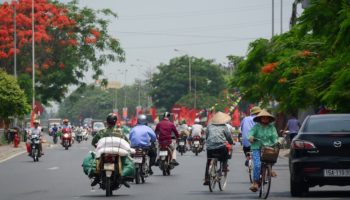
17 Best Cities to Visit in Vietnam
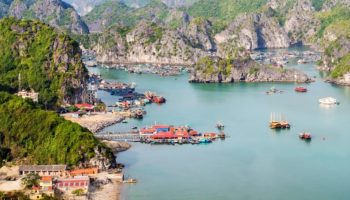
10 Most Amazing Destinations in Northern Vietnam
Reader interactions.
November 8, 2017 at 6:22 pm
I spent two weeks in Vietnam Dec 2016, Cam Ranh, Nha-Trang, Ho Chi Minh City, Cu Chi Tunnels, Tay Ninh, The Mekong Delta, I have never had such a great trip in my life. I am already planning my next trip. I can’t wait to go back. The in country flights are fantastic, the people are awesome and for those who complain about the traffic, hey it is their way of life, they don’t need to change because are coming to visit. Go there and enjoy yourself.
June 10, 2017 at 3:02 am
I am planning a trip to Vietnam and Cambodia for Feb 2018 and this site has been of great help. so many positive comments and a few scarey ones…I will continue doing my home work and am hoping that 10 to 14 days will suffice for the trip from north to south and Con Dao.
May 21, 2017 at 11:54 pm
I think Ha Giang, Ba Be lake, Ban Gioc waterfall, Trang An are beautifull too.
May 10, 2017 at 1:25 am
i am planning to visit this country by next year , this blog is very helpful . amazing place! see you sonnest!
April 17, 2017 at 3:09 am
we are planning to visit Vietnam shortly .,good to learn reviews as posted by all of you. We are excited to explore.
March 28, 2017 at 7:47 am
i really like Việt Nam. In my opinion, i think you should visit Phú Quốc. What a beautiful island! I’m Vietnamese. Thanks you so much 🙂
January 17, 2017 at 7:16 am
great information, thanks!
November 25, 2015 at 1:04 am
love Vietnam so much. People are very friendly. I have just had an interesting holiday with my family in summer. Nha Trang beach is the most beautiful beach i have ever seen. The food is very special that no country has. I will come back to Vietnam soon.
June 11, 2015 at 10:43 pm
If you go to Vietnam, it is best to travel on your own. Stay away from the tourist traps because as a tourist, you will be expected to pay high rates. Better to rent a motorbike and just go. I have been to Phu Quoc island and it is not clean. The Vietnamese are the worst next to India about throwing garbage everywhere. We went to star beach in the very south of the island. It’s difficult to get there, not many speak English, and it’s very expensive. There was polluted water running off into the sea. The beach water was yellow at the shoreline. There was garbage dumped everywhere. Your cheap rooms at an overnight house should cost around $8 per night in the off season. At a higher end place it will be about $50 / night. In the high season it will be much more.
April 12, 2015 at 9:20 am
Beautiful country to visit. Viet Nam has improved a lot after a long war. Thanks for the information.
February 3, 2015 at 7:25 pm
Love Vietnam! Yes, you can be ripped off and charged more if you act like an ethnocentric tourist… bargain for things like the locals do, be smart by learning atleast a little of the language, get a guide if you need one. Don’t renounce the place because YOU can’t fit in and atleast try to have cultural etiquette! Of if the best trips of my life! Truly awesome! I will be back!!
December 26, 2014 at 4:39 am
I’ve lived in Vietnam for over 11 years. I’ve found many places to visit during my ventures through Vietnam. I am surprised that the the Ke Bang National Park is not on this list of places to go. I would think the caverns and small boat rides would be a very interesting trip to the North central part of Vietnam. The only place I have not been is Sa Pa and island of Phu Quoc… I’ve traveled several times by motorbike covering between 1700 and 2100 km throughout Vietnam. Now living in DaNang. The beaches here are fantastic, lodging is of your choice and many say the food great.
November 6, 2014 at 12:40 pm
Spent 3 weeks in Vietnam & loved every minute of it. I may have got ripped off a dollar or two here & there but its so cheap it didn’t worry me. The food is great, the people are great. Hoi An is a delight. I always travel to Thailand but it was a great break away from Thailand and will be heading back to Vietnam 2015 for more exciting travel. PS; Marisa, I’m going to learn basic Vietnamese to get me by. No ranting from me.
October 24, 2014 at 11:23 pm
I am soooooo happy i found this website cos needed a good one for a school project:) 🙂 :{ also I am going to Vietnam soon so I am glad to know some of what I am gonna see thx whoever made this website
October 24, 2014 at 6:34 pm
Help! Need to take vacay soon! Cant decide bw vietnam and thailand. Want something different as far as culture (i’m from usa). Love beaches, touristy stuff and immersing myself with the locals. Drawn to vietnam for the history and because my dad fought in the war. Drawn to thailand for the beaches. Plan on two weeks at either country. Cost is a factor. Would also like to do a side trip to angor wat since i’ll be so close. Input/suggestions would be appreciated!
October 22, 2014 at 8:19 am
Literally just returned (yesterday) from an awesome trip to Vietnam. Loved it there and the food and people were awesome. Very respectful, friendly and helpful. Our guide was phenomenal.
June 23, 2014 at 6:47 pm
To those who say you got ripped off while traveling in Vietnam, as being a Vietnamese, I very apologize for this unfriendly manner. I understand this and this could even happen to Vietnamese tourists. As my own experience, places that you could be ripped off the most are street-food places. If you don’t understand the culture there, please find a local, they will help you get around. We are very friendly and we would love to learn English from travelers. I understand why those people rip foreigners off. It is because of poverty and lack of education. I believe when a new government ruling our country and kick the communists out of our land, things will change. Vietnam is so beautiful. I would love to go back there and travel to every corner of the country. Before I start traveling the world, I have to explore my own mother land.
June 10, 2014 at 6:12 am
Hello, Just back from a great trip to Vietnam, amazing place, clean, green, never felt intimidated once in our 11 days trip to this Gods country, with such a rich history, diversity, culture food etc….we were a group of 17 from India. Being from India we did not find traffic as chaotic of how it is written about. We thoroughly enjoyed the food from pork, sea food, and even tried crickets!!! We enjoyed every city, special was Hoi An could have stayed longer there!!! Amazing pagodas and temples, awesome Ho Chi Minh Mausoleum. The Cu Chi tunnels give you a real experience of the ingenuity of the Viet Cong (VC). This country has to be in the list of MUST visit before you die.
May 8, 2014 at 8:47 am
You have got to love Marisa’ post with quotes like “none of the vendors speak English or have English menus”! Vietnam is amazing!
April 23, 2014 at 1:38 am
I am in Vietnam right now, and I have to say it’s a completely positive surprise. We have heard from a lot of people that vietnamese are unfriendly, stories of ripping off the tourists, etc… Well, I have seen a bunch of foreign tourist here bargaining for every penny, and complaining about everything. Hanoi as an amazing place and Halong Bay is unbelievable, and local people are generally very friendly and quite natural. And even if we (the foreigners) pay more than the locals, it is still a very cheap country. Besides, if we are honest to ourselves, we should be more than happy how they treat us after all the misery the west has brought to them in the past. Next week heading off south, can’t wait to see other fascinating places in this beautiful country.
March 9, 2014 at 3:22 am
Vietnam is one of the most diverse and beautiful countries i have been to, to those that say it is a rip off is completely wrong, you pay a single dollar for some of the best street food in the world. Tourists pay more than locals because nearly every local i met had never left their town or major city because they earn basically nothing compared to western travellers.I would highly suggest spending 1 to 2 months in this amazing country. So much love for Vietnam.
February 6, 2014 at 2:12 am
A good selection of places to go. I missed some of them, but you can’t go everywhere. 🙂 I’d like to recommend a tour with the Easy Riders from Dalat. It was a nice experience. Anyone, who wants to know more, can check it out on my blog. Plus, Dalat itself, is a nice place to hang out.
January 27, 2014 at 7:15 am
I am currently in Vietnam and so far this place has been a complete tourist-unfriendly rip off. Yes Halong Bay is nice, yes the sights such as Ho Chi Minh’s Museum and Mausoleum and the Vietnam War museum and Hanoi Hilton prison in Hanoi are worth seeing but to get to these places you have to put your life on the line just to walk along a road. Never have I met such insincere people in my life and I have travelled all over the world including backpacking in Thailand, Chile, Venezuela, Sri Lanka, South Africa etc. Tourists pay far more than locals for train tickets, bus tickets,food. The food is bland and unappetizing compared with Thailand in restaurants and its ten times more difficult to use street vendors as nobody speaks english or has english menus. Only 5% of visitors return to Vietnam compared with 50% who return to Thailand, and you have to pay a very high cost for a visa to get here as well. My advice for Vietnam would be if you have to visit, go with a tour company having paid for everything in advance. Sorry we wont be returning. Ever.
January 20, 2014 at 9:08 am
Vietnam is a great travel destination. I spent a month in south VN in 2008, and hope to visit the north (Ha Giang, Lang Son) later this year.
November 25, 2013 at 1:53 am
Son Doong cave is also Amazing!! I’ve been in Hanoi and walked around Hoan Kiem lake and Halong bay. Very nice!
November 10, 2013 at 10:51 pm
i loved it in Vietnam, especially in the Chu Chi Tunnels it was an amazing experience. my wife and i even saw bats, i would defiantly recommend going to Vietnam
November 5, 2013 at 6:36 am
Just left Vietnam having spent 3 weeks there, what a nightmare. Been on the road for 4.5 months now, overland from Europe, as part of a 7 month trip. I’ve visited nearly 50 countries in my lifetime, Vietnam is just the worst. As a tourist you are constantly lied to, cheated and overcharged (by 5, 10, 20 times the fair price) not by a small minority, but by the vast majority of the people you interact with – if you let them. If you choose to visit Vietnam for its mediocre sights, take GPS enabled maps, a stack of local information / guidebooks and make absolutely sure you believe and trust no one you speak to while there.
November 3, 2013 at 7:24 pm
If you have time, Just visit Da Nang City, Viet Nam. Da Nang is very nice and full of hidden thing waiting for your Exploration.
July 7, 2013 at 4:07 am
As a solo-backpacker will be touring Vietnam and Cambodia in November 2013. thanks for youir excellent information on Vietnam places of Interest.
May 6, 2013 at 3:10 pm
I love to see my country again and i am doing my project about my country. I luckily see this site and have enough info here. Thank you very much .
October 16, 2012 at 1:42 am
vietnam is very beautiful as i m newly married i want to come here for honeymoon
September 12, 2012 at 4:38 pm
I want to go here so bad! It looks so beautiful! Thank you so much for this information because I’m doing a project for school and it needed to include attractions… luckly your site was the best one I could find! Oh and don’t worry I gave you credit for the info! 🙂
July 14, 2012 at 1:20 pm
Vietnam seem to be a very beautiful country that I would like to visit soon.
January 13, 2011 at 4:22 pm
Great post and useful information! Thanks!
Leave a Reply Cancel reply
Your email address will not be published. Required fields are marked *
This site uses Akismet to reduce spam. Learn how your comment data is processed .
Update April 12, 2024
Information for u.s. citizens in the middle east.
- Travel Advisories |
- Contact Us |
- MyTravelGov |
Find U.S. Embassies & Consulates
Travel.state.gov, congressional liaison, special issuance agency, u.s. passports, international travel, intercountry adoption, international parental child abduction, records and authentications, popular links, travel advisories, mytravelgov, stay connected, legal resources, legal information, info for u.s. law enforcement, replace or certify documents.
Before You Go
Learn About Your Destination
While Abroad
Emergencies
Share this page:
Travel Advisory July 24, 2023
Vietnam - level 1: exercise normal precautions.
Reissued with obsolete COVID-19 page links removed. Exercise normal precautions in Vietnam.
Read the country information page for additional information on travel to Vietnam.
If you decide to travel to Vietnam:
- Enroll in the Smart Traveler Enrollment Program (STEP) to receive Alerts and make it easier to locate you in an emergency.
- Follow the Department of State on Facebook and Twitter .
- Review the Country Security Report for Vietnam.
- Visit the CDC page for the latest Travel Health Information related to your travel.
- Prepare a contingency plan for emergency situations. Review the Traveler’s Checklist .
Embassy Messages
View Alerts and Messages Archive
Quick Facts
Must have six months’ validity remaining.
One visa page required for entry stamp.
Not required.
None. However, Vietnamese Dong in excess of VND 15,000,000 or foreign currency in excess of 5,000 U.S. dollars or equivalent must be declared.
Embassies and Consulates
U.S. Embassy Hanoi - Consular Annex 170 Ngoc Khanh Ba Dinh District Hanoi, Vietnam Telephone: From outside Vietnam: +84-24-3850-5000 From the U.S.: 011-84-24-3850-5000 From landline within Hanoi: 3850-5000 From mobile or landline within Vietnam: 024-3850-5000
Emergency: From outside Vietnam: +84-24-3850-5000 or +84-24-3850-5105 From the U.S.: 011-84-24-3850-5000 From landline within Hanoi: 3850-5000 or 3850-5105 From mobile or landline within Vietnam: 024-3850-5000 or 024-3850-5105 Fax: (+84-24) 3850-5010 Email: [email protected] Facebook
U.S. Consulate General Ho Chi Minh City 4 Le Duan, District 1 Ho Chi Minh City, Vietnam Telephone: From outside Vietnam: +84-28-3520-4200 From the U.S.: 011-84-28-3520-4200 From landline within Ho Chi Minh City: 3520-4200 From mobile or landline within Vietnam: 028-3520-4200
Emergency: From outside Vietnam: +84-28-3520-4200 From the U.S.: 011-84-28-3520-4200 From landline within Ho Chi Minh City: 3520-4200 From mobile or landline within Vietnam: 028-3520-4200 Fax: (+84-8) 3520-4244 Email: Contact Us Here
EMERGENCY TELEPHONE NUMBERS WITHIN VIETNAM
Police: 113 Fire brigade: 114 Ambulance: 115
Destination Description
Learn about the U.S. relationship to countries around the world.
Entry, Exit and Visa Requirements
Entry Requirements: You must have a valid passport and a visa (or pre-approval for a visa on arrival) to enter Vietnam. Your passport must be valid for six months beyond your planned stay, and you must have at least one blank visa page (not including the endorsement page). Visit Mission Vietnam’s website for the most current information. If you arrive in Vietnam without an appropriate visa (which could be an e-visa) or pre-approval for a visa on arrival, you will be denied entry . The U.S. Mission to Vietnam cannot assist U.S. citizens who arrive in Vietnam without required visas. U.S.-Vietnam dual nationals should consult the Department of State’s information page for Travelers with Dual Nationality and the Embassy of Vietnam for travel requirements. You must enter and exit Vietnam on the same passport. If using a Vietnamese passport to enter and exit the country, your passport must have at least six months’ validity from your return date to the United States.
Visas: The Government of Vietnam requires a “visa sponsor” for all visa categories, except for E-visa. A visa sponsor is a local business or travel agent to apply for a pre-approval letter with a Vietnamese Immigration Office in Vietnam on behalf of the traveler. Only on receipt of the pre-approval letter can a foreigner apply for an appropriate visa at a Vietnamese Embassy or Consulate abroad, or for a visa on arrival. For more information about this process, please visit the website of the Vietnamese Embassy here . When you apply for a visa to enter Vietnam, be sure to request the visa category that corresponds to your purpose of travel. Please refer to Vietnam’s Ministry of Foreign Affairs website for information detailing visa categories. If you plan to work in Vietnam, you must obtain a work permit before applying for your visa. If you change the purpose of your visit after you have received your visa, you must obtain a new visa outside of Vietnam appropriate for your new activities before beginning those activities. Under local immigration law, employment-based visas are based on a petition from a specific employer, and workers may be unable to switch jobs without securing a new visa. In addition, employers may prevent the departure of contracted employees from Vietnam if they violate contract terms. Before accepting employment in Vietnam, make sure you understand the conditions of contracts and employment-based visas.
Note that travelers with a U.S. APEC Business Travel Card will still need a valid visa to enter Vietnam. The United States is a transitional member of APEC and does not reciprocate with other economies regarding full pre-clearance benefits to applicants. As such, no countries are listed on the back of U.S. APEC Business Travel Cards and card holders are required to present any travel or identity documentation, such as a passport and visa (where applicable), required by Vietnam. If a U.S. APEC Business Travel Card holder does not conform to Vietnam’s entry requirements, the card holder may be refused entry.
Please consult Mission Vietnam’s website for more information.
Please note that Vietnam requires a valid visa, residence card, or approval from the Immigration Department to leave the country. Immigration officials will apply a fee to replace lost/stolen visas or will assess a fine for any visa overstays. The Government of Vietnam has recently increased the penalties for visa overstays, and fines can be substantial. In addition, the processing of exit visas for cases involving visa overstays can take one to two weeks, and longer for more complex cases.
If your U.S. passport is lost or stolen in Vietnam, you will need both a replacement passport and a replacement Vietnamese visa to legally remain in or depart Vietnam. The U.S. Embassy in Hanoi and the Consulate General in Ho Chi Minh City can usually issue you a limited validity replacement passport in as little as one business day for emergency purposes; however, the Vietnamese government requires three to five working days to issue a replacement visa. For lost and stolen passports, immigration officials will also request a police report. You must file a report of a lost or stolen passport with the police in the location where the loss or theft of your passport occurred, or authorities may refuse to accept the report. The U.S. Embassy and the Consulate General cannot expedite the replacement of your Vietnamese visa.
If you plan to travel from Vietnam to Laos by land, you should request that an adhesive visa be affixed to your passport instead of a detachable one. Lao immigration officials require proof that travelers have departed Vietnam, something that can only be shown with an adhesive visa. Vietnamese officials remove detachable visas from passports when travelers depart Vietnam, leaving travelers with no proof of their Vietnam departure. This situation can result in Lao officials requiring travelers to return to Vietnam.
Pre-approval for Visa on Arrival: The Government of Vietnam has authorized some businesses and travel agencies to arrange for pre-approval for a “visa on arrival” at the airport. On a receipt of a pre-approval letter, travelers may then travel to Vietnam and apply for a visa upon landing to Vietnam. Please be advised that you should not travel to Vietnam without having been issued a pre-approval letter as it may result in a denial of entry by immigration authorities. To avoid having to rearrange your travel date, please do not make travel arrangement before you receive your pre-approval letter.
E-visa: U.S. citizens can apply online for an E-visa on the Vietnam Immigration website . The E-visa is valid for a maximum of 90 days, single or multiple entry, and does not allow for renewal or extension from within the country. The E-visa is valid for a maximum of 90 days, single or multiple entry, and does not allow for renewal or extension from within the country. An E-visa is usually processed within three to five working days after the Vietnam Immigration Department receives the completed application and E-visa fee. E-visa holders must present the printed E-visa and valid passport at the port of entry. Prior to your travel with an E-visa to Vietnam, we recommend travelers to carefully check their E-visa to make sure all information is correct, and that you will enter/exit Vietnam through a port of entry that you had selected at the time of application. An error on E-visa, including minor differences between the information on the application and the biographical information on the passport, may result in a denial of entry by immigration authorities. The U.S. Embassy and Consulate General are unable to change the information on your E-visa or help expedite the process as Vietnamese E-visa is under the sole jurisdiction of the Vietnamese government.
Certificate of Visa Exemption: Vietnamese nationals residing abroad indefinitely, their spouses, and their children may apply for a Certificate of Visa Exemption. The certificate has a maximum validity of five years, during which time the holder can enter Vietnam and stay for up to six months without applying for a visa. More information can be found on the Vietnam Embassy website .
The U.S. Department of State is unaware of any HIV/AIDS entry restrictions for visitors to or foreign residents of Vietnam.
Immunization information for travelers can be found on the Centers for Disease and Control’s website .
Information about dual nationality or the prevention of international child abduction can be found on our website. For further information about customs regulations, please read our Customs Information page .
Safety and Security
The Department of State recommends that U.S. citizens overseas always maintain a high level of vigilance and take appropriate steps to increase their security awareness while traveling internationally. Please visit www.travel.state.gov for up-to-date information.
Messages regarding weather-related events are posted here and on the Embassy/Consulate General website .
While in Vietnam you are subject to Vietnamese laws. U.S. citizenship will not help you avoid arrest or prosecution. If you violate local laws, even unknowingly, you may be arrested, expelled, or imprisoned. Individuals establishing a business or practicing a profession that requires additional permits or licensing should seek information from the competent local authorities, prior to practicing or operating a business.
Vietnamese authorities routinely do not provide timely notification of the arrest of a U.S. citizen to the U.S. Embassy or Consulate General or approval for consular officials to visit U.S. citizens. The delays for both – particularly for access – can take several weeks. Note that if you enter Vietnam with a non-U.S. passport, the Government of Vietnam has different notification and access responsibilities for the U.S. Embassy or Consulate General. See our webpage for further information.
Small-scale, peaceful protests occasionally occur in Vietnam’s major cities, but large-scale demonstrations are rare. As in any country, you should avoid large protests, as they can become violent with little or no warning.
The Government of Vietnam may not allow or authorize travel to certain areas of the country that are deemed sensitive. Check with local authorities before visiting border areas to see if you need to obtain a travel permit issued by local authorities. U.S. citizens have been detained after traveling in areas close to the Vietnamese borders with the People’s Republic of China, Cambodia, and Laos. These areas are not always marked, and there are no warnings about prohibited travel.
Safety standards in Vietnam are not at the same level as those in the United States and vary greatly from company to company and province to province. This is especially true for fire safety codes. Travelers should be aware that many buildings, including hotels, shops, and restaurants, have limited or no fire safety equipment or emergency exits. Ground and water transportation also lack safety regulations.
Travelers to Vietnam should have no expectation of privacy and should safeguard all personal documents and electronic devices. Exercise caution when discussing sensitive or proprietary information.
Crime: Crime in Vietnam is rated high. Exercise vigilance and the same commonsense security precautions you would in any major metropolitan city in the United States.
Violent crime against foreigners is rare; however, petty crimes, such as theft, bag grabs, and pickpocketing occur regularly, especially in crowded areas and tourist locations. Typically, there is a rise in petty crime during the Christmas and Tet (Lunar New Year) holiday seasons, including during the day and in well-lit areas. Motorcyclists are known to snatch bags, cameras, cell phones, and other valuables from individuals riding or walking on the street. If you are targeted by thieves, do not resist, and report the incident immediately to local police and to the U.S. Embassy in Hanoi or the U.S. Consulate General in Ho Chi Minh City. Keep a tight hold on bags as you enter and exit vehicles and as you walk around. Hold tightly to cell phones when using them outside and lock and stow phones until you actually need to use them.
Some U.S. citizens have reported threats of death or physical injury connected to business-related disputes. You should report such threats to local authorities and if you feel unsafe, you should depart the country.
Keep your passport and other important valuables in your hotel in a safe or another secured location at all times and carry both photo and digital copies of your passport. You should immediately report the loss or theft of your U.S. passport to the local police and the U.S. Embassy or the U.S. Consulate General. See section on “Visas” for information on what to do if your passport/visa are lost or stolen.
Sexual Assault: Women travelling alone may be subject to some forms of harassment and verbal abuse. Sexual assault, harassment and rape do occur. To minimize the risk avoid travelling alone, especially at night; remain particularly vigilant in less populous areas; and be careful when dealing with strangers or recent acquaintances. Local authorities may not always respond adequately to reports of sexual violence and harassment. If you are the victim of a sexual assault, you should report it immediately to local authorities and to the U.S. Embassy or Consulate General. Never leave food or drinks unattended or in the care of strangers. Be wary of accepting snacks, beverages, gum, or cigarettes from new acquaintances. These items may contain drugs that could put you at risk of sexual assault and robbery.
Male violence against women and sexual harassment is often ignored by the police. In areas foreigners frequent, women have reported harassment and assault such as men exposing themselves, asking for sexual favors, and groping.
Drugs: Recreational drugs available in Vietnam can be extremely dangerous and can result in death. Drugs sold in Vietnam may be fake, synthetic, or laced with toxic ingredients undetectable to the buyer. This includes nitrous oxide balloons widely available in nightlife establishments. You should also avoid purchasing liquor or cigarettes from street vendors or strangers, as the authenticity of the contents cannot be assured.
Victims of Crime: U.S. citizen victims of sexual assault are encouraged to contact the U.S. Embassy or Consulate General for assistance. Vietnam’s local equivalent of an emergency line is 113. Local police will issue a report of a crime, but generally will only initiate investigations for crimes they determine serious, which do not always equate with U.S. standards. Investigations can take several months or even years to complete.
In the event you are a victim of a crime, local police will issue a crime report in Vietnamese, but generally will only initiate investigations for crimes they determine serious. While the overall situation is improving, some police have asked for bribes, ostensibly to support local police efforts or to facilitate investigation of a crime. If you are involved in a situation where a police officer is soliciting money, contact American Citizen Services at the U.S. Embassy or Consulate General.
See our webpage on help for U.S. victims of crime overseas .
We can:
- Help you find appropriate medical care.
- Assist you in reporting a crime to the police.
- Contact relatives or friends with your written consent.
- Provide general information regarding the victim’s role during the local investigation and following its conclusion.
- Provide a list of local attorneys.
- Provide information on victim’s compensation programs in the United States.
- Provide an emergency loan for repatriation to the United States and/or limited support in cases of destitution.
- Help you find accommodation and arrange flights home.
- Replace a stolen or lost passport.
Domestic Violence: U.S. citizen victims of domestic violence are encouraged to contact the Embassy or Consulate General for assistance . Note that local authorities take a different attitude towards domestic violence cases and are hesitant to get involved in cases involving foreigners. Vietnam has very limited infrastructure to support victims of domestic violence.
Tourism: The tourism industry is unevenly regulated, and safety inspections for equipment and facilities do not commonly occur. Hazardous areas/activities are not always identified with appropriate signage, and staff may not be trained or certified either by the host government or by recognized authorities in the field. In the event of an injury, appropriate medical treatment is typically available only in/near major cities. First responders are generally unable to access areas outside of major cities to provide urgent medical treatment. U.S. citizens are encouraged to purchase medical evacuation insurance. See our webpage for more information on insurance providers for overseas coverage .
Local Laws & Special Circumstances
Criminal Penalties: You are subject to Vietnamese laws. If you violate local laws, even unknowingly, you may be expelled, arrested, or imprisoned. Individuals establishing a business or practicing a profession that requires additional permits or licensing should seek information from the competent local authorities, prior to practicing or operating a business. Penalties for possessing, using, or trafficking in illegal drugs in Vietnam are severe, and convicted offenders can expect long jail sentences and heavy fines, or even the death penalty. Police periodically raid nightlife establishments suspected of engaging in the drug trade and during these raids will subject all patrons present to drug testing at the police station. A positive result, regardless of whether drugs were consumed in Vietnam or before entry, may result in criminal charges.
In Vietnam, you may be taken in for questioning if you do not have proper ID, such as a passport or a copy of your visa. Driving under the influence of alcohol resulting in a fatal accident could lead to immediate imprisonment. If you break local laws in Vietnam, your U.S. passport will not help you avoid arrest or prosecution. Note that the Vietnamese legal system allows for lengthy criminal investigation periods that can lead to prolonged pre-trial detention; some investigations can last years without any explanation.
Furthermore, some laws are also prosecutable in the United States, regardless of local law. You can be prosecuted in the United States for engaging in sexual conduct with children or for using or disseminating child pornography in a foreign country regardless of the legality of these activities under the host country’s laws.
Arrest Notification in Vietnam: If you are arrested or detained, ask police or prison officials to notify the U.S. Embassy or Consulate General immediately. There are often delays in notification by the Vietnamese authorities to the U.S. Embassy or Consulate General and officials have been known to delay consular access to prisoners for several weeks.
Counterfeit and Pirated Goods: Although counterfeit and pirated goods are prevalent in many countries, they may still be illegal according to local laws. You may also pay fines or forfeit them upon return to the United States. See the U.S. Department of Justice website for more information.
Gambling: Gambling is highly regulated by the government and persons or businesses running games or gambling halls are required to be licensed. The Government of Vietnam pursues cases of running or playing in unlicensed games aggressively. There are currently U.S. citizens serving jail sentences of three to five years because of illegal gambling.
Dual Nationality: Dual nationality is accepted by the Vietnamese government in some, but not all, circumstances. However, dual nationals should be aware that Vietnam recognizes their Vietnamese citizenship as primary before others. In such cases, the U.S. Embassy and Consulate General may be limited in the consular services we are able to provide. U.S. citizens who also hold Vietnamese citizenship and are currently residing in Vietnam may wish to contact local authorities and/or seek competent legal advice on how local laws may affect their status. For detailed information on Vietnamese nationality law and other legal issues visit the Embassy of Vietnam website .
Work Authorization: The Government of Vietnam maintains strict laws with respect to foreign workers. U.S. citizens planning to work in Vietnam should make sure that they are in full compliance with Vietnamese regulations. Penalties can be severe and include deportation, fines, or detention. Vietnam immigration law allows for companies sponsoring foreign employees to exercise control over their employees’ visas, including prohibiting their exit from the country if they have any outstanding debts.
Teaching English: We advise those considering accepting an English teaching job in Vietnam to carefully review the terms of the contract regarding working and living conditions and to ask for multiple references from persons familiar with the institution, especially former U.S. citizen employees, before committing to contracts. Some U.S. citizens have reported their employers have reneged on contract terms, including offering significantly lower salaries than agreed or seizing their passports, and employers have caused complications with the exit visa process for employees who quit, complicating the exit visas required to depart the country.
Hotels: Hotels in Vietnam require you to present your passport (and visas, if issued separately) upon check-in so that your stay can be registered with local police. Every guest in a hotel room or private residence must be registered, regardless of nationality. If you stay at a private residence (i.e., at the residence of family or friends), you must comply with registration requirements by visiting the local police station and registering your stay within 24 hours. Some provinces allow registration online.
Exports: Vietnamese law prohibits the export of antiques. However, these laws are vague and unevenly enforced. Customs authorities may inspect and seize your antiques without compensating you, and the determination of what is an “antique” can be arbitrary. If you purchase non-antique items of value, you should retain receipts and confirmation from shop owners and/or the Ministry of Culture and the Customs Department to prevent seizure when you leave the country.
Imports: Vietnamese authorities have seized documents, audio and video tapes, compact discs, literature, and personal letters they deem to be pornographic or political in nature or intended for religious or political proselytizing. It is illegal to import weapons, ammunition, explosives, military equipment and tools (including uniforms), narcotics, drugs, toxic chemicals, pornographic and subversive materials, firecrackers, or children's toys that have "negative effects on personality development, social order, and security." For up-to-date information on Vietnam Customs information, please visit the Vietnam Customs website .
Freedom of Expression: The Government of Vietnam maintains strict control over all forms of political speech, particularly dissent or speech it deems as critical of the government and/or party. U.S. citizens have been detained, tried, and convicted for political activities (including criticizing the government or its domestic/foreign policies or advocating alternatives to Communist Party rule), possession of political material, and non-sanctioned religious activities (including proselytizing). Authorities have also detained U.S. citizens for posting messages on blogs or online chatrooms that are perceived to be political or critical of the government. U.S. citizens of Vietnamese descent should be especially careful with their online postings. Review the latest version of the Vietnam Human Rights Report for the latest information on Freedom of Expression in Vietnam.
Association with Groups: Persons whom the Government of Vietnam perceives to be associated with dissident or political groups may be denied entry to Vietnam, prevented from departing, detained, interrogated, placed under surveillance, or even tried and convicted. Note that if arrested, you could be subject to lengthy detention without access to an attorney or family members. U.S. citizens of Vietnamese descent should be especially careful about associating with dissident groups. U.S. citizen travelers have been summoned by immigration or local security officials for reasons that are unclear or not explicitly related to any suspected or alleged violation of law. We recommend that U.S. citizens finding themselves in this situation contact the U.S. Embassy or Consulate General immediately for further information and/or assistance.
Photography: Taking photographs of anything that could be perceived as being of military Taking photographs of anything that could be perceived as being of military or security interest may result in questioning by authorities, fines, or delayed travel. You should be cautious when traveling near military bases and avoid photography in these areas. Disputes: The Vietnamese government has occasionally seized the passports and blocked the departure of foreigners involved in commercial disputes. U.S. citizens whose passports have been seized by Vietnamese authorities should contact the Embassy or Consulate General for assistance .
Civil Procedures: Civil procedures in Vietnam, such as marriage, divorce, documenting the birth of a child, and issuance of death certificates, are highly bureaucratic and can be slow. Local authorities may refuse a request to include a non-Vietnamese name on a birth certificate. In addition, for those wishing to get married in Vietnam, you will need a notarized affidavit of single status. Please contact the Vietnamese Embassy in Washington, D.C. , or the Vietnamese Consulate General in San Francisco or Houston concerning documentary requirements for these services. Enforcement of civil orders is frequently difficult or non-existent.
Women Travelers: See our travel tips for Women Travelers .
LGBTQI+ Rights: There are no legal restrictions on same-sex sexual relations or in attending LGBTIQ+ events in Vietnam. See our LGBTQI+ Travel Information page and section 6 of our Human Rights report for further details.
Accessibility: Most public places and public transportation are not accessible to persons with disabilities. Sidewalks, curb ramps, restrooms, road crossings, and tourist areas are not equipped to assist such individuals. New, modern buildings and facilities in larger urban cities are regularly built with ramps and accessible entryways.
Students: See our Students Abroad page and FBI travel tips .
Medical facilities in Vietnam, including emergency response services, frequently do not meet international standards and may lack medicine and supplies. We strongly recommend travelers purchase medical evacuation insurance before visiting Vietnam.
- Medical personnel generally speak little or no English. Doctors and hospitals expect immediate cash payment for health services. You may obtain lists of local English-speaking physicians from the U.S. Embassy in Hanoi or the U.S. Consulate General in Ho Chi Minh City from our website .
- International health clinics in Hanoi and Ho Chi Minh City can treat minor illnesses and injuries, but more serious problems often require medical evacuation to other cities in the region.
- Although you can purchase many prescription and non-prescription medications at pharmacies, some common U.S. medications may not be available. You should bring adequate supplies of medications for the duration of your stay in Vietnam and ensure with the Ministry of Health that the medicine you need is allowed to enter Vietnam. You should carry a copy of your prescription if carrying medicine in a travel case or container.
- We strongly recommend travelers purchase medical evacuation insurance before visiting Vietnam.
- Travelers to Vietnam are at risk of the following diseases: Tuberculosis, Dengue Fever, Zika, Avian Influenza (H5N1), and HIV. You can find detailed information on vaccinations and other health precautions on the CDC website .
We do not pay medical bills. The U.S. government cannot pay medical bills and does not provide medical assistance. Also, be aware that U.S. Medicare/Medicaid does not apply overseas.
Medical Insurance: Make sure your health insurance plan provides coverage overseas. Most care providers overseas only accept upfront payments. See our webpage for more information on insurance providers for overseas coverage . Visit the U.S. Centers for Disease Control and Prevention for more information on type of insurance you should consider before you travel overseas. If covered by TriCare, check the TriCare website ( https://www.tricare.mil/ ) for additional information about overseas coverage.
We strongly recommend supplemental insurance to cover medical evacuation as it can cost many thousands of dollars. Always carry your prescription medication in original packaging, along with your doctor’s prescription.
It is extremely important that travelers have sufficient funds and/or insurance to cover any potential medical costs. Frequently hospitals will hold onto a patient’s passport as collateral for payment, and patients may have difficulty getting their passport back without paying their medical bills in full. Patients who do not pay their medical bills in full also run the risk of being barred from departing the country.
Vaccinations: Be up-to-date on all vaccinations recommended by the U.S. Centers for Disease Control and Prevention.
Air quality: Air pollution is a significant problem in Vietnam’s major cities, and you should consult your doctor prior to travel and consider the impact that seasonal smog and heavy particulate pollution may have on you. To obtain information on the air quality in Hanoi or Ho Chi Minh City, please follow the link to the Environmental Protection Agency’s AirNow website . Hanoi and Ho Chi Minh City’s Air Quality Index (AQI) can be observed either by clicking on the Vietnam location on the map, or by selecting Hanoi or Ho Chi Minh City in the “Select a City” option on the upper right part of the page. The page provides AQI over the last 24-hour period as well as pollutant concentration and a downloadable historical document.
Travel and Transportation
Road Conditions and Safety: Traffic in Vietnam is dangerous, chaotic, and undisciplined. Road conditions are poor; traffic accidents are the leading cause of death, severe injury, and emergency evacuation of foreigners in Vietnam. Long-distance buses and trains do not meet U.S. safety standards. Buses and trucks are often overloaded and travel at high speeds with little regard to other modes of road transportation.
Traffic Laws: Driving in Vietnam is not comparable to driving in other countries. Vietnamese drivers routinely ignore traffic laws, causing traffic fatalities on a daily basis. We strongly discourage you from operating a motorcycle or scooter in Vietnam. Vietnamese drivers and pedestrians may not behave in a manner to which Americans are accustomed. If you do choose to operate a motorcycle or scooter in Vietnam, wear a helmet and always yield to larger vehicles. Motor bike fatalities are a leading cause of death or serious injury among foreign nationals visiting or living in Vietnam, with several fatalities having occurred on major roads and rural routes within the past year. If you are the victim of a serious motor bike accident in Vietnam, the prognosis for full recovery and survival is low due to Vietnam’s poor medical infrastructure. A motorbike license is required to operate a motorcycle or scooter in Vietnam. Motor scooter drivers without a license can be held criminally liable for injuries to or death of a victim in an accident, and you may be held in custody for an extended period of time without the ability to speak to family or a lawyer during the investigation.
Pedestrians should always look carefully in both directions before crossing streets, even when using a marked crosswalk with a green “walk” light illuminated or when crossing what is believed to be a one-way street. When walking on sidewalks, be mindful of scooters that may be behind you. Vietnamese commonly drive their scooters against traffic and on sidewalks.
Because the United States is not a party to the Convention on Road Traffic, international driving permits and U.S. drivers’ licenses are not valid in Vietnam. Foreigners renting vehicles risk fines, prosecution, and/or imprisonment for driving without a Vietnamese license endorsed for the appropriate vehicle. If you wish to drive in Vietnam, contact the Provincial Public Transportation Service of the Vietnamese Department of Communications and Transport to obtain a Vietnamese driver’s license. Note that you may be required to take a medical examination as part of the driver license application process.
For more information, please refer to Vietnam’s national tourism office website.
Public Transportation:
Bus System: While Vietnam does have an extensive bus system, buses can be overcrowded and are often driven with little or no regard for passenger safety.
For-hire vehicles: Major taxi companies tend to be reliable. Occasionally boutique taxi companies have rigged meters, particularly on routes to and from the international airports. Exercise caution in choosing ground transportation upon arrival at the airport in Hanoi or Ho Chi Minh City. Some travelers have reported being robbed by drivers who greeted them upon arrival with a placard showing the traveler's name. If you are expecting to be picked up, ask the company for the driver’s name, phone number, and license plate number before you travel. Areas outside of large cities typically have only rudimentary public transportation and often do not have metered taxis. Travelers are advised to use caution in these situations.
We strongly discourage the use of motorcycle taxis (known as “xe om”). Motorcycle taxis are unregulated and unsafe, and the helmets provided to riders offer little to no protection against injury in the case of an accident.
Smartphone-based for-hire vehicle services: GrabTaxi and local taxi companies are readily available, accessible via Smartphone apps, and routinely utilized by foreigners and locals.
Aviation Safety Oversight: The U.S. Federal Aviation Administration (FAA) has assessed the government of Vietnam’s Civil Aviation Authority as being in compliance with International Civil Aviation Organization (ICAO) aviation safety standards for oversight of Vietnam’s air carrier operations. Further information may be found on the FAA’s safety assessment page .
Maritime Travel: Mariners planning travel to Vietnam should also check for U.S. maritime advisories and alerts . Information may also be posted to the U.S. Coast Guard homeport website , and the National Geospatial-Intelligence Agency (NGA) broadcast warnings website portal.
For additional travel information
- Enroll in the Smart Traveler Enrollment Program (STEP) to receive security messages and make it easier to locate you in an emergency.
- Call us in Washington, D.C. at 1-888-407-4747 (toll-free in the United States and Canada) or 1-202-501-4444 (from all other countries) from 8:00 a.m. to 8:00 p.m., Eastern Standard Time, Monday through Friday (except U.S. federal holidays).
- See the State Department’s travel website for the Worldwide Caution and Travel Advisories .
- Follow us on Twitter and Facebook .
- See traveling safely abroad for useful travel tips.
Review information about International Parental Child Abduction in Vietnam . For additional IPCA-related information, please see the International Child Abduction Prevention and Return Act ( ICAPRA ) report.
Travel Advisory Levels
Assistance for u.s. citizens, vietnam map, learn about your destination, enroll in step.

Subscribe to get up-to-date safety and security information and help us reach you in an emergency abroad.
Recommended Web Browsers: Microsoft Edge or Google Chrome.
Check passport expiration dates carefully for all travelers! Children’s passports are issued for 5 years, adult passports for 10 years.
Afghanistan
Antigua and Barbuda
Bonaire, Sint Eustatius, and Saba
Bosnia and Herzegovina
British Virgin Islands
Burkina Faso
Burma (Myanmar)
Cayman Islands
Central African Republic
Cote d Ivoire
Curaçao
Czech Republic
Democratic Republic of the Congo
Dominican Republic
El Salvador
Equatorial Guinea
Eswatini (Swaziland)
Falkland Islands
France (includes Monaco)
French Guiana
French Polynesia
French West Indies
Guadeloupe, Martinique, Saint Martin, and Saint Barthélemy (French West Indies)
Guinea-Bissau
Isle of Man
Israel, The West Bank and Gaza
Liechtenstein
Marshall Islands
Netherlands
New Caledonia
New Zealand
North Korea (Democratic People's Republic of Korea)
Papua New Guinea
Philippines
Republic of North Macedonia
Republic of the Congo
Saint Kitts and Nevis
Saint Lucia
Saint Vincent and the Grenadines
Sao Tome and Principe
Saudi Arabia
Sierra Leone
Sint Maarten
Solomon Islands
South Africa
South Korea
South Sudan
Switzerland
The Bahamas
Timor-Leste
Trinidad and Tobago
Turkmenistan
Turks and Caicos Islands
United Arab Emirates
United Kingdom
Vatican City (Holy See)
External Link
You are about to leave travel.state.gov for an external website that is not maintained by the U.S. Department of State.
Links to external websites are provided as a convenience and should not be construed as an endorsement by the U.S. Department of State of the views or products contained therein. If you wish to remain on travel.state.gov, click the "cancel" message.
You are about to visit:
Vietnam's Leading Destination Manager Company (DMC)
- WhatsApp/Line/Viber: +84931152368
- [email protected]

- Who is Lily Nguyen?
- Meet Our Team
- All Destinations
- Lily’s Package Tour
- Northern Vietnam Tours
- Central Vietnam Tours
- Southern Vietnam Tours
- Travel Insight
- Promotional Tour
Vietnam country tourist places: 10 ancient and poetic beautiful Vietnamese villages
- By lilystravel
- Blog , Must Read , Travel Insight
Outstanding settlements with old and lyrical beauty stretch over the S-shaped country from the north and central to the south. Referring to the Vietnamese countryside refers to the childhood sky of many generations of Vietnamese people. Before the changes in time, although the modern pace of life in the city is gradually creeping into the countryside, the image of the village is always intact.
I’m sure anyone visiting any village on the S-shaped strip of land shares a feeling of resilience and emotion. Were you moved by the poetic ancient beauty of the villages, standing firm in the harshness of time, or touched by the fullness of childhood? Just know that if you want your heart to be calmer and more peaceful, return to your Vietnamese village – the safest and most peaceful place.
Duong Lam ancient village, Hanoi

Only about 50km from the capital’s center, Duong Lam ancient village is located in Son Tay town and is a typical image for the northern village. Duong Lam old village is also one of the few villages in Vietnam that still preserves banyan trees, wharves, and communal houses. If you want to go back to the past and live in the ancient space of the 80s of the last century, Duong Lam’s old village is the right choice.
The “specialty” of Duong Lam ancient village no village has is laterite. This stone is taken from deep in the ground, the primary material for constructing many strange architectural works in Duong Lam’s ancient town.
Although more or less affected by the harshness of time, in Duong Lam, some ancient houses are still made of laterite, and some roads to the village are paved with this old stone. Duong Lam has 956 traditional houses; ancient houses mainly have Dong Sieng, Mong Phu, and Cam Thinh villages.
Bat Trang Pottery Village, Hanoi

Bat Trang Pottery Village is located in Gia Lam district, more than 10km southeast of the center of Hanoi’s capital. The first impressive point when coming to Bat Trang is the communal house of Bat Trang village – the place to worship the Citadel and the venue for festivals all year round. This place preserves almost intact the unique and ancient architecture.
At the end of the village is Van Van’s ancient house – a wooden house with a roof covered with trees. The house displays over 400 ancient ceramics from the 15th to 19th centuries. Van Van House was built in 2002 by Mr. Tran Ngoc Lam, a UNESCO Center for Antiquities Research and Conservation member. Recently, Bat Trang pottery village became a bustling place for trading and trading pottery. This is also a good sign when the ancient craft village is growing; households are also doing well, and life is better thanks to pottery. However, this bustle retains the rustic and rural space.
Read more: Good places to visit in Vietnam: 5 domestic destinations popular with tourists
Nom Village, Hung Yen

It is not for no reason that Nom Hung Yen village is known as “the place to preserve the soul of the ancient Vietnamese village.” Over the decades, Nom Village (Dai Dong Commune, Van Lam District, Hung Yen Province) has always been highly appreciated by the cultural space with the characteristics of the villages in the Red River Delta.
The 200-year-old ancient village to this day retains the typical rural space. Coming to Nom village is coming to the outdated area, with banyan trees, old wells, communal houses, and the opportunity to drop the soul into poetic and dreamy things, to slow down and keep a calm mind before the waves of life.
Kin Chu Phin Village, Bat Xat, Lao Cai

Kin Chu Phin village in Bat Xat, Lao Cai, is likened to a fairy-tale town with the highlight of the mushroom houses with green moss roofs. This is a small village of the Ha Nhi ethnic community, located in a valley of overlapping mountains with an altitude of more than 1000 m.
Today, this village is gradually changing to more spacious, beautiful mossy grass-roofed houses that are progressively disappearing. The number of such dwellings now counts only on one finger. However, this unique village still attracts a large number of visitors.
Read more: Vietnam top places to visit: 10 attractive tourist destinations for foreign tourists
Lao Chai Village, Sa Pa

Lao Chai village is about 7km from Sapa town. This place is famous for its stairs and majestic and poetic natural scenery. Not as busy and noisy as the center of Sa Pa town, Lao Chai village is hidden between two mountain slopes, leaning back against the majestic Hoang Lien Son mountain range, in front of which is the Muong Hoa stream flowing through.
Lao Chai feels like a fairyland, but perhaps the most impressive is the life of the ethnic people here. The rustic features and soulful spirit in the culture of ethnic minority villages in the highlands make Lao Chai a village that makes everyone remember once and for all.
Dong Ho Village, Thuan Thanh, Bac Ninh

Dong Ho village is a famous craft village with a folk painting line, located in Song Ho commune, Thuan Thanh district, Bac Ninh province, about 30 km from Hanoi. Nestled on the southern bank of the gentle Duong River, Dong Ho village has experienced many historical ups and downs to retain the precious values of Vietnamese culture until now.
Binh An Village, Lam Dong

Binh An village is the resort’s name along Tuyen Lam Lake, Da Lat, and Lam Dong. The resort’s design is inspired by classic French architecture combined with the quintessence of local architecture. As the name suggests, the village brings peace with a calm lake, hundreds of flowers blooming, and birds singing every morning. Binh, a town, has the beauty of a fairy-tale countryside; that beauty is so impressive that when you come here, it will feel like all fatigue in life is gone.
Mui Ne fishing village, Phan Thiet, Binh Thuan

Mui Ne fishing village is about 30km from Phan Thiet City (Binh Thuan), located along a coastline in Quarter 1 of Mui Ne Ward, with a coastline length of more than 1km. The beach here is tranquil all year round, making it an ideal location for boats to shelter.
Mui Ne fishing village is like a miniature image of the peaceful sea of Binh Thuan; the fishing village not only hides the bustling and joyful melodies of marine life but also has an indisputable charm.
Come to Phan Thiet and visit Mui Ne fishing village; you will be immersed in the shimmering silver of the sea, with simple rustic boats, or when the sunset of the sun disappears with the magical blue sky and quietly in the middle of hundreds of sleeping boats.
Cu Lan Village, Da Lat

Cu Lan village in Suoi Can village, Lat commune, Lac Duong district (Lam Dong province), covers over 20 hectares. A stream runs around here, which is the primary source of water for the K’ho village to live in. This beautiful little village is said to take its name from a species of tickle that grows alternately in the mountains and forests and from a rare species of tickle in the Red Book.
Sa Dec Flower Village, Dong Thap

Sa Dec flower village is in Tan Quy Dong commune, Sa Dec city, Dong Thap province. This is a traditional village of hundreds of years, located on the banks of the Tien River all year round windy, rich in alluvium, full of sunshine, and known as the land of ornamental flowers.
In the early years of the 20th century, the village had only a few households working as craftsmen to serve flowers to decorate the traditional Tet holiday. Realizing that flowers bloom beautifully because of the fertile alluvial soil accrued by the Tien River, people have multiplied the flower-growing model into a whole craft village.
Currently, the village has an area of about 500 hectares with more than 2,300 households growing about 2,500 species of ornamental flowers. Unlike most other flower-growing sites, the centenary flower village impresses visitors with the image of flower beds that “do not touch the ground.” The flower pots here are stacked or hung on trusses made of bamboo, which are higher than the ground, with shallow water canals flowing in the beds. Farmers use canoes to swim between the beds during the floating season to care for flowers.
The best center Vietnam tour: Tour in Vietnam
Recent Posts
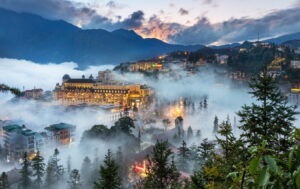
Leave a Reply Cancel reply
Your email address will not be published. Required fields are marked *
Save my name, email, and website in this browser for the next time I comment.
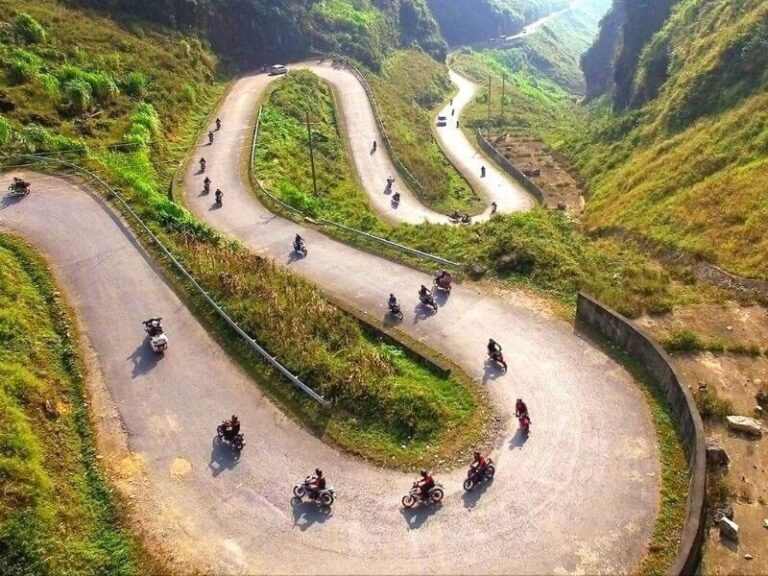
LILY'S TRAVEL
Information.
- Address in Vietnam: 20 Ngo Huyen, Hoan Kiem District, Hanoi city, Vietnam
- Address in Vietnam: 16A Ly Nam De st, Hoan Kiem District, Hanoi city, Vietnam
- Address in Taiwan: Xinbei City, Xinchuang District , Minanxi Street, 75 lane 1st floor
- Tel/WhatsApp/Viber: +84931152368
- Line/WhatsApp: +84949094727 (中文服务热线)
- Email (Normally reply in 2 hours): [email protected]
- B2B Email: [email protected]
- Work Time Mo-Sun: 7:30 - 21:00
Destinations
- Northern Vietnam
- Central Vietnam
- Southern Vietnam
Follow us on social
Scan qr code to contact via whatsapp.

Find us on map
Let us help you organise your dream trip to vietnam.
Reimagining tourism: How Vietnam can accelerate travel recovery
This article is part of the ongoing Future of Vietnam series, which explores key topics that will shape the country’s future growth. Separate articles discuss Vietnam's post-COVID-19 economic recovery , its longer-term growth aspirations and ways for ecosystem players to win in Vietnam .
Download the Vietnamese translation (PDF – 2.4MB).
For most players in the travel industry , the idea of vacationers lounging on a beach thousands of miles from home or sailing the high seas seems like a distant memory. Globally, countries experienced a decline of 35 to 48 percent in tourism expenditures last year compared with 2019 . Vietnam, with its ten-month international border closure, has not been exempted.
Tourism contributes a significant share to Vietnam’s GDP, and the economy has relied on domestic travel to buoy the sector. Local tourism resumed shortly after the country ended its relatively brief lockdown—just in time for 2020’s summer holiday season. Our analysis shows that demand for domestic travel in Vietnam will continue to grow and will recover relatively fast because of growing domestic spending: vacationers who cannot yet travel abroad are redirecting their money locally, at a higher level than in 2019.
As Vietnam’s travel sector continues to evolve and as prospects of international travel become increasingly feasible with vaccination rollouts, travel and tourism players have to adapt to survive. This article gives an overview of the state of Vietnam’s tourism sector, looks ahead at how the industry is likely to recover, and maps out a way forward for the country’s travel and tourism companies.
The state of travel in Vietnam today: Staying afloat
Vietnam’s tourism sector relies heavily on international travel, which plunged last year. International flights dropped 80 percent in October 2020 from the same time period a year earlier (Exhibit 1). Hotels, in turn, filled only 30 percent of their rooms.
The sharp drop in foreign travelers has had an outsize impact on tourism expenditures—and Vietnam’s overall economy—because they spend significantly more than their local counterparts. In 2019, a year in which the tourism industry accounted for 12 percent of the country’s GDP, 1 “Total revenue from tourists in the period of 2008–2019,” Vietnam’s Ministry of Culture, Sports and Tourism, May 29, 2020, vietnamtourism.gov.vn. international travelers made up only 17 percent of overall tourists in Vietnam, yet accounted for more than half of all tourism spending—averaging $673 per traveler compared with $61 spent on average by domestic travelers (Exhibit 2). The tourism sector created 660,000 jobs between 2014 and 2019, 2 Global Economic Impact & Trends 2020 , World Travel and Tourism Council (WTTC), June 2020, wttc.org. and this sharp expenditure dive has also stunted the country’s food and beverage and retail industries.
As a return to pre-COVID-19 levels of international tourism may be far off, the travel sector’s short-term revival could depend on local tourism. In 2019, Vietnamese tourists spent $15.5 billion, of which $5.9 billion flowed overseas. The majority of tourists are unable to leave the country, so they are looking domestically to scratch their travel itch. Travel companies should therefore rise to the occasion and capture value from this opportunity.
Looking ahead: Vietnam’s tourism industry can recover by 2024 if it implements a zero-case-first approach
Even with favorable tailwinds driven by domestic tourism, Vietnam will be dependent on international markets, which represent around $12 billion in spending. The majority of Vietnam’s international tourists come from Asian countries, with those from China, Japan, South Korea, and Taiwan accounting for around 80 percent of Vietnam’s foreign tourism spending. Vietnam’s strong economic ties with these countries could lead to a relatively fast tourism-industry recovery compared with other key tourist destinations in Europe and North America (Exhibit 3).
To make the most of these ties, Vietnam has been pursuing a zero-case-first strategy since the start of the pandemic. This strategy is associated with markets in which COVID-19 transmission rates are low and—as a result—traveler confidence, at least on a domestic level, is relatively high.
By implementing the zero-case-first approach and taking into account Vietnam’s currently resilient local economy and proactive government campaigns, Vietnam’s tourism sector could recover to precrisis levels in 2024 (Exhibit 4).
Under this scenario, three paradigms are changing the way travel companies plan for Vietnam’s recovery:
- Shifts in tourism behavior could result in high-end domestic trips. With borders remaining closed for outbound travel, an increase in domestic luxury trips could occur as travelers reallocate their budgets. Of course, as noted above, the spending power of domestic tourists is weaker than that of foreign tourists, so this type of travel cannot completely fill the gap created by the lack of international travelers.
- Price cuts could be used to stimulate demand but aren’t sustainable for the long term. Many travel companies offered discounts in the immediate aftermath of the crisis in order to compete for business and stimulate demand. This may result in price dilution, especially for hotels across the country, and thus may not be a sustainable strategy for the long term.
- International travel bubbles have to be explored with caution. Currently, Vietnam has strict travel restrictions in place and allows only a select number of weekly international flights for travel by experts and diplomats, who are subject to mandatory quarantine on arrival. Vietnam needs to protect the status quo of having near-zero rates of COVID-19 cases and cannot risk opening its borders freely until herd immunity is reached, most likely through mass vaccinations. Thus, it could take some time before inbound foreign tourism returns at scale. In the meantime, there might be some opportunity to pursue more gradual and less risky measures. For instance, there have been discussions about establishing travel bubbles to allow travel between other countries with zero or near-zero transmissions, such as Australia, China, and Singapore. Travel companies should be prepared for two scenarios: one in which travel bubbles open up for inflows of international tourists, and the other in which domestic tourism remains the main driver of value.
Six actions to jump-start Vietnam’s tourism recovery
As travel companies reimagine their pathways to recovery, it is important to address the risks and anxieties related to COVID-19, while also solving for the pain points and trends that existed before the crisis. Below are six steps that Vietnam, and other countries operating in a zero-case-first market approach, can take as they embark on this road to recovery.
Focus on domestic travelers
Local demand can be revitalized by focusing on emerging destinations with the joint cooperation of local governments, online travel agencies, attractions, hotels, and airlines. Outdoor tourism that involves sunshine, beaches, mountains, and nature were among the top choices for Vietnamese travelers after the lockdown was lifted in mid-May last year, and airports at the two big travel hubs of Ho Chi Minh City and Hanoi were busy. To further tap into the domestic opportunity, operators will have to focus on affordability while striving to maintain high-quality products and experience.
Consider new pricing models to rebuild demand
Rebuilding demand and propelling volume, through discounts and presales, are key tactics during the early stages of recovery, especially for high-end operators that will not be able to tap into international demand for some time. However, the crisis has also forced operators to set aside their existing commercial playbooks. Historical booking patterns and trends normally used as key reference points for price optimization and yield management may no longer be as relevant. In this context of depleted demand, the paradox is that while price cuts are necessary, they could also be dangerous. In this light, companies can also explore opportunities to bundle products—which can offer upselling and cross-selling opportunities—as well as diversify their revenue stream and enhance premium product and pricing.
Five-star hotels in Hanoi and Ho Chi Minh City, for example, can provide full “staycation” packages for families, complete with home pickup by luxury car, a suite, and discounts on food and drinks. Tourism companies and hotels could work together to provide end-to-end travel packages that include flights, train tickets, limousine and bus services, and accommodations. Other companies could capitalize on booming demand for luxury and outdoor activities, such as yacht tours or farm stays.
As demand grows and confidence increases, operators will naturally be inclined to revert to a more dynamic pricing model, based on indicators such as hotel occupancy and domestic-air-travel passenger numbers—and how they grow toward achieving prepandemic levels. That will then give companies an opportunity to refine optimal pricing mechanisms, especially around key domestic holidays such as Tet (the Vietnamese New Year). This is not something that all countries are getting right. Many hotels in Germany , for example, missed pricing or revenue-management opportunities when demand for summer travel reemerged last year.
In the future, dynamic pricing models and the revenue-management function will need to be revisited, based on three new axioms: traveler segments will not be the same for a long period of time and will be a stronger and more diverse domestic mix; demand elasticities will be different, with health concerns playing a more influential role in decision making; and demand will remain very volatile, as observed in Vietnam during the Tet holiday this year, when a small spike in COVID-19 cases led to a big drop in bookings and travel demand throughout the country.
The time for digital (really) is now
Even before the pandemic, consumer reliance on digital for travel-related bookings had been growing. In 2018, online travel activity made up 19 percent of the total tours and activity market size. The pandemic has made the adoption of mobile and digital tools even more essential. Strategic collaborations—such as online travel agencies providing ticket-booking services via instant messaging and social-media platforms—could offer an opportunity for increased market penetration.
At the same time, travel companies should revamp their online touchpoints and experiences to improve customer experience. This is already starting to happen: the website of the Vietnam National Administration of Tourism (VNAT) has virtual tours for its most popular destinations, and some tour guides have organized real-time online tours for international customers. In addition, a commercial titled, “Why not Vietnam” aired on CNN in October 2020 to drive international traffic to the website, and on the domestic level, a reality show with the same name offered up weekly online travel photo contests to engage viewers.
Furthermore, companies could also think about placing digital tools in new places within the customer journey. They must recognize that factors promoting customer loyalty may have changed; near-term uncertainty may mean, for example, that the ability to cancel a reservation matters more than brand choice or price. Taking this into account, companies could empower customers to build their own itineraries using connected digital tools that make it easier for them to modify or cancel their plans. Solutions and policies that provide choice and control will help build the long-term trust and confidence necessary to get travelers back on the road and in the air.
Lay the groundwork for inbound demand
To capture early outbound demand, travel players could benefit from tracking the development of travel bubbles. This is especially relevant for Vietnam, as the majority of tourists to Vietnam are from nearby regions with strong economic ties and relatively low transmission rates. As stated earlier in this article, our analysis finds that nearby countries such as China, Malaysia, and Thailand could provide inbound expenditure growth of at least the CAGR between 2020 and 2025 (Exhibit 3).
In this context, travel companies will need to be flexible and nimble to capture early international-travel demand—and should be prepared to implement strict health and safety protocols that fulfill the stipulations of both domestic and destination security policies. That said, betting on travel bubbles cannot in itself be a strategy in the short term, as international arrivals are expected to remain low in 2021, and foreign demand will not return to 2019 levels before 2025.
Reinvent the traveler’s experience beyond accommodation—and ‘redistribute’ tourism investments toward unconventional and more diverse destinations
Globally, travelers are personalizing their trips through destination adventures. Tourism spending is shifting away from accommodation to activities—a trend that holds true for Vietnam. According to a report released by the General Statistics Office of Vietnam, Vietnamese travelers have allocated smaller budgets for accommodation in the past few years, accounting for approximately 15 percent of travel expenditures in 2019, down from 23 percent in 2011.
Instead of spending on luxury accommodations, travelers are saving money for destination experiences. Many tourists are booking activities before they travel, which suggests the in-destination experience has a bigger impact in the overall tourist decision-making process. Many adventure activities, such as cave discovery, highland hiking, isolated island stays, water sports, and food festivals have become the main reason for travelers to visit a destination in the first place.
In Vietnam, examples of efforts aimed at developing a distinct experience—rather than specific infrastructures—have emerged recently, such as the development of Ho Chi Minh City’s “night economy,” and diversified marketing from the Binh Duong province to spotlight its festivals as main attractions. VNAT is also participating in this effort, specifically making farm stays in mountainous areas an axis for the development of more indigenous experiences. Meanwhile, other regions are also marketing unique experiences: Dalat is promoting its hiking and camping attractions, Mui Ne its golf and water sports, and Ninh Binh and Phong Nha-Ke Bang their nature activities.
Local operators, who often lag behind big travel companies in terms of resources but are more agile in organizing personalized activities, can leverage increasingly popular online players to connect directly with customers and provide these options. International online travel agencies such as TripAdvisor, as well as closer-to-home players such as Traveloka and Triip.me, have been building dedicated “experience” platforms to inspire users and allow them to choose the most suitable tours by providing a range of attractive options for destination adventures. Tourism companies could shift their efforts away from building resorts and selling sightseeing tickets to designing exceptional activities and leverage these platforms to take advantage of travel-experience trends.
Reimagine government’s role in tourism
In most countries, reinventing the tourism industry will involve industry professionals working in concert with industry groups and governments . Vietnamese tourism administrators have an exciting opportunity to reimagine their roles and lead the sector through recovery and beyond—first, by boosting domestic demand to make up for lost income from international travelers, and second, by promoting Vietnam’s image as a country that has managed the pandemic fairly well. To do this, three things should occur:
- In the short term, government and industry associations need to ensure the survival of operators. The government can experiment with new and sustainable financing options such as hotel revenue pooling, in which a subset of hotels operating at higher occupancy rates share revenue with others. This would allow hotels to optimize variable costs and reduce the need for government stimulus plans.
- In the midterm, government-backed digital and analytic transformation is necessary, especially to level the playing field for small and medium-sized enterprises, which made up more than 50 percent of travel suppliers in 2018. Encouraging and helping local operators adjust to the demand for online travel services is critical to help them stay competitive. Government can play a vital role as a matchmaker, connecting suppliers to distributors and intermediaries to create packages attractive to a specific segment of tourists, and then use tourist engagement to provide further analytical insights to travel intermediaries. This ability allows online travel agents to diversify their offerings by providing more experiences off the beaten track. The Singapore Tourism Analytics Network (STAN) and the Tourism Exchange Australia (TXA) platforms are examples of how this mechanism can work at scale.
- Finally, Vietnam has a solid opportunity to boost its stature as an adventure destination. Governments and industry associations can leverage the overall momentum of the country, as well as the expected return of international travel, to boost demand. Our analysis finds that in the Asia–Pacific region, adventure remains the leading travel trend searched by travelers, so Vietnam is well positioned to leverage this trend. Similarly, investments are also expected to shift away from mega development projects, such as Phu Quoc and Nha Trang, toward small- and medium-scale projects and cities that offer specialized offerings like sports tourism, medical tourism, and even agricultural tourism.
Travel players in Vietnam can seek to accelerate the industry’s recovery by capturing emerging growth opportunities domestically as they gradually rebuild international travelers’ confidence. Our six steps should set the stakeholders in Vietnam’s travel industry in the right direction and help them thrive in the tourism economy of the future .
Margaux Constantin is a partner in McKinsey’s Dubai office; Matthieu Francois is an associate partner in the Ho Chi Minh City office, where Thao Le is a consultant.
The authors wish to thank Celine Birkl, Bruce Delteil, and Alex Le for their contributions to the article.
Explore a career with us
Related articles.

Indonesia’s Traveloka finds strength in local markets amid the pandemic
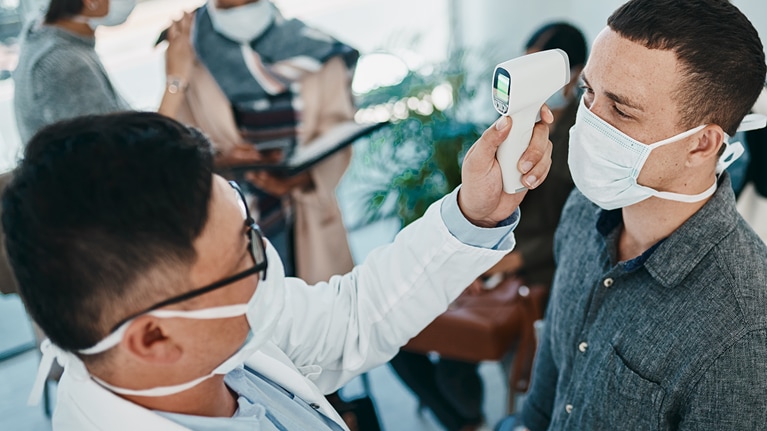
COVID-19 tourism spend recovery in numbers
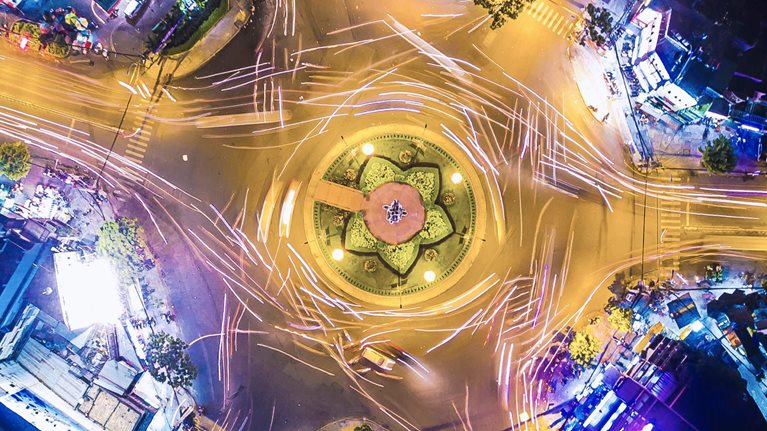
Six golden rules for ecosystem players to win in Vietnam
Vietnam tips: a first-timer's guide

Aug 12, 2019 • 6 min read
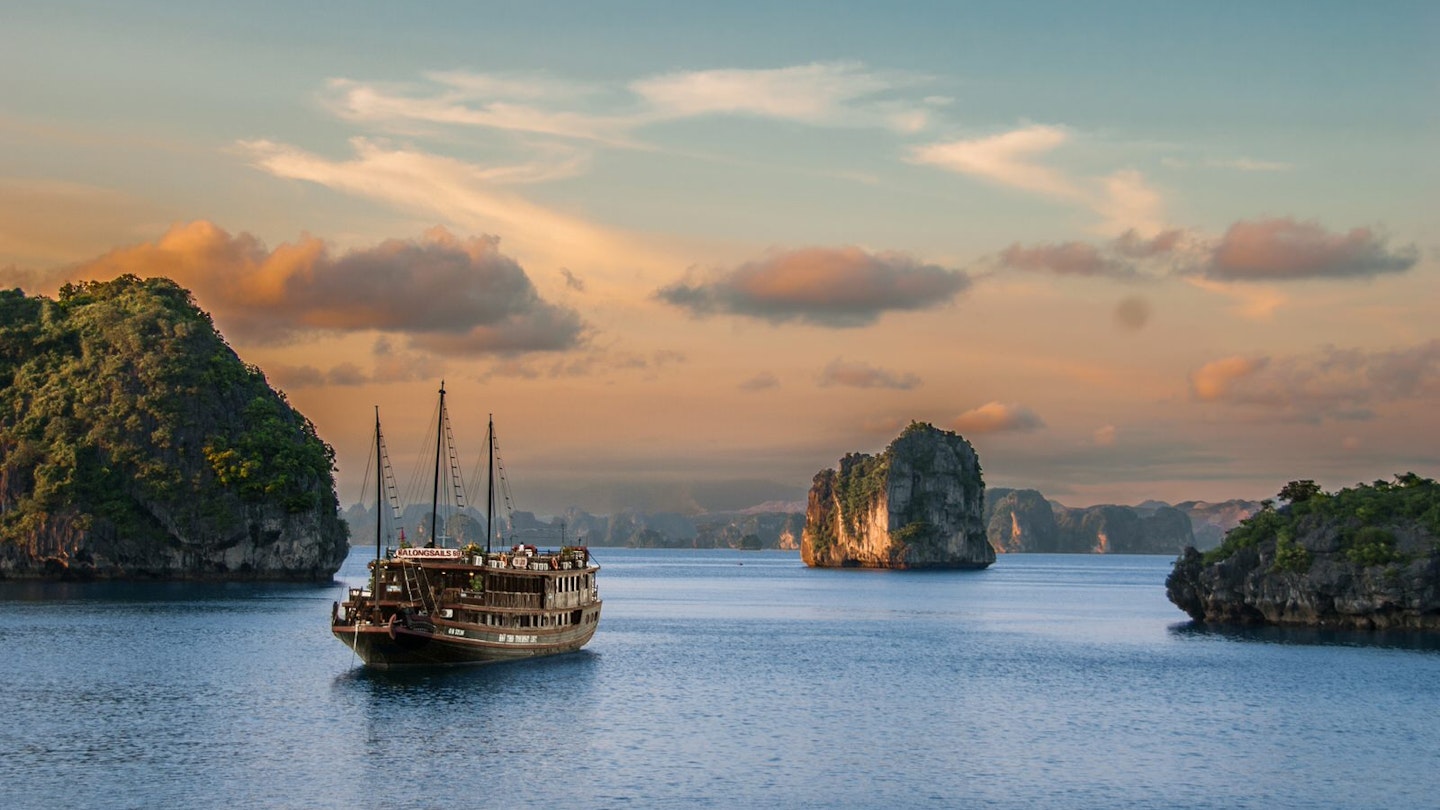
Halong Bay is a World Heritage Sight and a highlight for many visitors to Vietnam © ©César Asensio / 500px
There's a lot to love about travelling in Vietnam , which stretches from the soaring mountains and fascinating ethnic groups of the north to the endless rice paddies and vibrant waterways of the Mekong Delta in the south, with more than 3000km of glorious coastline in between.
Throw in a good transport infrastructure of buses, trains and flights and an abundance of cheap but excellent street food and it's no surprise Vietnam graces countless bucket lists. But, like any country, it has its challenges, and some visitors come home with tales of scams, hectic roads and pushy vendors. Following these top tips will help you avoid the major pitfalls, and ensure you come away from your first visit to Vietnam with happy memories, as well as your souvenir conical hat.
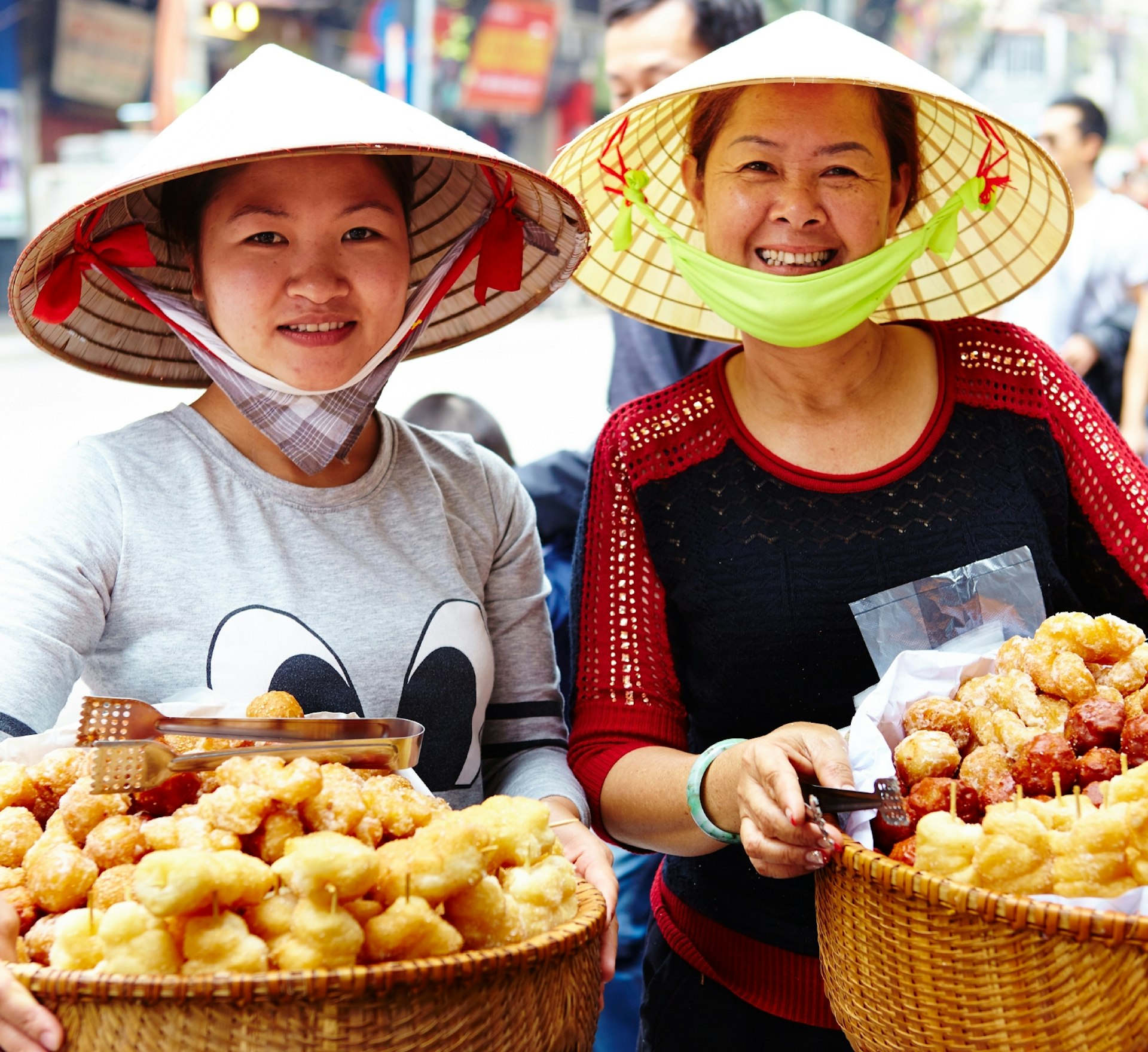
Vietnam 's long exposure to foreigners means that many local residents aren’t as overtly curious about visitors as some of their counterparts in Cambodia , Myanmar and Laos . Also, because most Vietnamese are not confident with spoken English despite learning it in school, people tend to ignore lost-looking foreigners unless you actually ask for help. But be assured that the Vietnamese really are friendly people. If you ask someone a question with a smile and in slow, clear English, you’ll almost certainly have it answered and the smile returned. Simple phrases such as xin chào ('hello', pronounced 'seen chow') and cám ơn ('thank you', pronounced 'kaam uhn') go a long way.
Get connected
While most hotels , cafes and restaurants have wi-fi, you can easily buy a SIM card and get connected to the internet for as little as US$3. Vietnamese street names are notoriously long (most are named after people), so digital maps trump paper ones for many travellers. You’ll also find having a local phone number handy for meeting up with tour guides and making last-minute bookings on the road. SIM cards are widely sold in corner shops and are easy to top up. Once you have a card, the process to register for internet can be tricky, so ask the shopkeeper or your hotel to do it for you. Lonely Planet's Guides app covers Hanoi and Ho Chi Minh City .

Know your dong from your dollar
The Vietnamese dong is the currency of Vietnam and comes in denominations ranging from 200 to 500,000 (about US$22 at the time of writing). While it’s thrilling to become a Vietnamese millionaire, dealing with that many zeros can become frustrating, especially since some of the currency is very similar in colour. For example, the 10,000d note and the 200,000d note are both tan while the 20,000d and 500,000d notes are both blue. It’s very easy to hand over the wrong bill to a taxi driver while in a rush. Spend a minute in your room before going out to sort your bills to avoid overpaying. Even if you do end up overpaying a small amount for certain things, take it in stride. In the grand scheme of things, it’ll likely not be worth the aggravation.
While international credit and debit cards are accepted at most larger hotels, restaurants and travel agencies (sometimes with an added fee), cash is still king in Vietnam for day-to-day transactions. ATMs are widely available, and currency can be exchanged at banks (and some gold shops, although this practice is frowned upon by the government).
Note that the official system of separate prices for Vietnamese and foreigners – which applied to everything from train tickets to entrance fees – is a thing of the past.
Be wary of taxi scams
For many, motorcycle taxis are the best way see the thronging streets of Hanoi and Ho Chi Minh City. However, scams can happen, and your best protection is a decent knowledge of where you are going and points along the way. Always agree on a price beforehand and be prepared to be quoted a higher price than the locals. For regular taxis, stick to the two major companies of Mai Linh and Vinasun (both have apps). Smaller, independent taxis are known for fast meters and aggressive drivers. If you’re in one of the larger cities, ride-sharing apps like Uber and Grab are good, offering both car and motorcycle taxis. Sometimes the driver will call to confirm, so having a Vietnamese-speaking friend nearby will come in handy.

Know your transport options
Overnight buses are a good way to cover long distances and save on accommodation costs. However, the layback seats don’t offer much legroom, so tallish passengers (anyone over 1.6m) will find it impossible to stretch out fully. While the top bunk offers slightly more privacy, they can be right at the height of street lights. Sleep masks, ear plugs and noise-cancelling headphones (especially if the bus is playing music or movies) are recommended.
That said, sometimes you can pay a few more dollars and fly – the more convenient but less sustainable option . Vietnam has several budget airlines, which offer cheap fares but are notorious for being late and strictly enforcing carry-on limits. The national carrier, Vietnam Airlines, has better service and comparable pricing if booked in advance.
More comfortable than buses and cheaper than flights, train travel is another option for getting around Vietnam. A railway line spans the length of the country, following the coastline from HCMC all the way to Hanoi and beyond. It's a must for rail enthusiasts, with the ride considered amongst the most amazing train journeys in the world .
Be aware of your surroundings
Violent crime is extremely rare in Vietnam, and firearms are heavily regulated. But snatch-and-grabs and, to a lesser extent, pickpocketing, do happen. It pays to be vigilant. Use your phone and other electronics sparingly when outside (even while sitting at a sidewalk cafe or on the back of a motorbike). Leave your passport at the hotel; there’s rarely a reason to have the original on you.
Also, while Vietnam has some of the cheapest beer in the world, be careful about overdoing it. Inebriated tourists wandering back to their hotel in the morning hours when there is little traffic around can be seen as easy targets. If you come home late at night, go with a friend and splurge the extra dollar or two on an automobile taxi instead of a motorcycle taxi.

Be safe on the roads
Traffic in Hanoi and Ho Chi Minh City can seem terrifying at first glance. Just walking across the street during rush hour can feel like an impossible task! But there is method to the madness and, like a school of fish, the traffic will inevitably glide around you as long as you keep moving at a slow and steady pace. If unsure, do as the locals do and raise one hand high to be seen above the sea of helmets.
If you’re looking to drive a motorbike yourself, it’s best to save it for one of the quieter destinations like Hoi An , Dalat or Phu Quoc . Always wear a helmet, and be aware of the exhaust pipe, which has caused many a leg burn. As motorbikes tend to drive closely to each other, keep your feet pointed inwards and think of wearing closed shoes which offer extra protection for your feet.
For more tips on planning a trip to Vietnam, including what to wear and what to book in advance, see our planning tips .
This article was originally published in July 2012 and most recently updated in August 2019.
https://shop.lonelyplanet.com/products/vietnam-travel-guide-14
Explore related stories
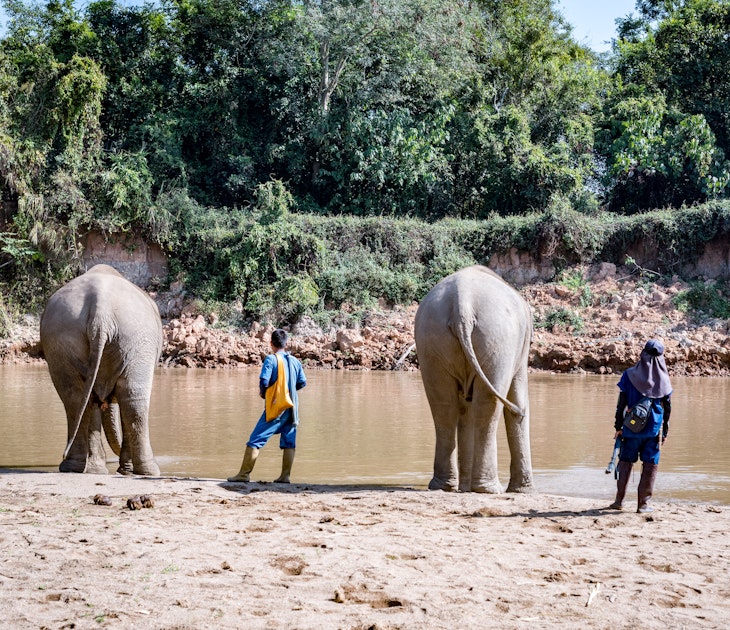
Wildlife & Nature
Apr 25, 2024 • 5 min read
One elephant sanctuary in Northern Thailand is providing support for mahouts as well as their elephants.

Feb 29, 2024 • 12 min read

Feb 19, 2024 • 7 min read
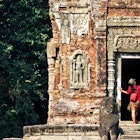
Jan 31, 2024 • 6 min read
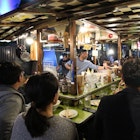
Jan 3, 2024 • 7 min read

Jan 3, 2024 • 5 min read

Jan 2, 2024 • 11 min read

Dec 27, 2023 • 8 min read
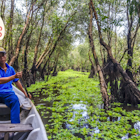
Nov 17, 2023 • 5 min read

Nov 16, 2023 • 7 min read
11 Reasons Why Vietnam is Worth Visiting at Least Once

Vietnam is a country of opposites and contradictions. A melting pot of influences where the ancient sits side by side with the ultra-modern. A place where tumultuous history is not hidden or glossed over but displayed honestly for visitors to see. A country unlike any other, Vietnam is definitely worth visiting.
A trip to Vietnam is an opportunity to experience the vibrant culture, sublime natural beauty, unique sights, strange flavors, and more adventures than you could possibly have in one trip.
With bustling cities, 3000 km of coastline, 8 UNESCO world heritage sites , and some of the best food in the world, we’ll be surprised if you can’t find something to love about Vietnam. Here’s our list of the 11 top reasons why Vietnam is worth visiting at least once.
Table of Contents

Vietnam is a country steeped in history with turbulent events in both its recent and ancient past. Lingering relics of the last royal dynasty rub shoulders with remnants of French Colonial rule which in turn are scarred by the effects of the Vietnam war. Layers of complex history make up the fabric of Vietnam, and a trip to the country is a chance to experience its richness.
Tour the prison built during French rule to house Vietnamese rebels on the remote Con Dao Islands. Wander the desolate landscape around the abandoned ruins of the My Son Cham Hindu temples. Take a visit to UNESCO protected Hue, to see the country’s ancient capital and seat of the last Vietnamese dynasty. Wander through the once magnificent Imperial City now damaged by the fighting of modern wars.
Visit The War Remnants Museum in Ho Chi Minh City for an illuminating Vietnamese perspective of the Vietnam war. For a sobering account of the gruesome treatment of prisoners of war, visit Hoa Lo Prison nicknamed The Hanoi Hilton by the American soldiers imprisoned there . Squeeze through the Cu Chi Tunnels for an incredible, claustrophobic glimpse of the resilience of the Viet Cong soldiers who used them.
For more nuanced insight into this richly layered country, look out for the street sellers flogging bootleg books. They have stacks of autobiographies and literature about Vietnam’s history and its people.

Cosmopolitan, bustling, and bursting with life, Ho Chi Minh City is an absolute must-see for any visitor to Vietnam. With its eclectic mix of all things old and new, its mixture of cultures, and frenetic pace, Ho Chi Minh is a wild introduction to all things Vietnamese . It’s worth visiting just to try and cross one of the dizzying, scooter-filled main roads. Pro tip: Check for large vehicles like buses and trucks, then walk calmly across. Don’t run and don’t stop for scooters! They are more used to this than you and will dodge easily around you.
If you like your cities a little calmer but no less impressive, head to Hanoi in the North and soak up its timeless charm. Steeped in history, the country’s capital cannot fail to impress with its beautiful tree-lined streets filled with French colonial buildings alongside temples and pagodas. Visit the abundance of museums, galleries, cultural sites, and attractions. Save some energy for when the sun goes down. It may not get as wild as Ho Chi Minh but Hanoi has its fair share of nightlife.
If you want quieter still, visit ancient, well-preserved Hoi An with its UNESCO heritage status. Glimpse what life looked like in the 15th century, trading port as you wander the tiny pedestrian streets and canals. Stick around after dark to see the town lit up by colorful lanterns instead of street lights.
Find a city for every mood in Vietnam. Riverside Hue with its imperial history, remote Dalat for a romantic getaway. Coastal Da Nang combines city life with a beach resort. Whatever your city vibe, Vietnam has got you covered.
Beaches and Islands

Vietnam doesn’t have a big reputation as a beach destination and it is often unfairly overlooked in favor of Thailand. But with 3000 km of coastline and over forty islands to choose from, travelers are beginning to wise up to the fact that Vietnam is well worth visiting for its beaches.
You don’t even need to travel far to sample them. Two of the best ones are attached to major cities! Both Nha Trang and Da Nang cities have beautiful, endless stretches of beach that run alongside their cities’ promenades and offer every amenity you could wish for. Travel a little way along the coast from either city to discover quieter, less famous coves.
For an island getaway, head to Hoi An and visit the beautiful Cua Dai beach (worth a visit in its own right) and from there take a short boat trip to the Cham Islands. These eight islands boast sparkling azure waters, white sand beaches, an abundance of local seafood, and accommodation options from backpacker hostels to romantic resorts.
Or head south and sail over to the Con Dao islands. These remote islands were once used as a prison. But these days they’re becoming known for their isolated beauty and as a breeding ground for sea turtles.

Is there any better reason to visit Vietnam than the food? We don’t think so. Deceptively simple but packed with complex flavors, Vietnamese food is simply some of the best in the world. Distinctly different from all other cuisines due to the fusion of influences drawn from France, China, and South Asia. Fresh, healthy, delicious, and with a tiny price tag, it’s worth visiting Vietnam for the food alone.
For an example of the simple complexity of Vietnamese food look no further than the always abundant Pho . This clear broth with noodles, meat, and herbs, looks pretty plain but one sip will teach you just how many layers of flavor the Vietnamese can pack into their food. Every region and restaurant swears by a slightly different broth recipe , meaning that no two bowls of pho are ever quite the same. All the more reason to eat it over and over again!
Leave room for dessert though. With cakes, jellies, sweet soups, sticky rice, and donuts on offer Vietnam leads South East Asia on the dessert front.

As one of the world’s biggest Coffee exporters, Vietnam takes its beans seriously. You’ll find the French influence at work here again in the cafe culture that pervades the country.
The majority of coffee drunk in Vietnam is Robusta, a bean known for its high caffeine content so don’t be surprised if you get the jitters after a few cups! It’s brewed individually, your coffee will probably come with a single-cup filter placed on top. Take your time to sit and relax as the water is allowed to drip slowly through the grains, gaining the full flavor. Robusta can be bitter, so is often served with sweetened condensed milk to lighten the flavor. The result is a short, strong, sweet drink with an energy kick guaranteed to start your day right.
Try the iced version Ca Phe Da later in the day when the temperature starts rising. And if you’re feeling adventurous, try Ca Phe Trung or Vietnamese Egg Coffee. Egg yolk is beaten into a light sweet foam with condensed milk and served atop hot or iced coffee. It might sound like a recipe for disaster but the result is rich, creamy, and unlike anything you’ve ever had before. It should absolutely be on your to-taste list!
Architecture

As with its history, Vietnam’s architectural wonders come from all its different eras. Visit the old in Hue where you can see how the Imperial Palace was built to Feng Shui principles, complementing the natural landscape around it. Look out for the seven-story Thien Mu Pagoda and the Tomb of Khai Dinh built with a skillful blend of European and Vietnamese styles. Visit the ancient Japanese Covered bridge in Hoi An and the elegant pagodas of Vinh Trang temple.
In Hanoi enjoy the juxtaposition of old Vietnamese shopfronts pressed up against regal French Colonial creations like the Opera House and the Neo-Gothic wonder that is Saint Joseph’s Cathedral. Then, in Ho Chi Minh enjoy how similar colonial buildings like Saigon City Hall, the Post Office, and Notre Dame Cathedral, compare next to ultra-modern steel and glass skyscrapers like the Bitexco Financial Tower.
Spanning the hills near Da Nang, you’ll find the eerily splendid Golden Hands Bridge. And in the city, you’ll find the modern wonder of the neon-lit Dragon Bridge, proof that as Vietnam evolves it continues to create new monuments to its culture, people, and imagination.
Natural Scenery

It’s not all man-made charms, Vietnam has far more than its fair share of natural wonders and they’re all worth visiting. There are stunning beaches and remote islands aplenty but it’s the incredible scenery of Ha Long Bay that most tourists crave to see. Boat tours can be taken around this bay famous for its stunning green waters and the many towers of limestone that loom out of the water.
Elsewhere, visit the world’s largest cave, Hang Son Doong in the Phong Nha-Ke Bang National Park. Or take a stroll around the base of the imposing Marble Mountains. Visit Sapa in the North to hike through terraced paddy fields above misty valleys. Visit remote hill tribes and climb the highest mountain in Vietnam, Fansipan or ‘the roof of Indochina.
Take an exhilarating motorbike tour along the Hai Van Pass, the steepest pass in Central Vietnam. Marvel at the views and rolling sea mists that make this journey one of the best coastal routes in the world. Visit the tiny southern fishing village of Mui Ne to explore the surreally beautiful sand dune landscape nearby.
And don’t leave without seeing the Mekong Delta. A unique ecosystem of rivers, tributaries, swampland, and islets that have spawned their own culture and lifestyle. The delta is best explored by boat for a chance to see old Kymer towns and pagodas, fishing villages, floating markets, paddy fields, protected wetlands, and wildlife.

This natural abundance is not just beautiful to look at but has created an incredible adventure playground. Any adrenaline sport you can think of can be done somewhere in this diverse and beautiful country.
Snorkel or scuba dive with turtles off the Con Dao islands. Surf off the beaches of Da Nang. Kayak around stunning Ha Long Bay or down The Perfume River. Hike, slide, or 4-wheel drive your way down massive sand dunes or rise above them in a hot air balloon. Climb up to the very tops of the forests before zip-lining back down.
Rock climbing, mountain biking, river rafting, windsurfing, sky diving…. if you’re a thrill-seeker, Vietnam is definitely worth visiting for its abundance of adrenaline-fueled activities.

One of the biggest draws of Vietnam has long been its low prices. Although South East Asia is no longer as cheap as it once was, Vietnam lags behind neighboring Thailand when it comes to inflation. A holiday here can still be done without breaking or even bending the bank.
Budget accommodation is widely available, and budget transport is likewise. Internal flights are inexpensive and the rivalry between bus and train companies keeps public transport reasonable. Book overnight trains and buses if you’re traveling long distances and save yourself a night’s accommodation.
The cost of eating and drinking in Vietnam is as low as you wish to make it. For a cheap night out take part in the uniquely Vietnamese tradition of Bia Hoi . Most common in the north, Bia Hoi happens each afternoon from around 4 pm. Locals and tourists alike gather at popup pavement bars to sit on tiny plastic stools, drink extremely cheap, just-brewed beer, and chat about their days. It’s a very pleasant way to spend an evening and this being Vietnam, food is never far away. Vietnamese street food is not only delicious but served at a fraction of restaurant prices. Enjoy a few street beers and roadside meals to make your Vietnamese experience not only fun, authentic, and tasty but extremely easy on the wallet.

Vietnam has long embraced tourism as necessary to its economy and consequently welcomes visitors with open arms. The people are friendly, helpful, and happy to chat with tourists. The tourist route is well tracked so you’ll find transport and accommodation easily at all the tourist top spots. You’ll also find no shortage of guides willing to advise you on the best trips, attractions, and adventures, and plenty of travel agents to help you book onward travel. Vietnam is ideally located to be a base for further adventures. Trips from Vietnam to Thailand, Laos, Cambodia, and China are very common and easy to book.
English is widely spoken especially in touristy areas by tour guides, travel agents, and people working in restaurants and hotels. Any attempt to speak Vietnamese is always appreciated however so don’t be afraid to have a go!

Part of what makes Vietnam so worth visiting is the fact that there is something for everyone. Bustling cities, beautiful beaches, remote villages, mountains, jungles, rivers, and resorts. It is geographically diverse in every way possible and from north to south of this long thin country no two things stay the same. Climate, landscapes, recipes, dialects, influences, and even caffeine habits change from one end of the country to the other. Explore the entire country to feel like you’ve seen many different lands.
Or find the one spot that’s perfect for you. Whether you want to visit ruins and tombs or lie on a beach and sip cocktails. If you’re an urban explorer with a penchant for nightlife, or a mountain climber craving remote peaks. Vietnam has got the location for you. Foodies, shoppers, romantics, adventurers, sunbathers, cafe dawdlers, party animals, history buffs, and culture hounds will all find something to satisfy them in this amazingly diverse country.
Is Vietnam expensive to visit?
No, Vietnam is a budget-friendly country. There is a range of shoestring accommodation and travel options to be had and food and drink costs are very low.
What is so special about Vietnam?
Everything! The food, the people, the history, the climate, the culture, the natural beauty! Vietnam is full of wonders and definitely worth visiting.
Is Vietnam friendly to foreigners?
Yes, Vietnamese people are friendly and welcoming and the country fully embraces tourism. It’s a safe country with few dangers to worry about. So long as you use your common sense and don’t take any risks that you wouldn’t take in your own country, you should have nothing to worry about.
Reece is the creator and editor of Travel Snippet. He has visited more than 38 countries over a 10-year period. His travels have taken him through the majestic mountains of Italy, into the cities of central Europe, across the islands of Indonesia, and to the beaches of Thailand, where he is currently living. He is passionate about travel and shares his expertise by providing the best travel tips and tricks to help you plan your next adventure.
Related posts

The 5 Most Dangerous Places In Vietnam To Know About
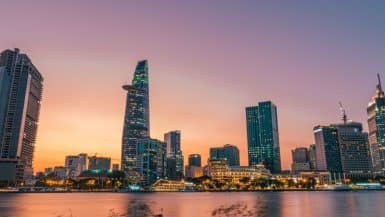
Hanoi Or Ho Chi Minh? Which Vietnamese City Is For You?

Vietnam or Bali: Which Southeast Asian Destination is Better?

- Sign up | Log In -->
- Advertising
- Hotline: 0918.033.133
Vietnamese Culture
- Law & Policy
British tourist addresses rumors about Vietnamese tourism
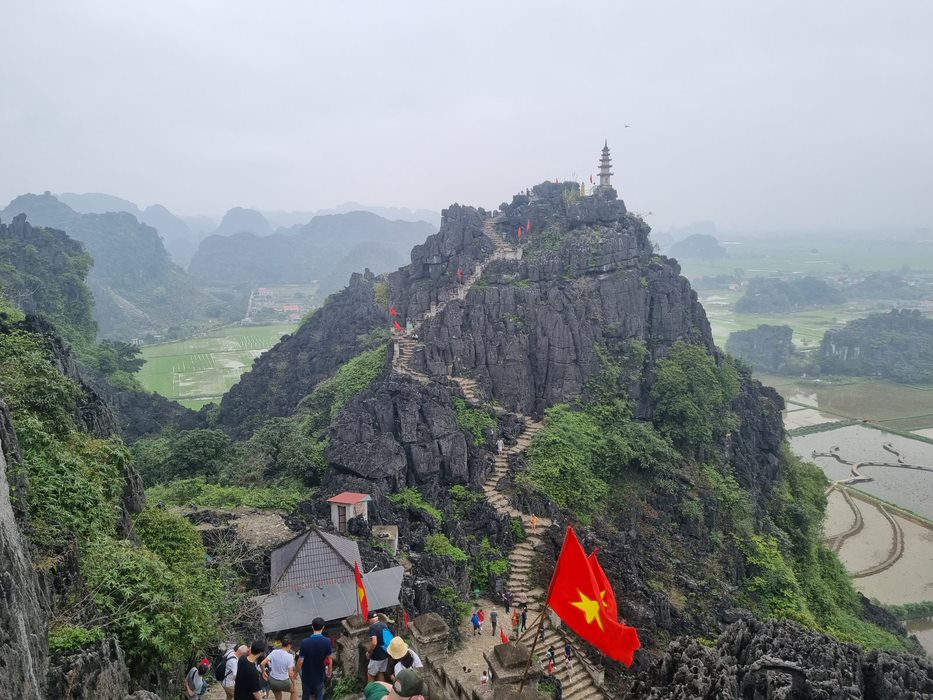
A British tourist recently addressed several rumors about the state of Vietnam's tourism in a social media post, saying he "can't wait to return to see more of it" and everyone should just "ignore the moaners."
Through a post on a Vietnam tourism forum, Calum Dalton discussed scams, pushy sellers, traffic, noise, unfriendly people, and littering in the Southeast Asian country.
'Ignore the moaners'
Dalton, 34, said that he and his partner did not encounter any scams at all, probably because they booked all taxis through Grab and airport transfers through Booking.com.
“We had done our research regarding common scams such as cyclo drivers, people offering free coconuts, and photographs, but cyclo drivers accepted a ‘no thanks’ and didn't [sic] encounter the other two things at all,” he said in the post.
“When walking down the Beer Street in Hanoi and through the Old Town in Hoi An, you will be stopped multiple times, but again a polite no thanks’ and you were left alone.
“[I] didn't find [Vietnam] anywhere near as pushy as some other countries."
Dalton, originally from Newcastle, also addressed traffic noise in Vietnam, saying that it was not as bad as he was expecting.
Specifically, in Ho Chi Minh City, crossing the roads was fairly straightforward and drivers seemed considerate toward pedestrians.
In Hoi An, the main issue was cyclos going through the busy streets in the Ancient Town, but it was not really a big deal, according to Dalton.
The most difficult day for Dalton during his trip was his first day in Hanoi’s Old Quarter, but he and his partner quickly got used to crossing the roads and the scooters were good at anticipating and avoiding pedestrians.
“There is noise from scooters wherever you go in Vietnam, but I didn't find it overwhelming (and I'm easily irritated by noise). I just found it to be part of its charm,” he wrote.
Dalton also discussed “unfriendly people” in Vietnam.
“I don't know where this rumor came from, but we found 99 percent of Vietnamese people to be really welcoming and friendly,” he said, adding that they “would go out of their way to help us and were appreciative and proud to show us their country.”
The last topic Dalton covered was litter.
According to him, Vietnam's litter issues predominantly occur in rural towns and villages.
He specifically recalled watching shopkeepers regularly clean their storefronts.
“I didn't at any point think it was worse than other countries,” he noted.
“Ignore the moaners. It's an amazing country and I can't wait to return to see more of it."
'I had wanted to visit Vietnam for a long time'
Dalton and his husband were in Vietnam from March 14 to 30. It was their first visit to the Southeast Asian country, he told Tuoi Tre News via email.
“I had wanted to visit Vietnam for a long time!” he said.
Before the trip, besides watching YouTube videos about Vietnam and researching what to do in each city, Dalton joined several Vietnam travel groups on Facebook to learn more about the nation.
“I had seen some negative posts from people regarding things such as scams, cleanliness, litter, food hygiene, traffic and noise,” he said.
“I would always want to visit a place myself to make up my own mind, instead of basing my opinion on what I had read online.
“I also read many positive reviews from people who loved their time in Vietnam.
“After our trip, I wanted to post in the travel group to let people know my personal experience, which was amazing, so that people who were planning a visit in the future would not be put off by any negative things they had read, which in my opinion were completely unjustified and exaggerated.”
In addition to discussing common rumors about Vietnam, Dalton also shared his two-week itinerary and specific recommendations of places to eat, where to stay, and what to do.
“A lot of people from all over the world concur that they would recommend visiting Vietnam,” Dalton said.
“There were, however, a couple of negative comments from people who did not have the same experience, or largely enjoyed their visit but felt that certain elements, traffic and litter mainly, could be improved on.”
The three reasons why Dalton loves Vietnam
Dalton also shared his three favorite things about Vietnam.
“First, I'd have to say the people,” he said.
“We found them so welcoming and helpful. They seemed proud of where they were from and keen to show the country at its best to visitors. There seemed to be a genuine warmth towards tourists, and we were also impressed by the local people's resilience and hard-working nature.”
Second, the scenery across the country was stunning. Vietnam is a naturally beautiful country and Dalton and his husband particularly enjoyed Bai Tu Long Bay and the Ninh Binh region.
Finally, Dalton appreciated the country’s diversity and variation.
“We visited Ho Chi Minh City, Hoi An, Ninh Binh, Hanoi, and Bai Tu Long Bay. Each place was very different from the others we visited in terms of culture, architecture, food and things to do and see,” Dalton said.
Like us on Facebook or follow us on Twitter to get the latest news about Vietnam!
Dong Nguyen / Tuoi Tre News

Assistant to Vietnam's top legislator detained for alleged power abuse
He was apprehended to serve an investigation into Thuan An Corporation

2 Vietnamese boys taken home 21 days after getting lost
They got lost and cycled nearly 500km away from their home in Lai Chau Province

Teacher offers free swimming classes for 8 years in Vietnam’s Mekong Delta

Meet the female rock cutters of Vietnam’s Kien Giang

New cave with stunning stalactites found in Vietnam’s Quang Binh
The cave is two kilometers long

Central Committee of Communist Party of Vietnam agrees to resignation of top lawmaker Vuong Dinh Hue
The 13th Party Central Committee convened a meeting in Hanoi on Friday to discuss and give opinions on relieving Hue of all his political roles and ending his public service

Colombia's Chiribiquete park to receive $1 million annually for at least 30 years
Colombia's parks agency, the Frankfurt Zoological Society and German fund Legacy Landscapes on Thursday launched a financial mechanism to fund Chiribiquete National Park with $1 million each year for at least 30 years

Rest stops unavailable along 100km-long expressway in Vietnam’s Mekong Delta
Apart from the absence of rest stops, the Trung Luong-My Thuan Expressway currently has just two lanes and no emergency shoulder

'Extreme' climate blamed for world's worst wine harvest in 62 years
Australia and Italy suffered the worst
LAW & POLICY

Visitors must wear face masks when visiting Nguyen Hue Flower Street 2022
Law enforcement will be on patrol to ensure that everyone follows the rule
- Vietnam’s Phong Nha-Ke Bang National Park prohibits air horns, engine revving
- Vietnam to develop new tourism products for South Korean vacationers
Vietnam’s Phu Quoc Island to welcome 250 South Koreans in November
restaurants start welcoming vaccinated customers in vietnam’s khanh hoa, which demographics are allowed outdoors during da nang’s movement curb, who are allowed to leave home during outdoor travel restrictions in ho chi minh city.

Getaway ideas for upcoming Reunification Day holiday in Vietnam

Tri An Lake a chill-out site for summer in southern Vietnam

Tamarind tea with chili salt: This is how Saigonese cope with summer heat

Iconic 'bánh mì' stand in Saigon: A legacy of 70 years and counting

Ripe rice season a magnet for tourists in Vietnam's Hoi An City
Around mid-year, the roads leading to Hoi An Ancient Town are blanketed with the golden hue of vast ripe paddy fields

Photo of the Day: Shelter among the blossoms
On Son Tra Peninsula in Da Nang City, central Vietnam, the yellow flamboyant trees shelter the endangered red-shanked douc langurs, as the flowers and leaves are the primate’s favorite food

What's it like to trek through sand dunes, forests for sunrise at Vietnam's easternmost cape?
Trekking through sand dunes and forests to catch the first sun ray of the day at Vietnam's easternmost cape is the experience of a lifetime to many travelers

Blooming yellow flamboyant blankets Son Tra Peninsula in Vietnam's Da Nang
The yellow flamboyant trees on Son Tra peninsula begin to blossom at the end of March and last until the end of April

Retired man lives his pink dream in Ho Chi Minh City
Phan Van Chanh, 69, has drawn major attention for his eye-catching pink house in Phu Nhuan District
A teacher at Tra Noc 2 Elementary School in Binh Thuy District, Can Tho City, situated in Vietnam’s Mekong Delta, has consistently run free swimming classes for the past eight years.
Under the blazing sun, Ho Thi Mai Thao from Hon Dat, a district in Kien Giang Province, southern Vietnam, tirelessly splits rocks, easily capable of matching the efforts of any man.
A panoramic view of Ho Chi Minh City’s Thanh Da Peninsula
Recently, a French proposal to transform the Thanh Da peninsula into an ecological area has gained substantial support, with many embracing the concept of a green oasis near the city center.
Informative Vietnam

At a glance
Vietnam, officially the Socialist Republic of Vietnam, is a country in Southeast Asia and the easternmost country on the Indochinese Peninsula.
With a population of 96.2 million, Vietnam was the world’s 15th most populous country in 2019, according to the General Statistics Office of Vietnam.
The country has a total land area of over 331,200 square kilometers.

Vietnam shares land borders with China to the north, and Laos and Cambodia to the west. It shares maritime borders with China and some Southeast Asian countries through the East Vietnam Sea.
The combined length of the country’s land boundaries is 4,639 kilometers, and its coastline is 3,444 kilometers long.
The capital of Vietnam is Hanoi, located in the north, while the most populous city and commercial hub is Ho Chi Minh City in the south.
Vietnam’s unique geography creates a range of weather patterns, with both tropical and temperate zones, according to the Vietnam National Administration of Tourism (VNAT).
While the March-May period offers the best weather countrywide, there is no bad time to visit Vietnam, as there is always some part of the country with clear skies.
Just like the diversity of its landscapes, Vietnam offers a variety of ways to get around. You may favor windswept motorbike rides, flying straight from point to point, or take the overland routes of trains and buses, soaking in the sights along the way.
The official language of the country is Vietnamese, while people also speak ethnic minority languages and English as a foreign language.
The national currency is the Vietnamese dong (VND), which had a reference exchange rate of US$1 = VND23,178 as of September 10, 2020.
Visitors to Vietnam can choose from a wide variety of unique and memorable experiences from amazing cuisine and diverse culture to breathtaking scenery, blissful beaches, and bustling cities.
How to get here
The most common way for international tourists to get to Vietnam is by plane.
The country currently has 22 conveniently-located airports, 11 of which offer international services.
The three main gateways are Noi Bai International Airport in Hanoi, Tan Son Nhat International Airport in Ho Chi Minh City, and Da Nang International Airport in Da Nang — located in northern, southern, and central Vietnam, respectively.
The other eight international airports include Van Don in Quang Ninh Province, Cat Bi in Hai Phong City, Vinh in Nghe An Province, Phu Bai in Thua Thien-Hue Province, Cam Ranh in Khanh Hoa Province, Phu Quoc on Phu Quoc Island off Kien Giang Province, Lien Khuong in Lam Dong Province, and Can Tho in Can Tho City.
Most Asian countries have direct flights to and from Ho Chi Minh City or Hanoi. Travelers can also fly directly into Da Nang from destinations around the region, according to the VNAT.
Travelers from neighboring countries, including China, Laos, and Cambodia, can also enter Vietnam by train or bus. However, they are required to prepare their visa beforehand, as there are no visas on arrival at land crossings within Vietnam.
In addition, a boat trip from Cambodia through the Mekong Delta makes for a scenic entry into southern Vietnam.
Visitors can book such a trip from tour agencies in Phnom Penh and Vietnam.
No matter by which way visitors arrive in Vietnam, they are assured of a unique and unforgettable experience.
When to visit
There is no bad time to visit Vietnam. In a country more than 1,600 kilometers long, with the weather varying considerably from north to south, from a temperate to a tropical climate, Vietnam is a year-round destination.
March-April is typically the best time to visit the entire country, when days are generally pleasant, temperatures are moderate, and rainfall is light.
For different regions of Vietnam, in addition to March-April, September-November is the best time to visit the country’s northern part, while the weather between February and August usually brings travelers pleasant experience in central Vietnam. Travel in southern Vietnam is good at any time although some might find temperatures unbearable from March to May.
Do I need a visa to enter Vietnam?
Can i apply for a visa on arrival, how do i get around in vietnam, what is the weather like in vietnam, are credit cards widely accepted, what are the major festivals in vietnam, are mobile data and wi-fi easily accessible in vietnam.
We've detected unusual activity from your computer network
To continue, please click the box below to let us know you're not a robot.
Why did this happen?
Please make sure your browser supports JavaScript and cookies and that you are not blocking them from loading. For more information you can review our Terms of Service and Cookie Policy .
For inquiries related to this message please contact our support team and provide the reference ID below.

IMAGES
VIDEO
COMMENTS
Starting from 15th August 2023, Vietnam extends e-visa validity to 90 days and unilateral visa exemption will be valid in 45 days! We are more than happy to welcome you all here and admire our stunning landscapes, free your soul on white sandy beaches, experience our unique and beautiful culture and meet the people in the most friendly country.
10. Ha Giang. Best for mountain views. Trekking to the minority villages in the hills around Sapa is one of Vietnam's top draws, but the country's trekking capital feels rather commercialized these days. Hikers have to walk further every year to find the rural idyll that first drew people to the northwest.
Tourism in Vietnam is a component of the modern Vietnamese economy. In 2019, Vietnam received 18 million international arrivals, up from 2.1 million in the year 2000. The Vietnam National Administration of Tourism is following a long-term plan to diversify the tourism industry, which brings foreign exchange into the country.
Air Travel. Getting around Vietnam is easy whatever your budget. Mar 14, 2024 • 10 min read. Whether it's bus, train, private car, motorcycle, bike, plane or boat, you can plan your trip around Vietnam with this guide to getting around. Activities.
1. Pack for the climate. Perhaps the most important consideration when planning a trip to Vietnam is the weather. The south of the country sits firmly in the humid tropics, but the climate becomes increasingly temperate as you head north, and the highlands around Sapa can be downright chilly in winter. If you plan to visit both halves of the country, bring some clothes for the cooler highlands ...
vietnamtourism.gov.vn. Official website of the Viet Nam National Authority of Tourism.
Vietnam has three major airlines, namely Vietnam Airlines, Vietjet Air, and Bamboo Airways, providing extensive coverage to numerous domestic airports across the country, totaling around 21 airports. 2. Bus travel. Bus travel in Vietnam is a popular and extensive mode of transportation, with a network that connects every corner of the country.
4. Phong Nha-Ke Bang National Park. Phong Nha-Ke Bang National Park. One of the best places to visit in Vietnam for caving, World Heritage-listed Phong Nha-Ke Bang National Park is a dramatic karst mountain formation honeycombed with huge caverns, which are home to superb stalactite and stalagmite displays.
Now check out the basic information about the country in our Vietnam travel guide. 25 BEST Things to Do in Hue, Vietnam (2024 Edition) Read More > The Perfect Vietnam Itinerary for 1, 2, or 3 Weeks. Read More > Canyoning In Dalat - What It Is Really Like. Read More >
The beautiful country with the friendliest people in the World and Vietnam has many things to offers travelers. Visitor to Vietnam have many things to do in each city they visit. From crystal jade colored water in Halong Bay to beautiful terrace rice paddy in Sapa, from Capital city in Hanoi to ancient Hoi An town or sunny beaches in Nha Trang.
This is the epicenter of tourism in the city, with market streets, nightlife options and some of the best Vietnamese food in the country. 2.4. Danang. Dubbed as a coastal resort city, Danang is definitely worth a visit in central Vietnam. Da Nang is among a few destinations that can offer both beach and mountain.
The Vietnam countryside, a hidden gem of Vietnam travel, showcases the country's natural beauty and rustic charm. With its lush greenery, tranquil landscapes, and friendly locals, the Vietnam countryside offers a refreshing escape from bustling cities. Visitors can immerse themselves in the simplicity of rural life, explore Vietnam beautiful ...
12. Enter the world's largest cave in Phong Nha. Phong Nha-Ke Bang National Park in north central Vietnam is a lost world of jungles and caverns, including the world's largest, Hang Son Doong. The scale of this wonder of nature is simply mind-blowing - a 747 airplane could fly through the cave's main tunnel.
14. Cao Dai Temple. Jean-Pierre Dalbera / Flickr. One of the most sacred attractions in Vietnam is the Cao Dai Temple, which was constructed in the 1930s. Caodaism is a uniquely Vietnamese religion that is influenced by elements of Confucianism, Buddhism, Taoism and even Roman Catholicism.
Call us in Washington, D.C. at 1-888-407-4747 (toll-free in the United States and Canada) or 1-202-501-4444 (from all other countries) from 8:00 a.m. to 8:00 p.m., Eastern Standard Time, Monday through Friday (except U.S. federal holidays). See the State Department's travel website for the Worldwide Caution and Travel Advisories.
Outstanding settlements with old and lyrical beauty stretch over the S-shaped country from the north and central to the south. Referring to the Vietnamese ... Unforgettable Journeys: Thanks to Agency Tours in Vietnam. Vietnam top places to visit: 10 attractive tourist destinations for foreign tourists. Leave ...
Vietnam, officially the Socialist Republic of Viet Nam (SRV), is a country at the eastern edge of mainland Southeast Asia, with an area of about 331,000 square kilometres (128,000 sq mi) and a population of over 100 million, making it the world's fifteenth-most populous country.Vietnam shares land borders with China to the north, and Laos and Cambodia to the west.
In 2019, a year in which the tourism industry accounted for 12 percent of the country's GDP, 1 "Total revenue from tourists in the period of 2008-2019," Vietnam's Ministry of Culture, Sports and Tourism, May 29, 2020, vietnamtourism.gov.vn. international travelers made up only 17 percent of overall tourists in Vietnam, yet accounted ...
The national carrier, Vietnam Airlines, has better service and comparable pricing if booked in advance. More comfortable than buses and cheaper than flights, train travel is another option for getting around Vietnam. A railway line spans the length of the country, following the coastline from HCMC all the way to Hanoi and beyond.
A country unlike any other, Vietnam is definitely worth visiting. A trip to Vietnam is an opportunity to experience the vibrant culture, sublime natural beauty, unique sights, strange flavors, and more adventures than you could possibly have in one trip. With bustling cities, 3000 km of coastline, 8 UNESCO world heritage sites, and some of the ...
A British tourist recently addressed several rumors about the state of Vietnam's tourism in a social media post, saying he "can't wait to return to see more of it" and everyone should just "ignore the moaners." ... Vietnam, officially the Socialist Republic of Vietnam, is a country in Southeast Asia and the easternmost country on the ...
Through a post on a Vietnam tourism forum, Calum Dalton discussed scams, pushy sellers, traffic, noise, unfriendly people, and littering in the Southeast Asian country. ... Vietnam is a naturally beautiful country and Dalton and his husband particularly enjoyed Bai Tu Long Bay and the Ninh Binh region. Finally, Dalton appreciated the country ...
Japan hosted a record number of tourists in March as the country's early start to cherry blossom season and a weakening yen drew in holidaymakers.. Visitors totaled 3.1 million in March, up ...